|
Click on pictures to enlarge
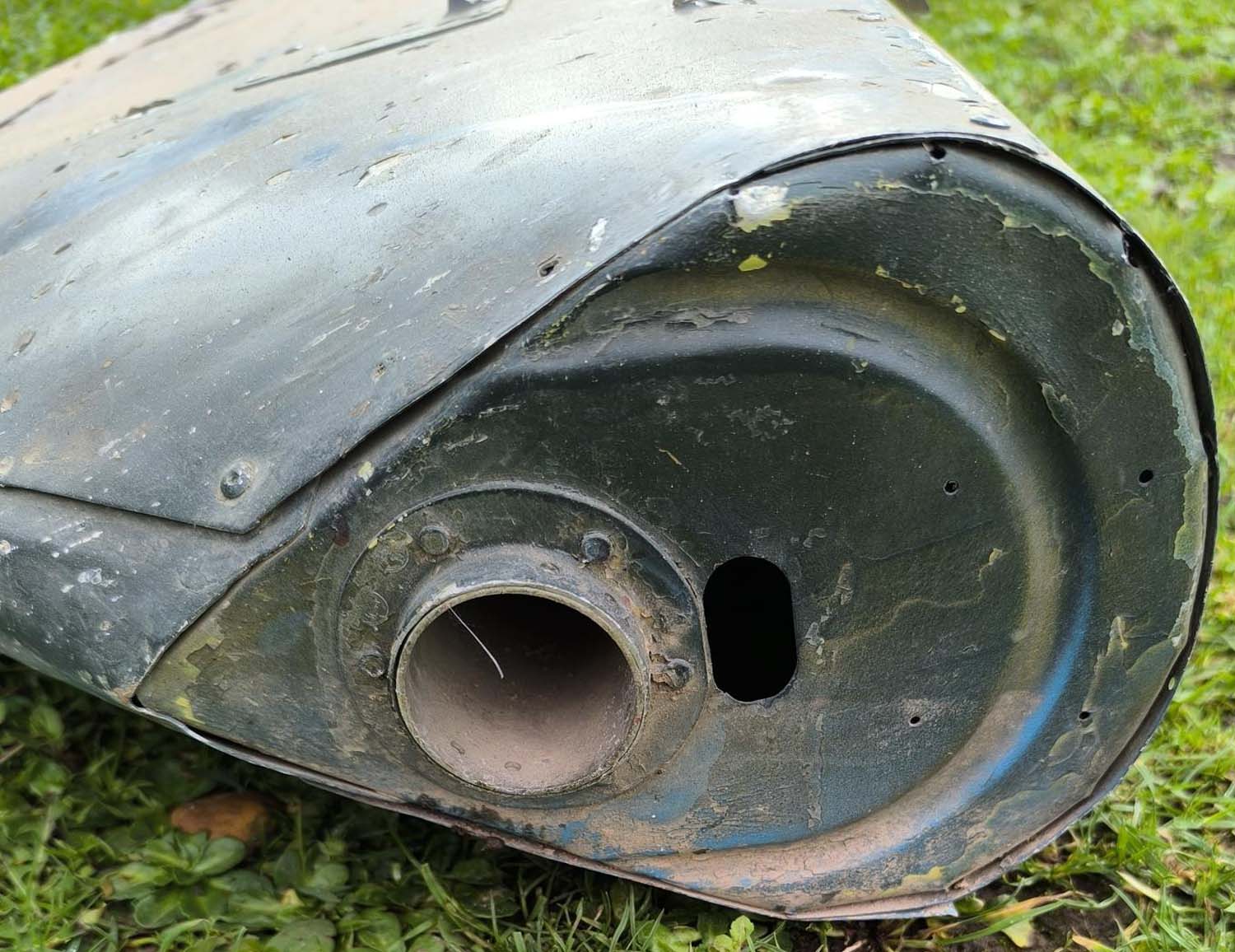
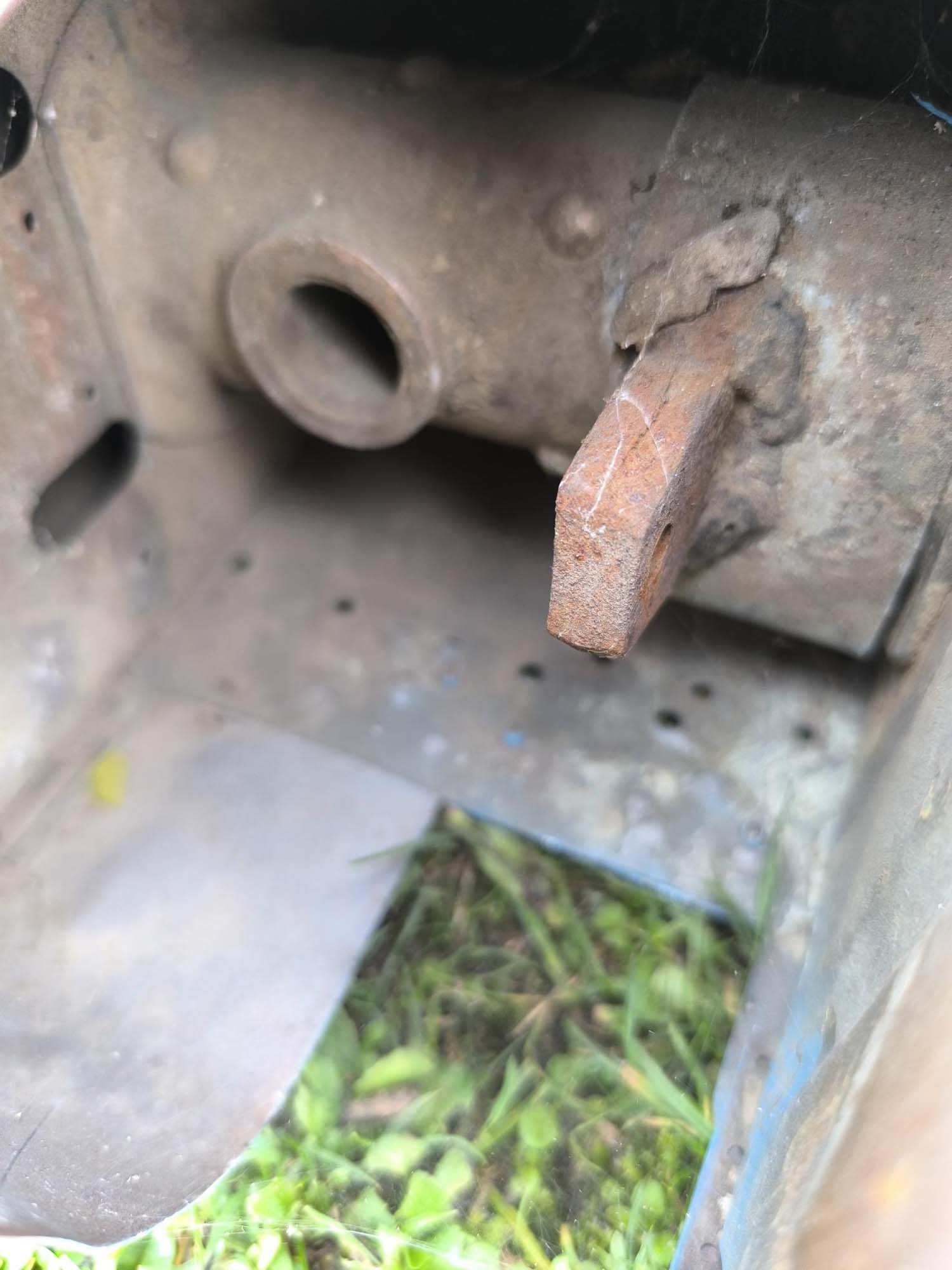
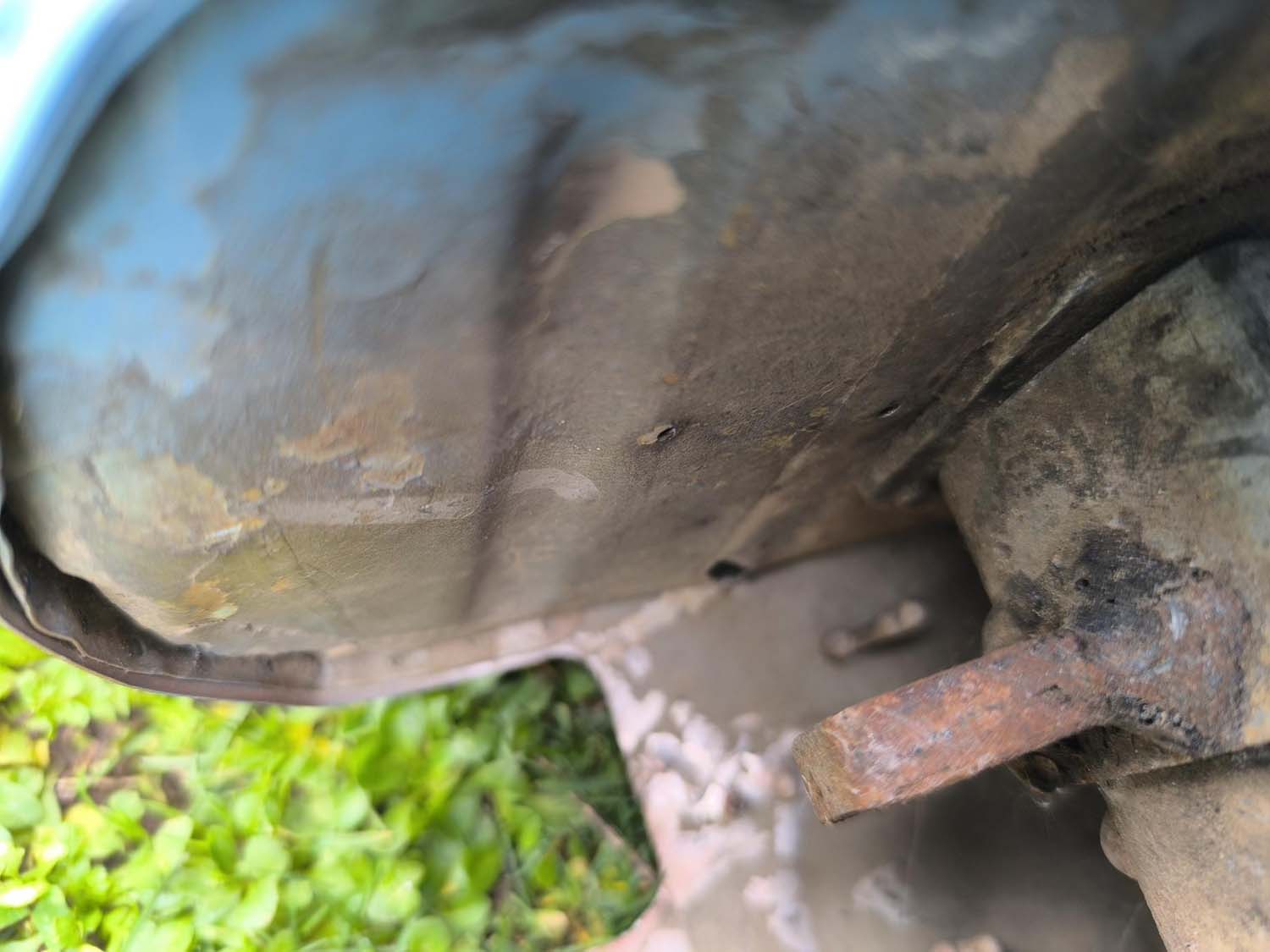
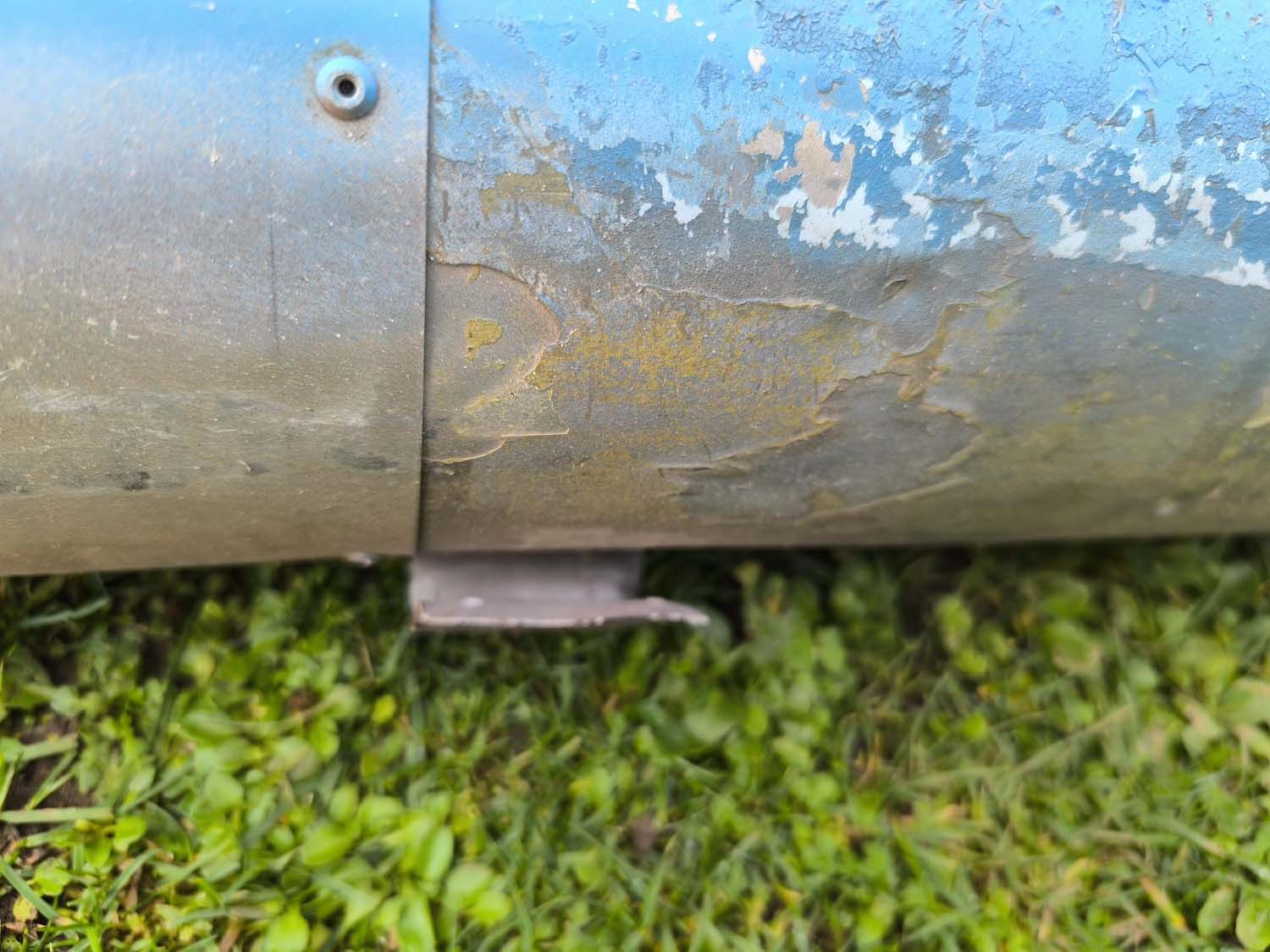
|
Rudder (pg1 air)
Here we
have a rudder Approximately 83cm at its
widest point, and 150cm long. Looks very much like a
Spitfire rudder but not quite. It seems to be a mix of
original parts and new made , I am pretty sure its not from
a flying aircraft. It would however make a great wall hangar
or subject for nose art.
Click on pictures to enlarge
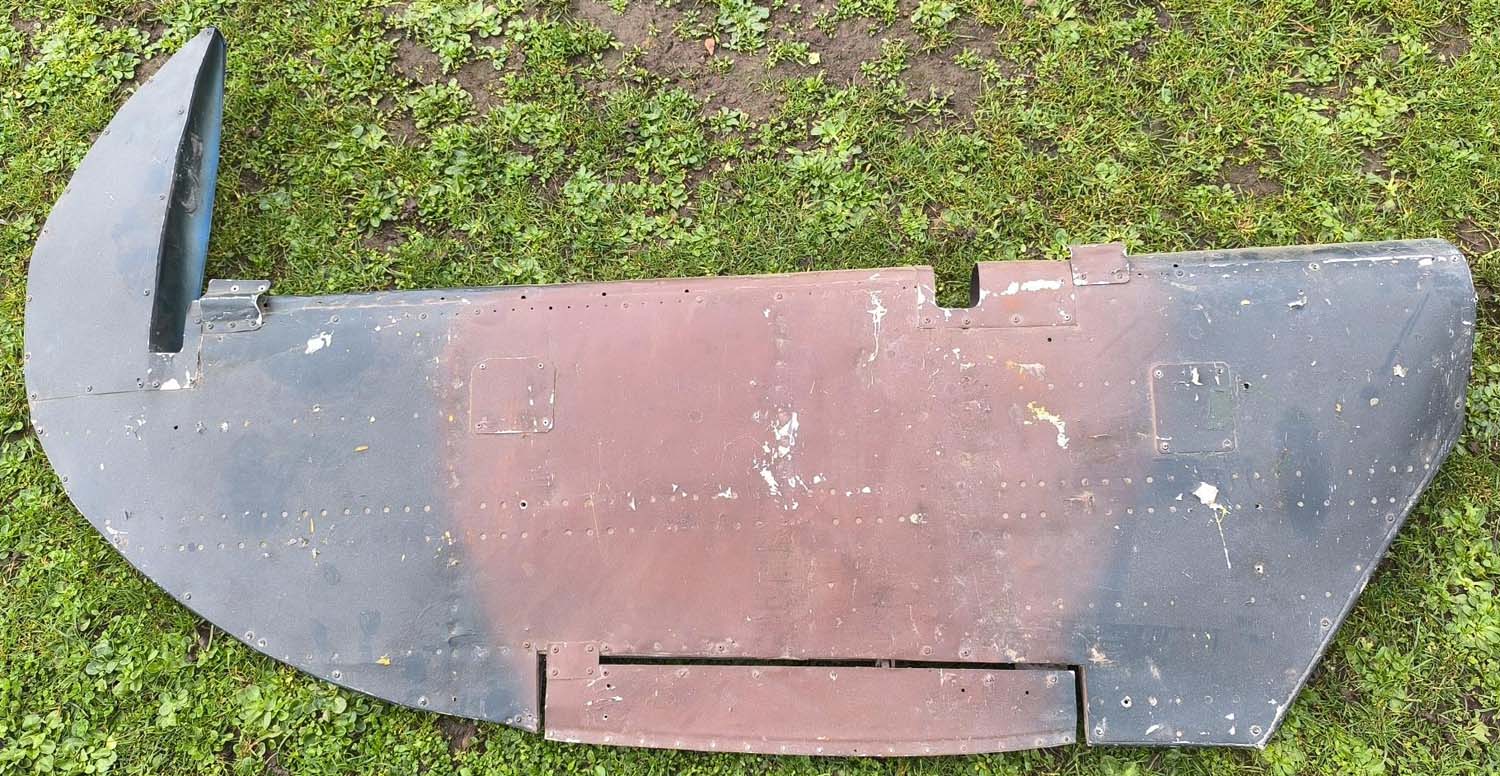

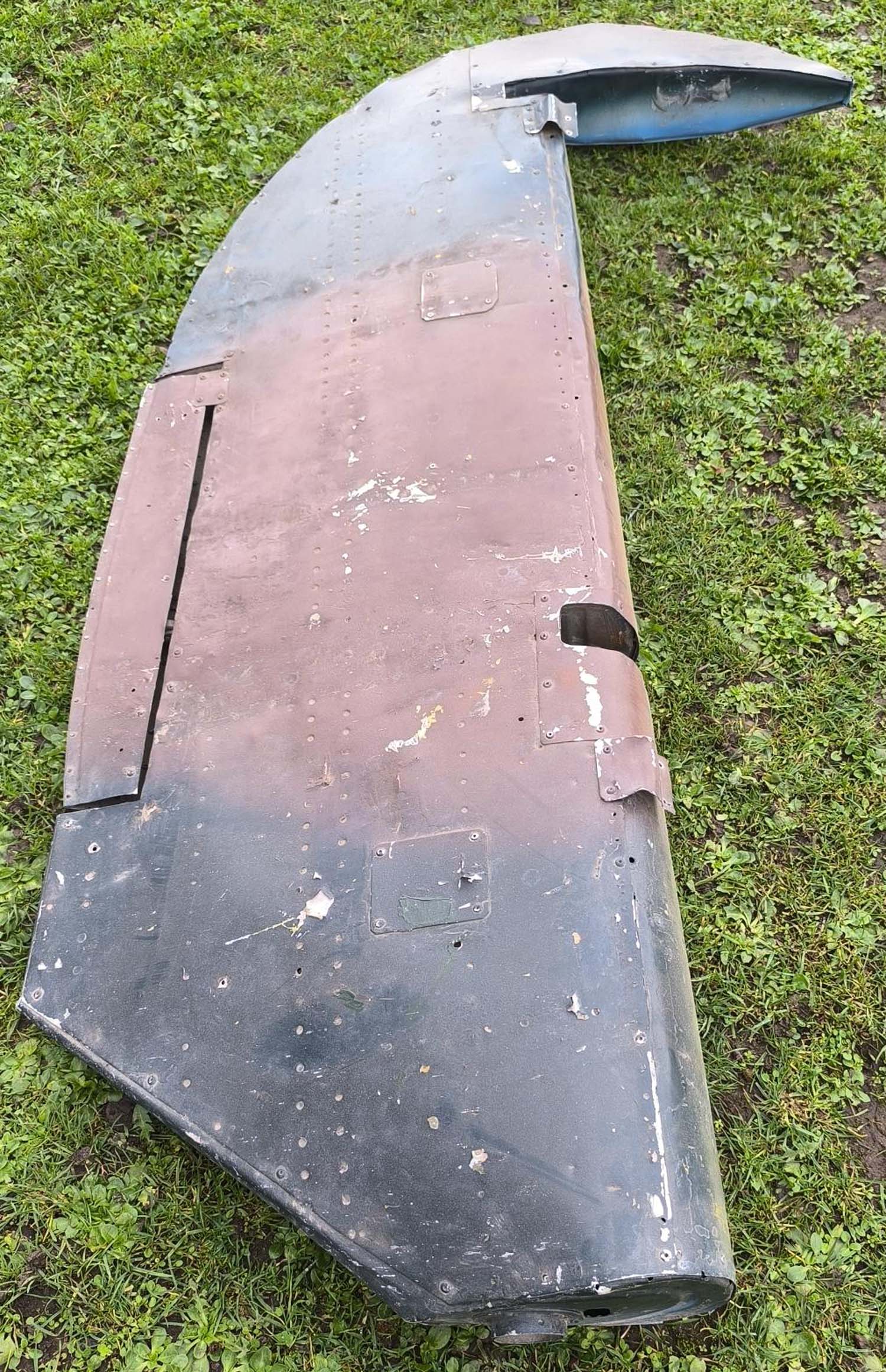
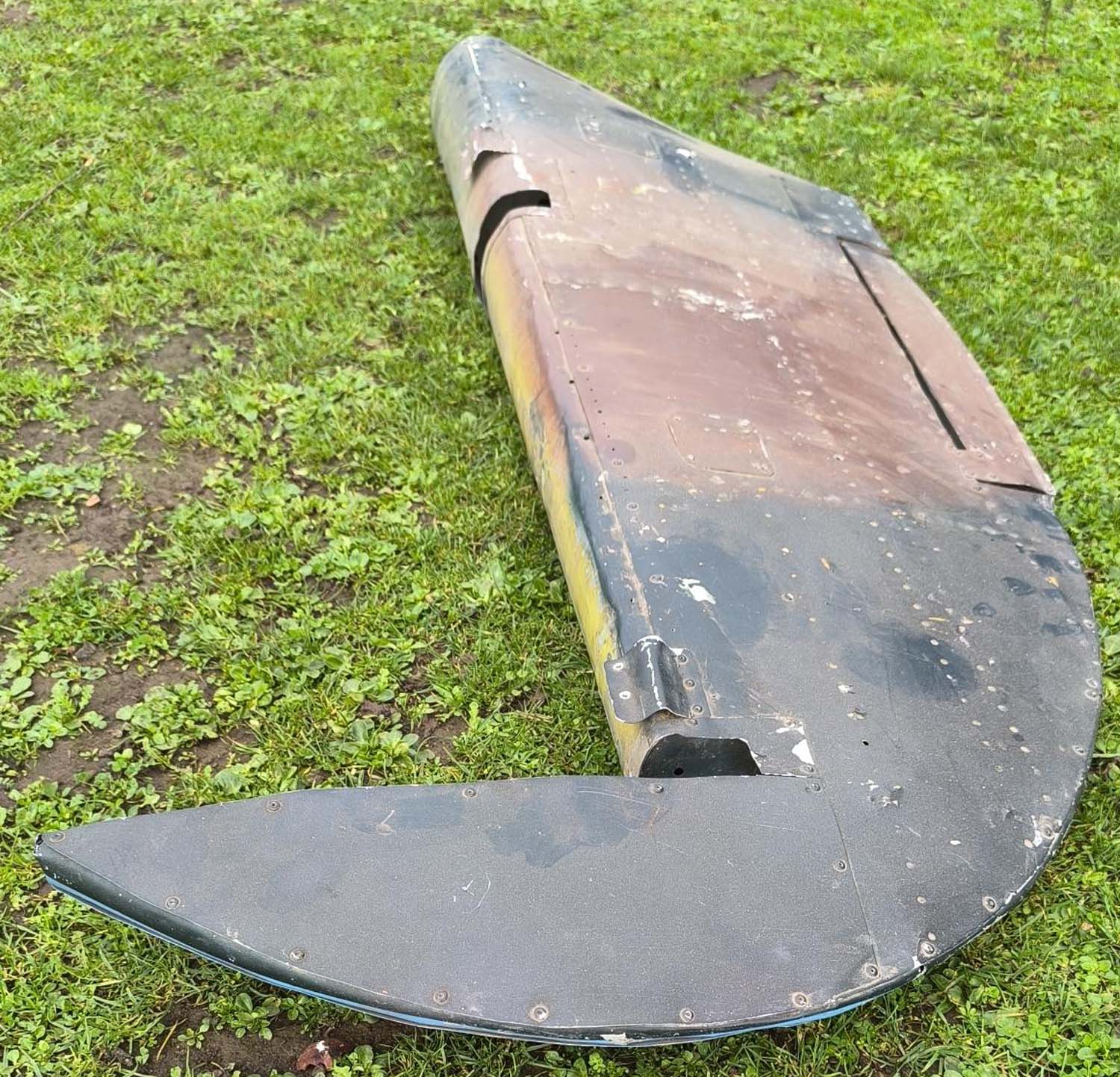
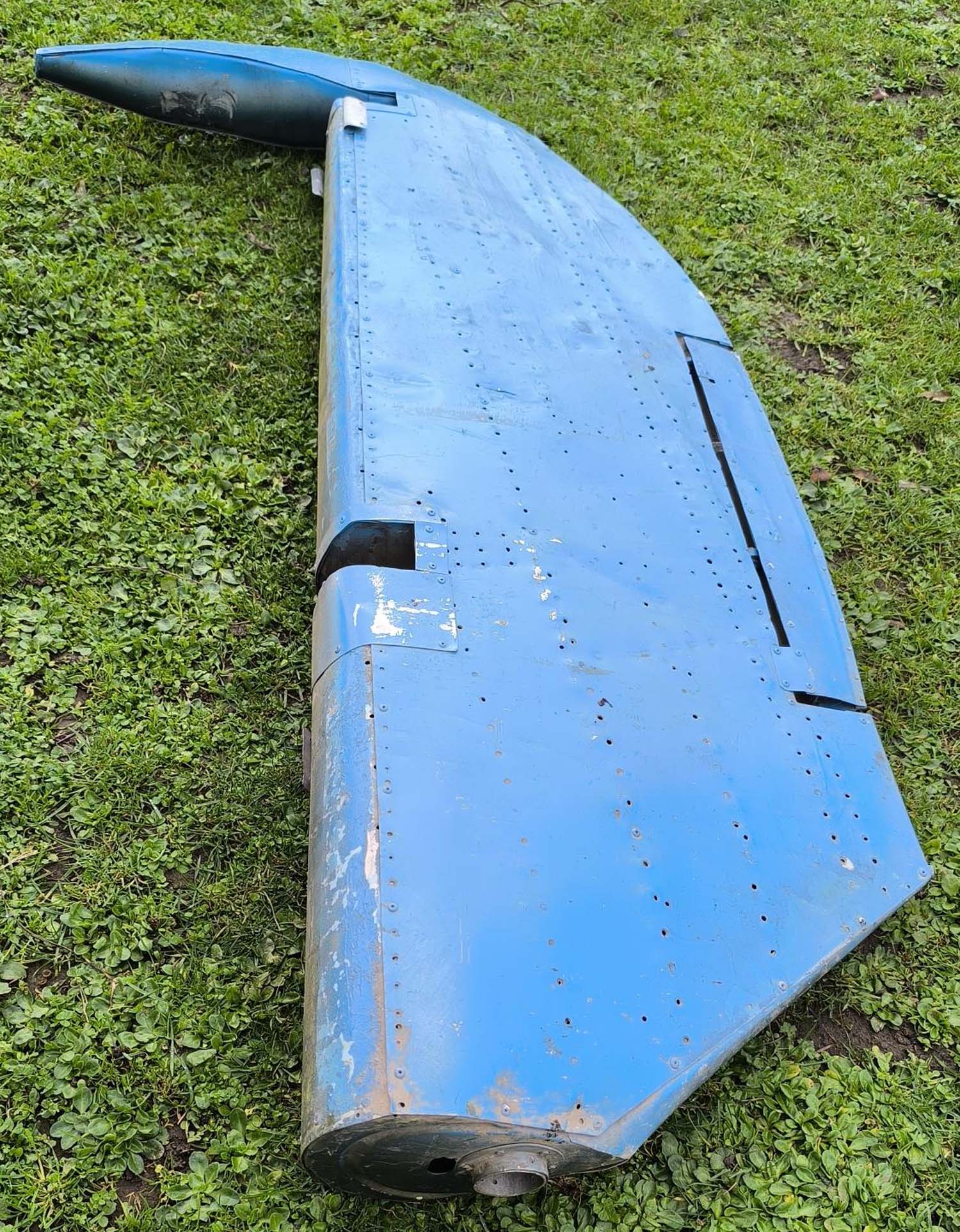

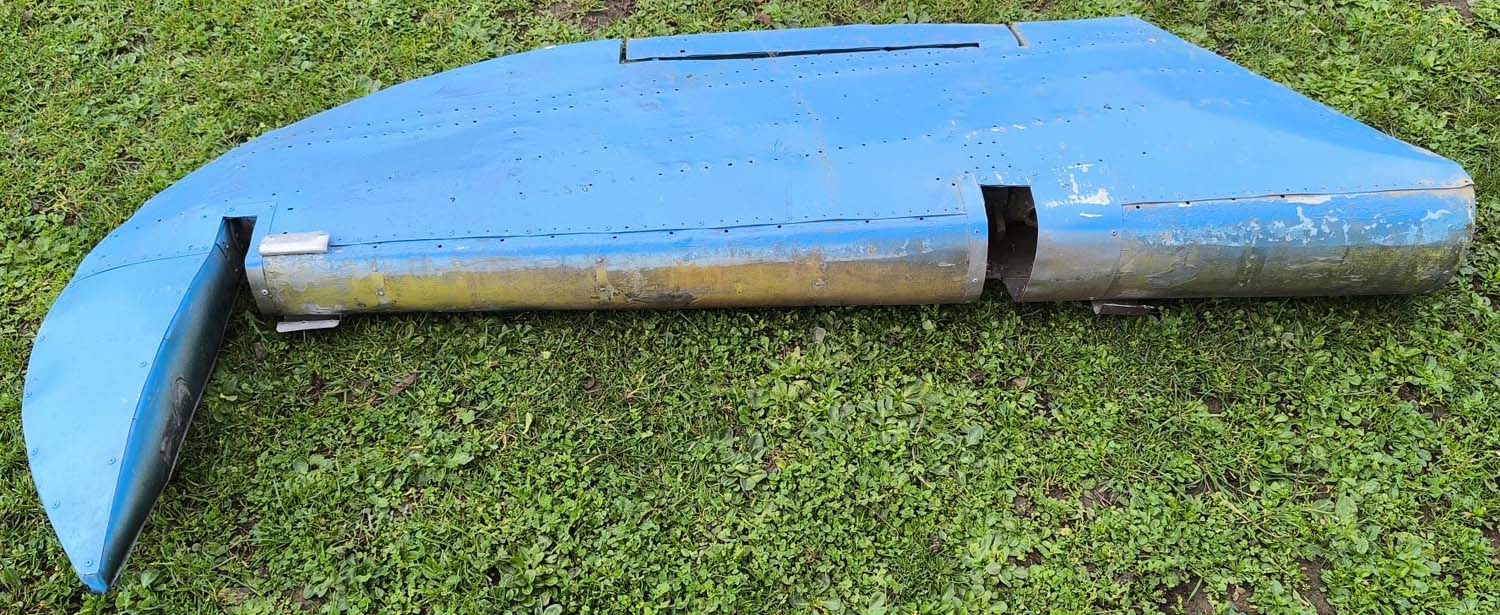
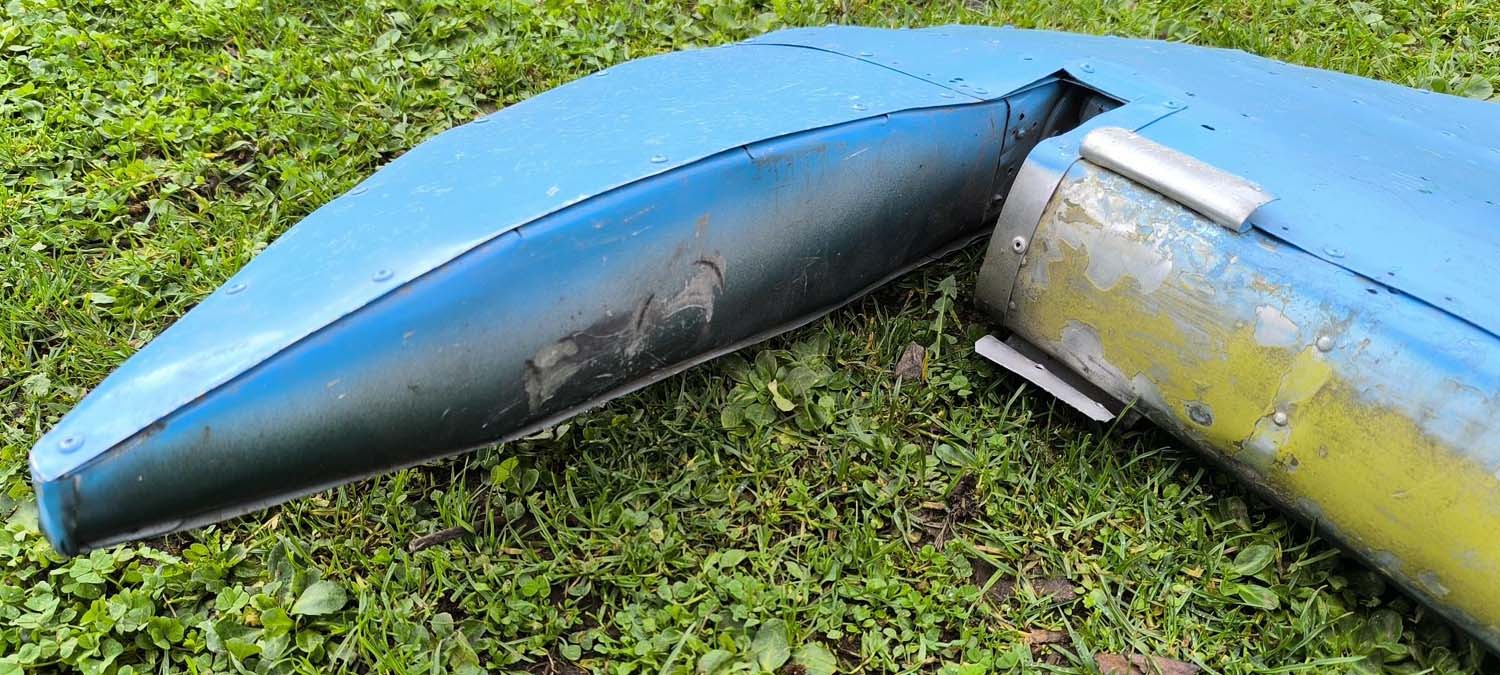
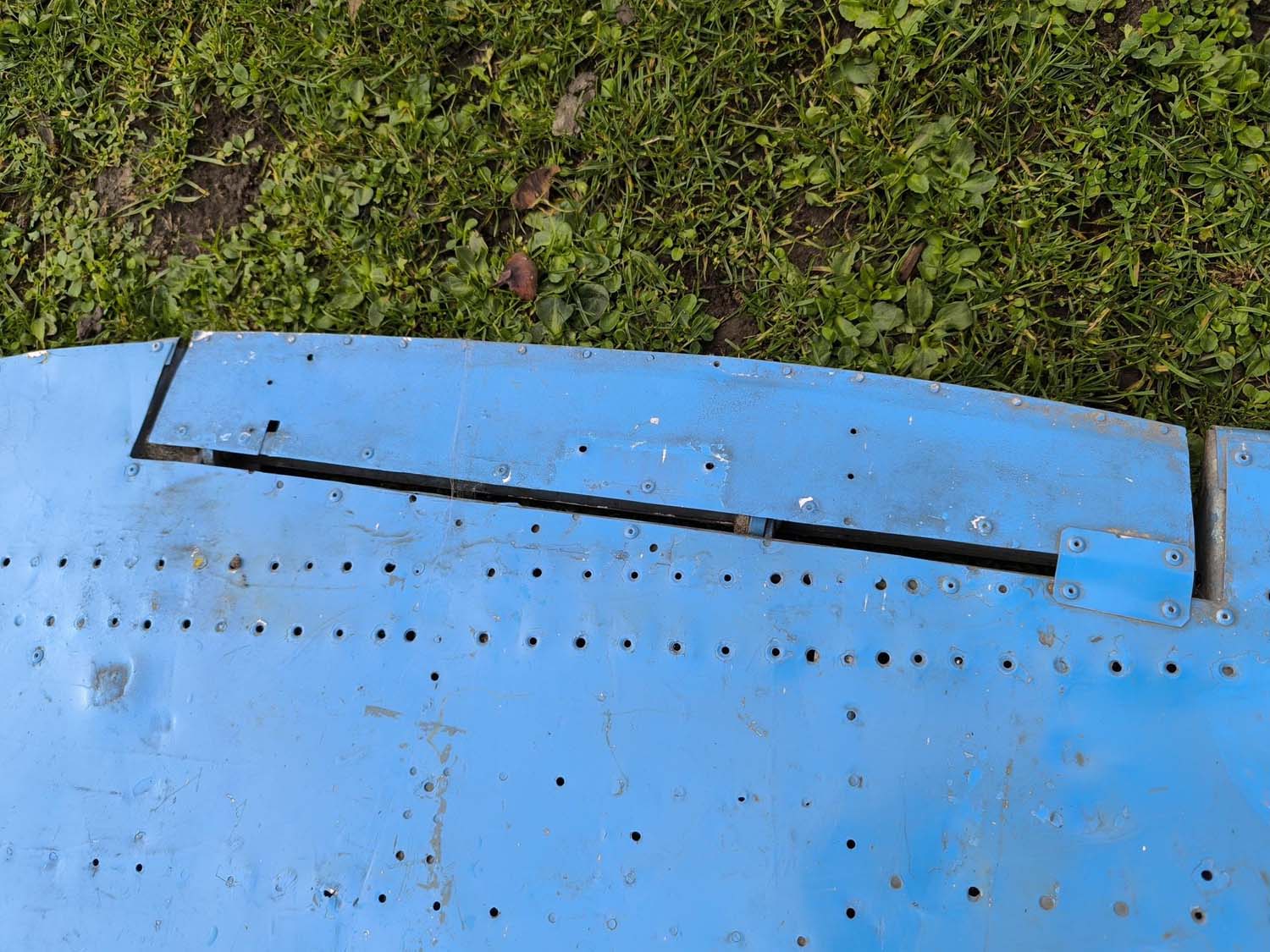
£295


This is
large piece, please
contact us for an
international shipping
quote.
|
|
Click on pictures to enlarge
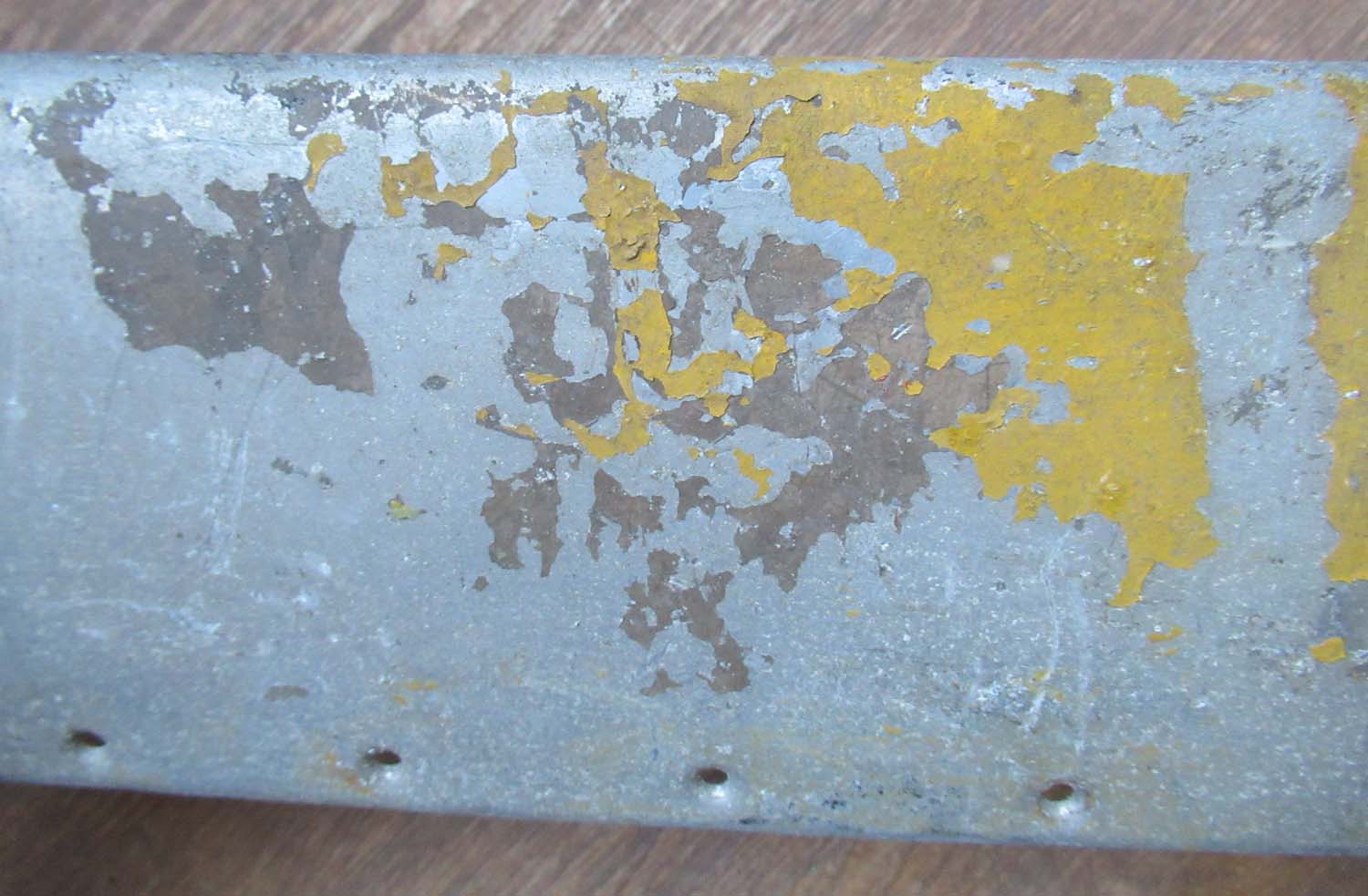
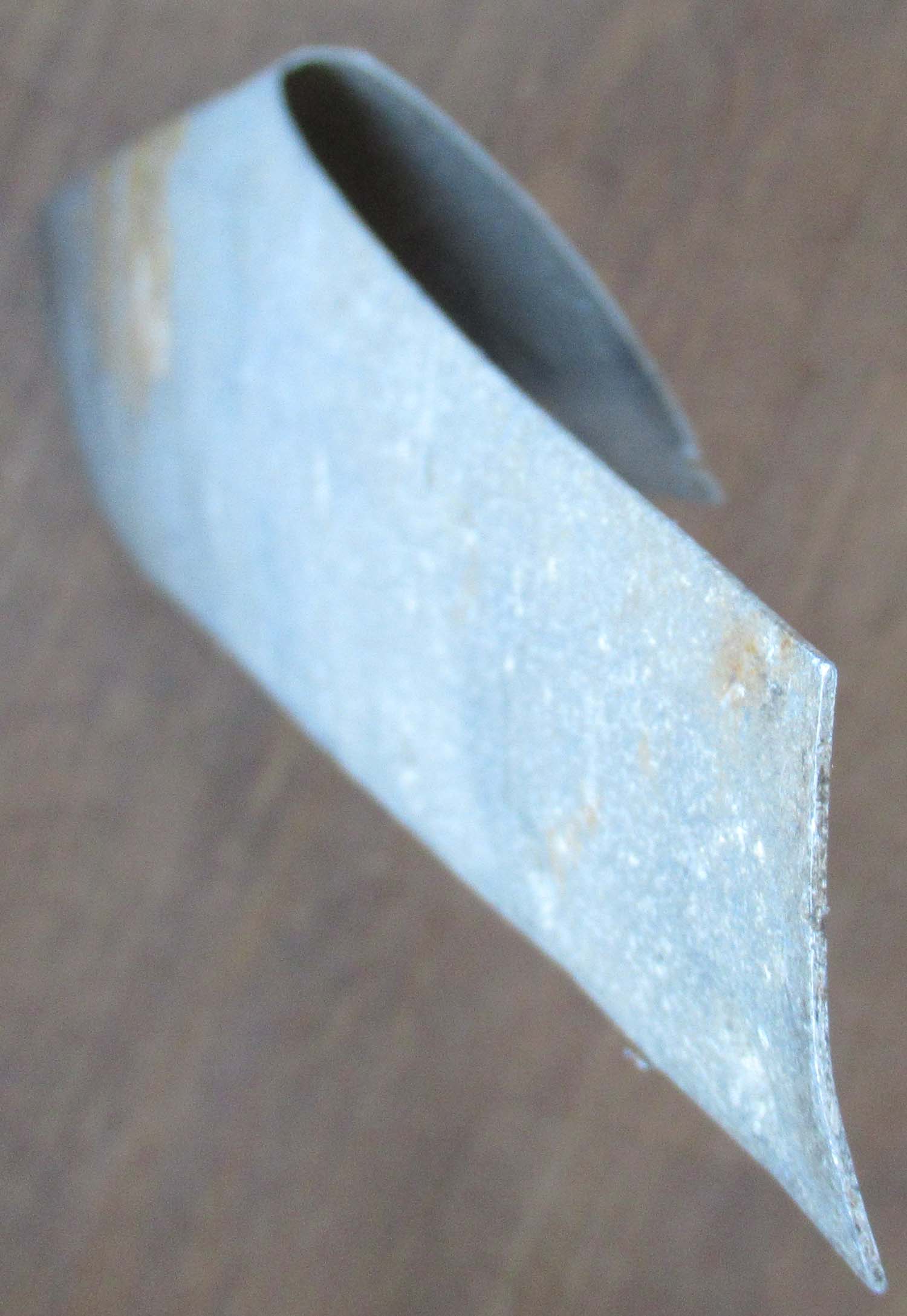
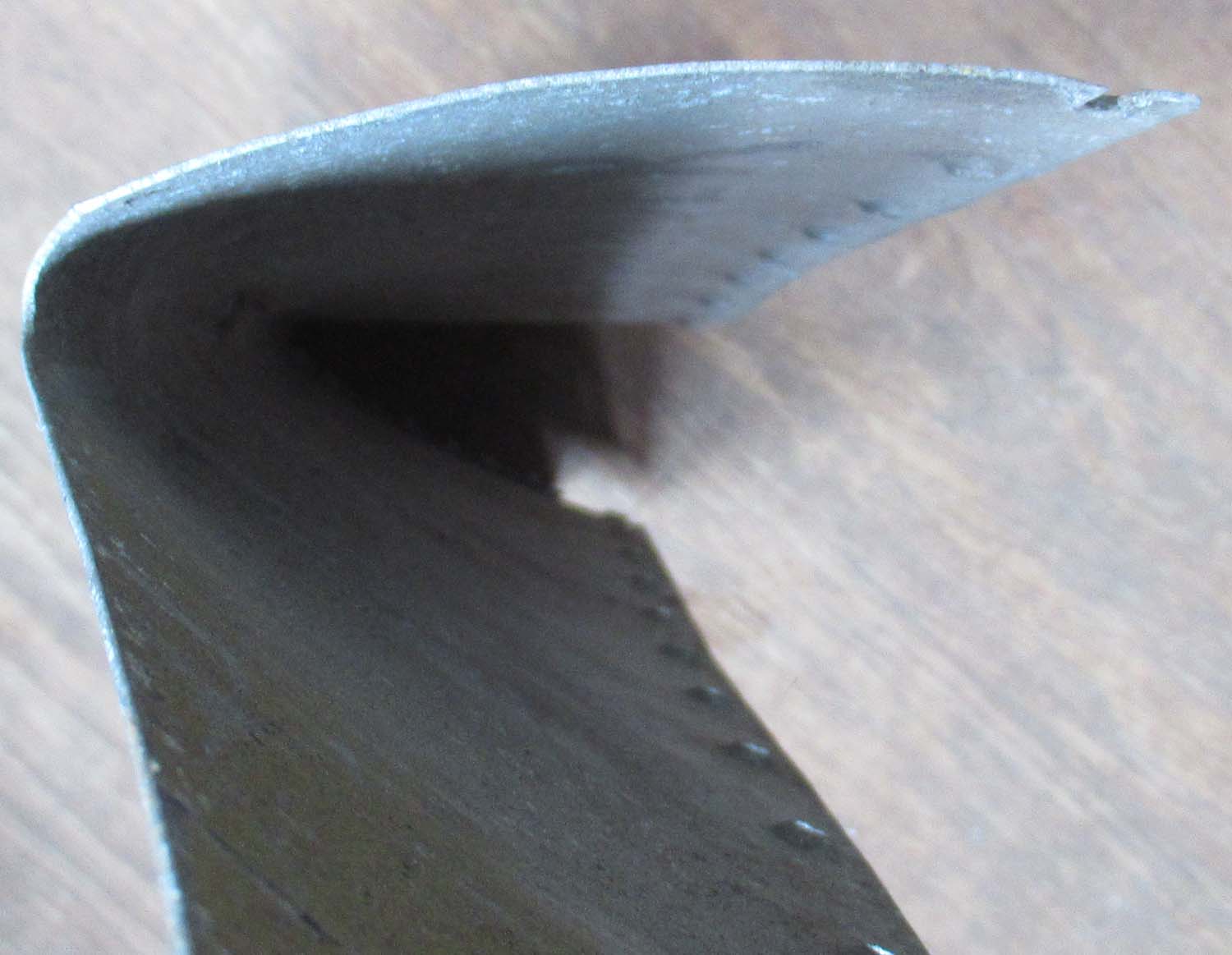


|
Lysander Wing
Leading Edge (pg1 air)
Here we
have a piece of the wing leading edge from a Lysander.
Parts from this aircraft almost never appear.
We have a collection of Lysander parts that make
up the main components of the cockpit. If anyone was
thinking of building a cockpit these are the parts you need.
I cannot stress how hard to find these parts are in all the
20 plus years I have been collecting and trading I have only
seen small parts of this aircraft.
Currently
we also have a prop spinner, complete control column
assembly with original spade grip and substantial mounting
cross member and the engine mounting plate , these are all
listed in their relevant categories.
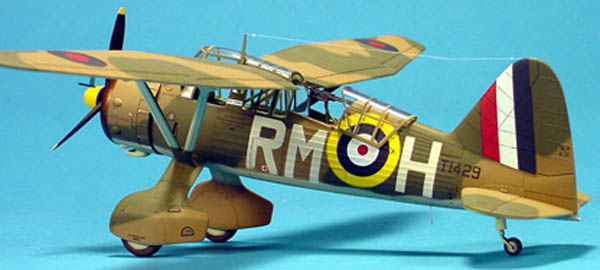
The Westland Lysander is a
British army co-operation and liaison aircraft produced by
Westland Aircraft that was used immediately before and
during the Second World War.
After becoming obsolete in the army co-operation role, the
aircraft's short take off performance enabled clandestine
missions using small improvised airstrips behind enemy
lines to place or recover agents, particularly in occupied
France with the help of the French Resistance.
During the Battle of Britain
this amazingly versatile aircraft was fitted with 20mm
cannons mounted on the undercarriage as the RAF were short
of ground attack aircraft in the event of an invasion.
Approximately 70.5 cm at its longest point.
Click on pictures to enlarge

£225


|
|
Click on pictures to enlarge
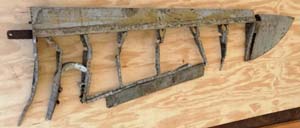
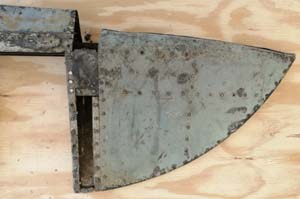


£595


|
Hawker Typhoon Elevator (pg1 air)
Here is an elevator from a Hawker Typhoon. Great
piece, approximately 179 cm in length.
Click on pictures to enlarge
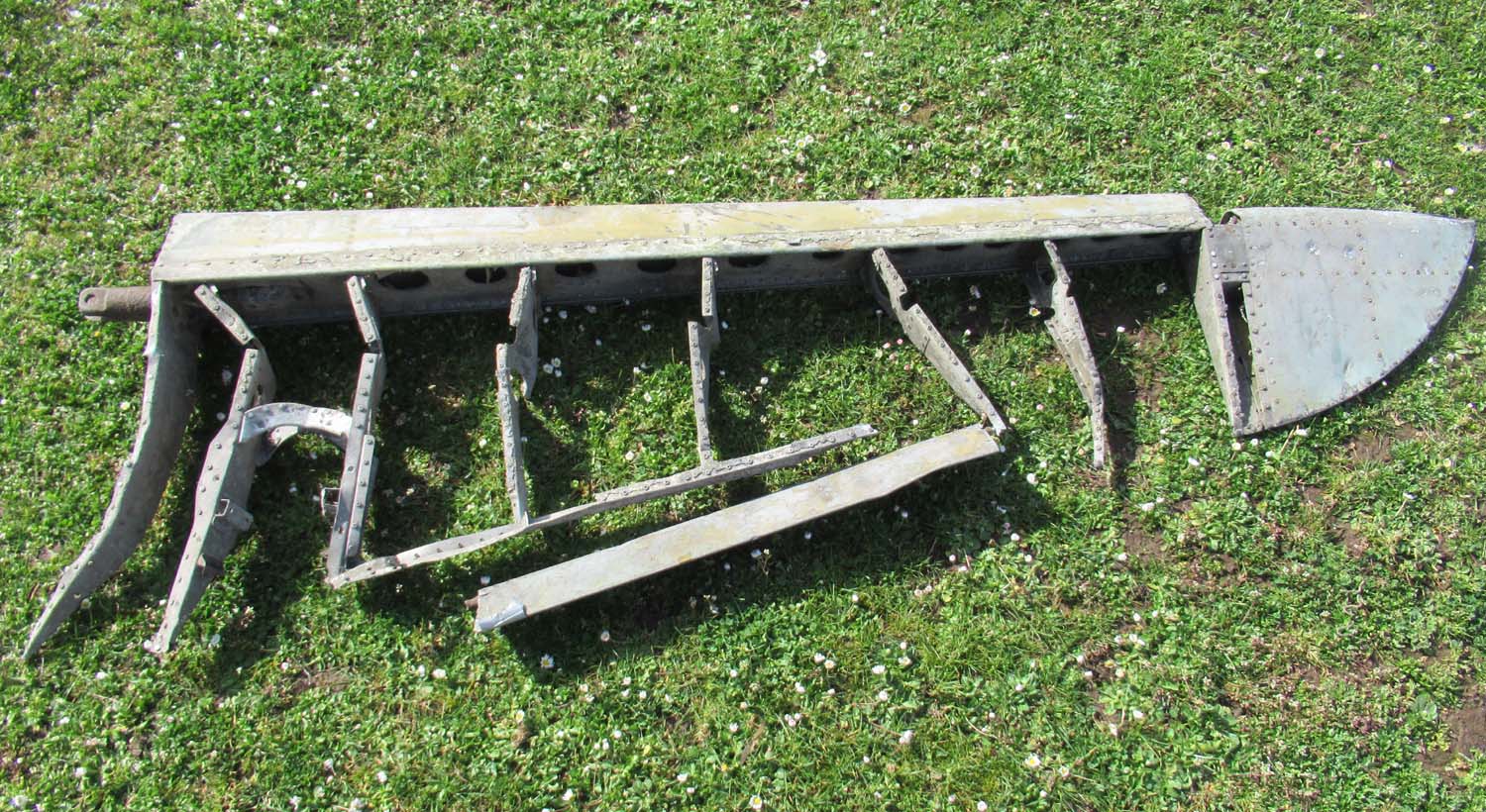
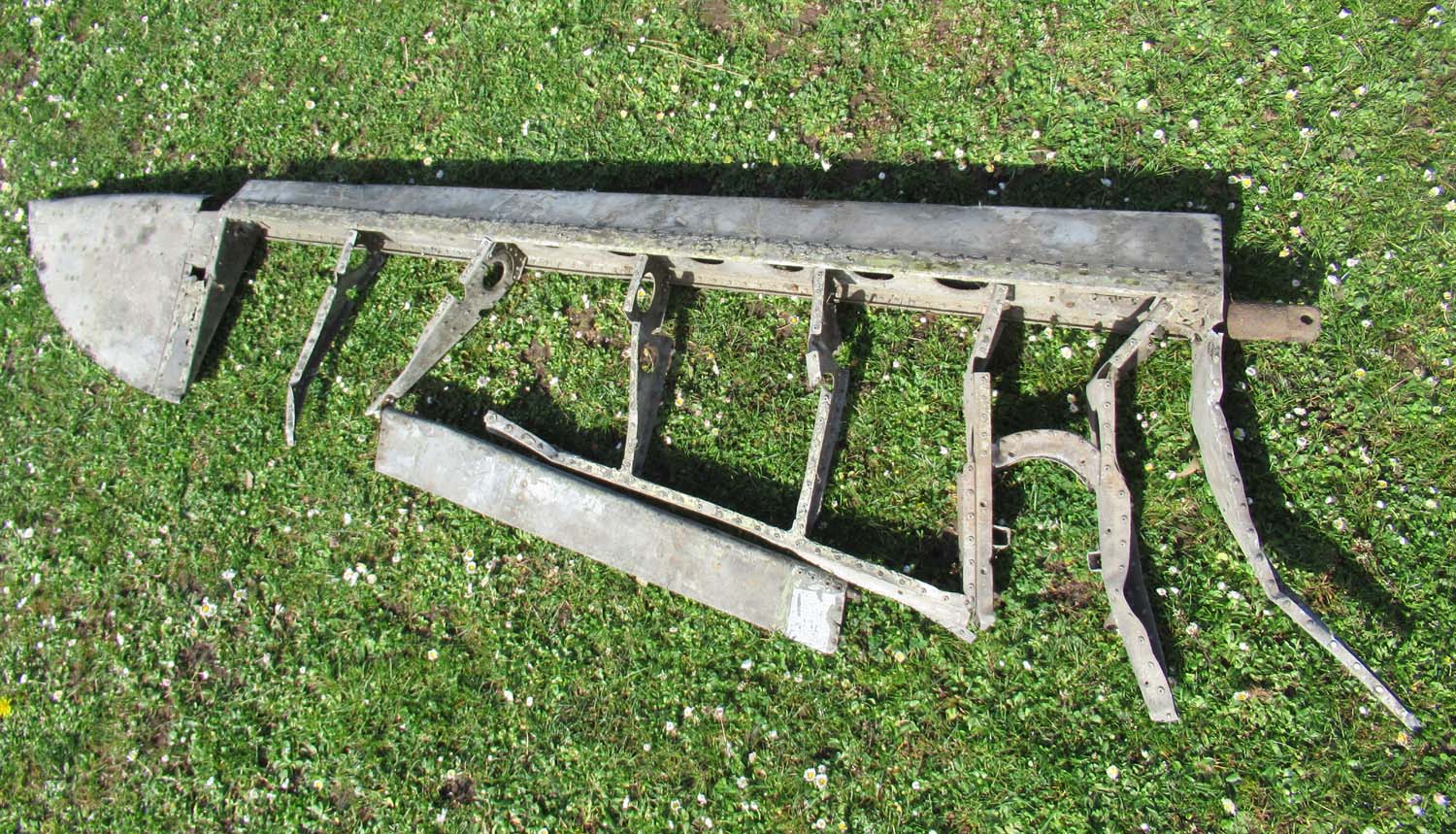
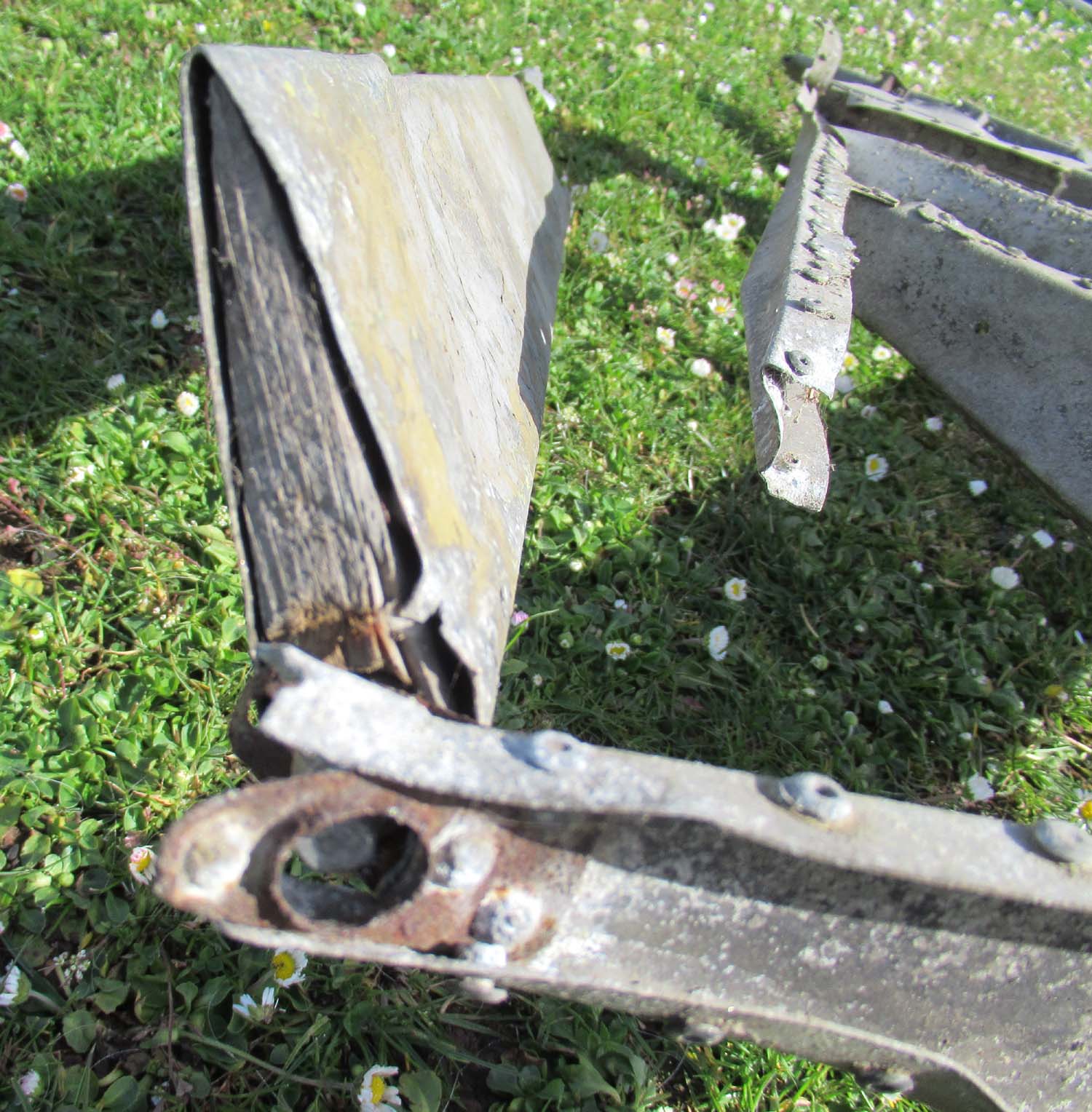
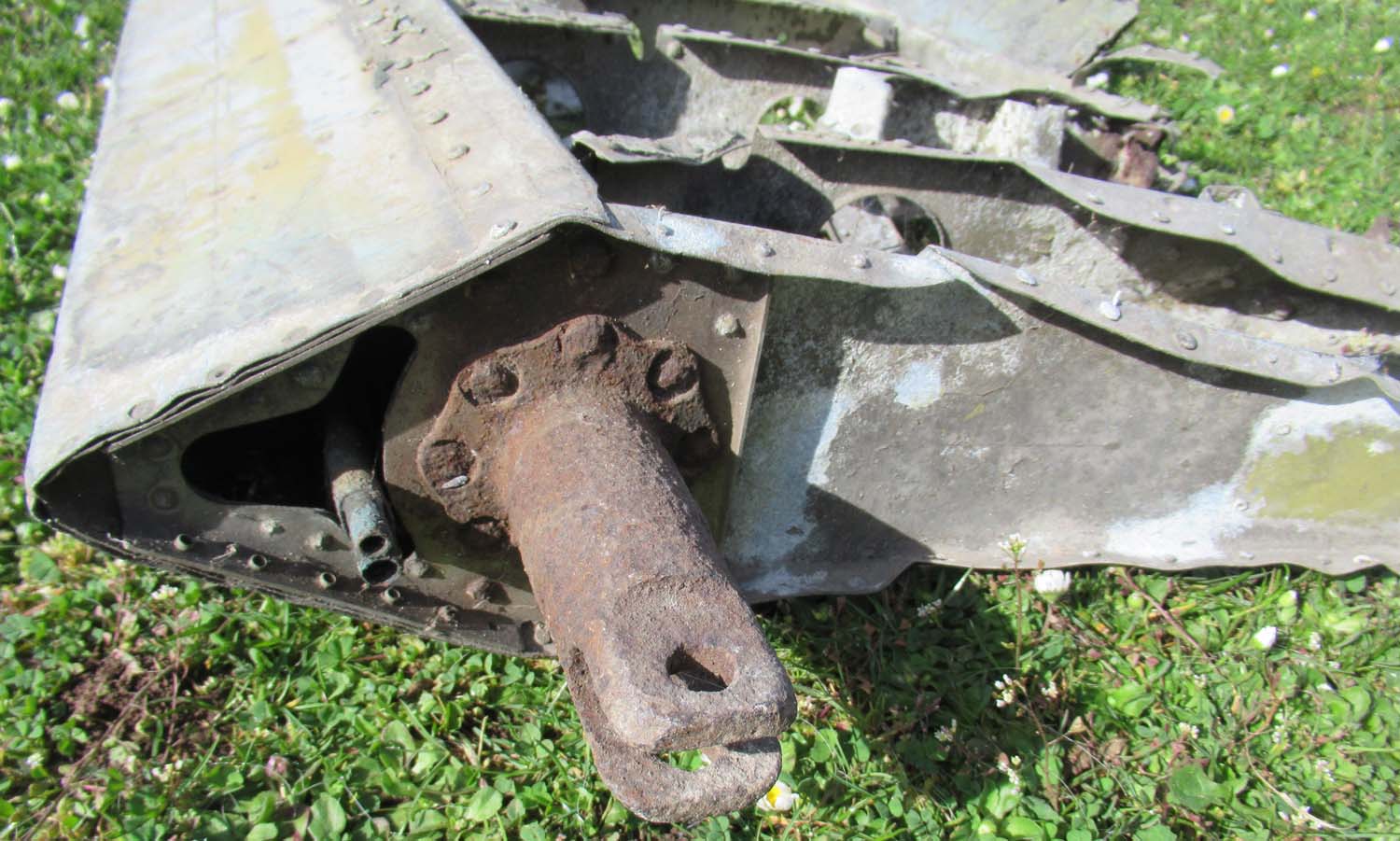
This piece is
large and heavy, please
contact us for an
international shipping
quote.
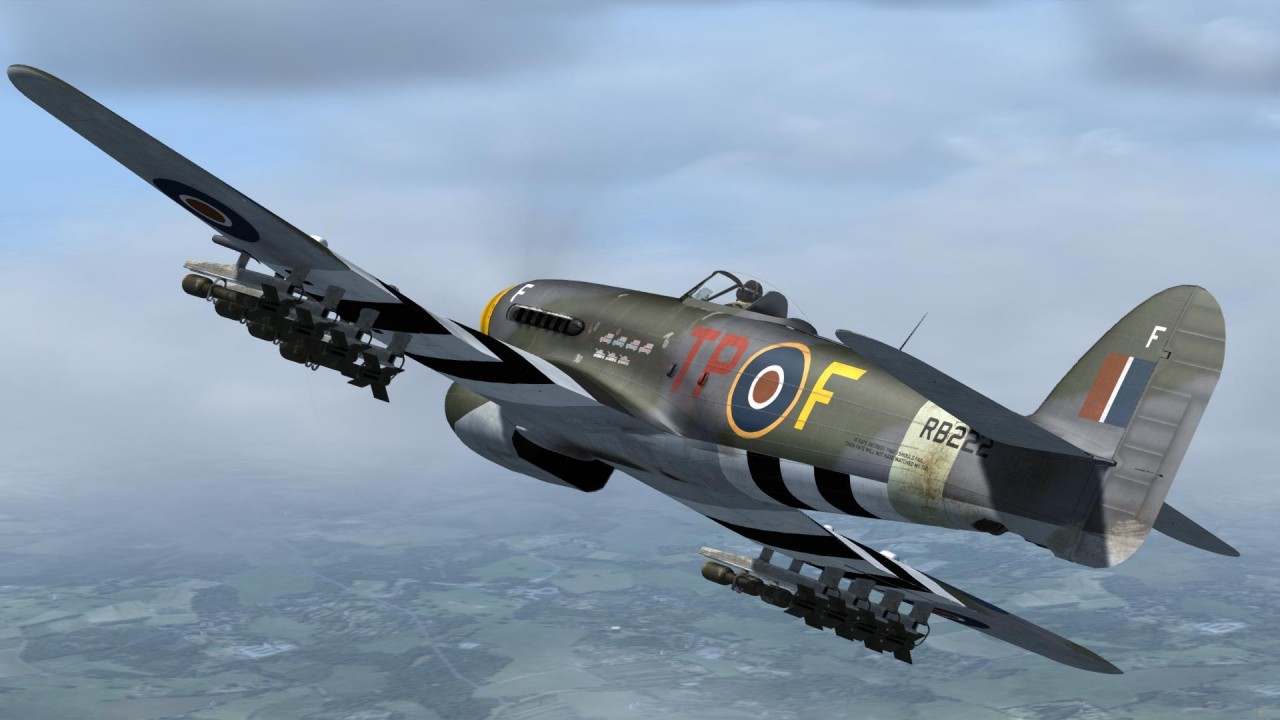
|
|
Click on
the pictures to enlarge
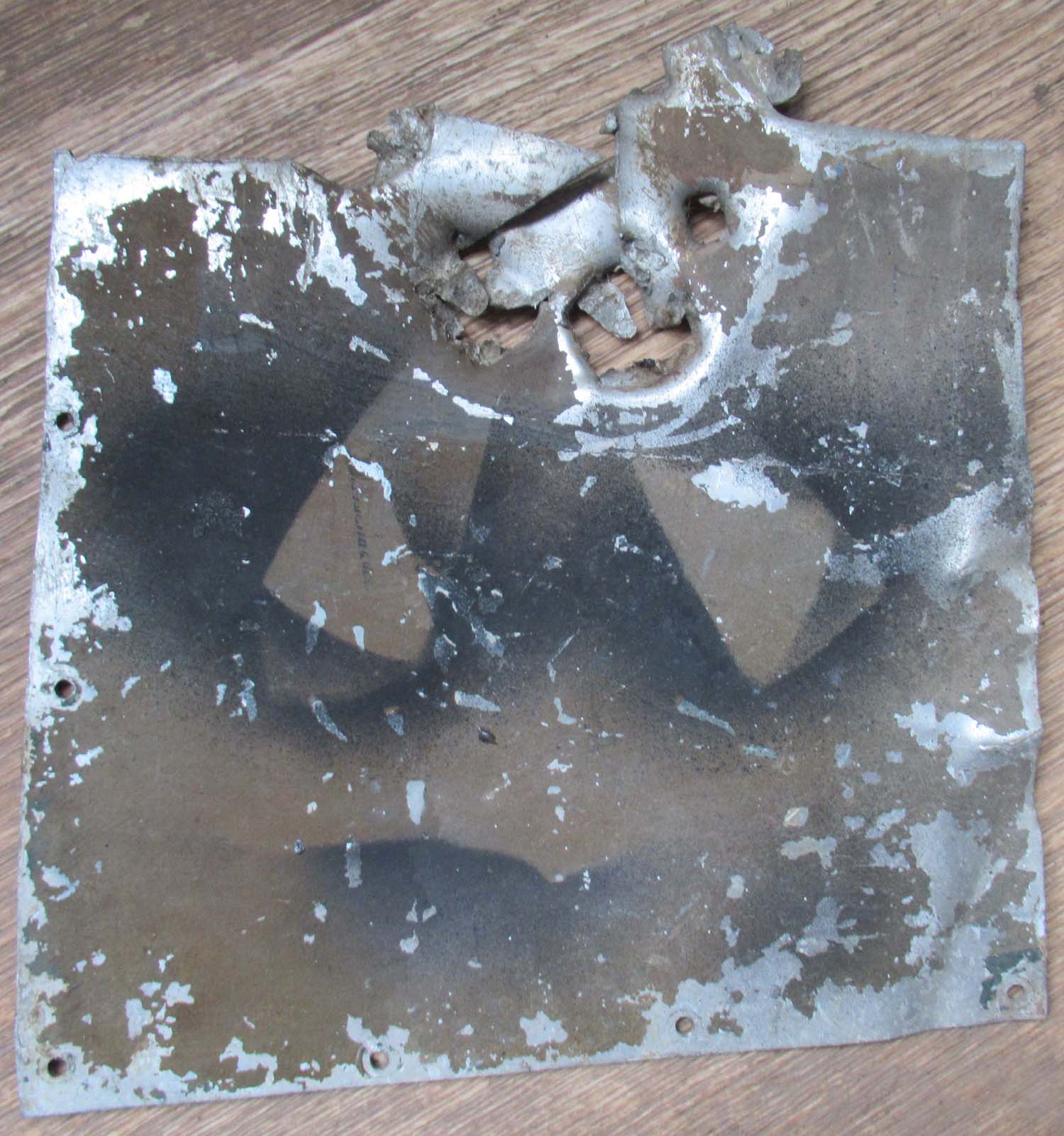
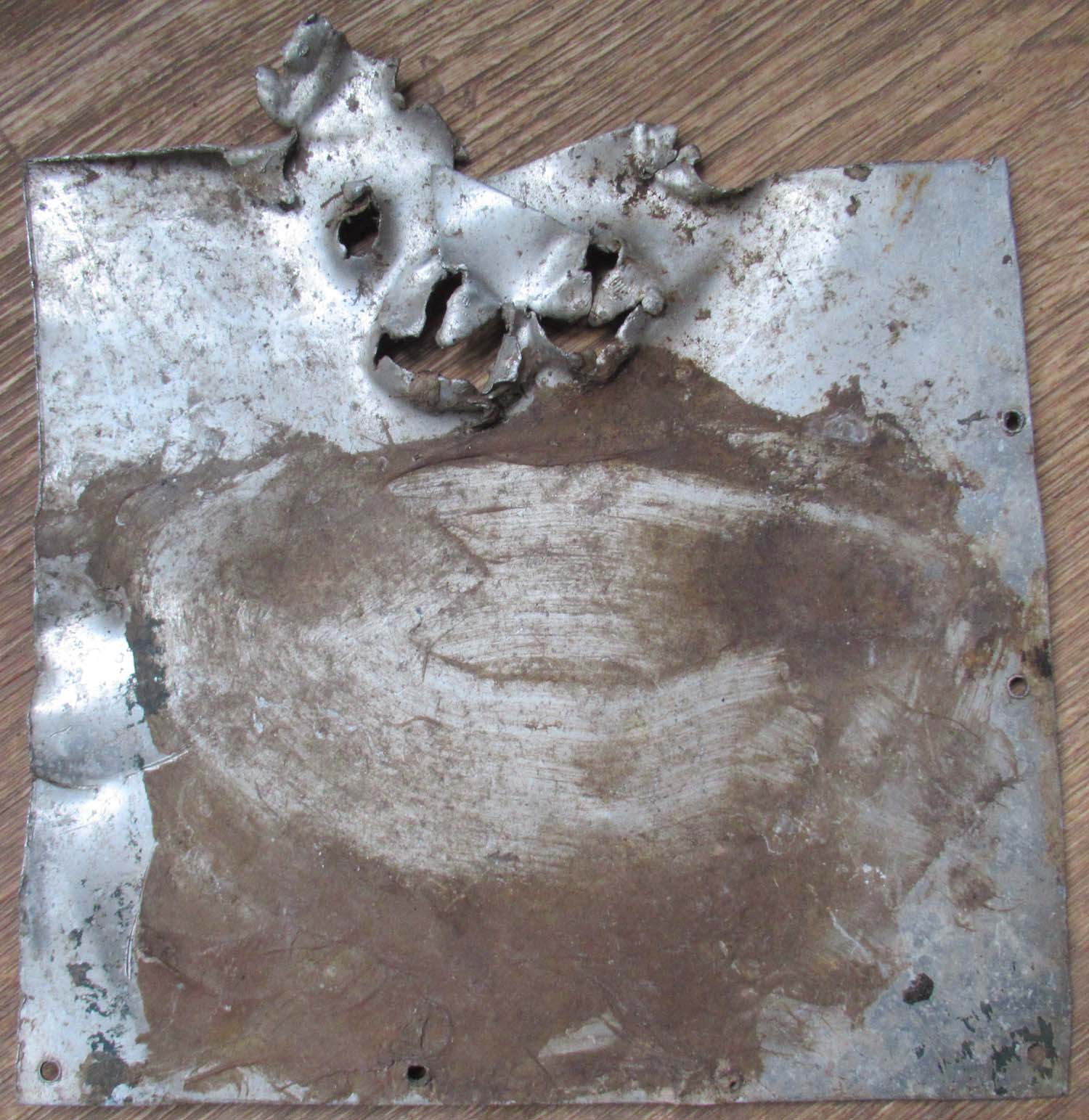
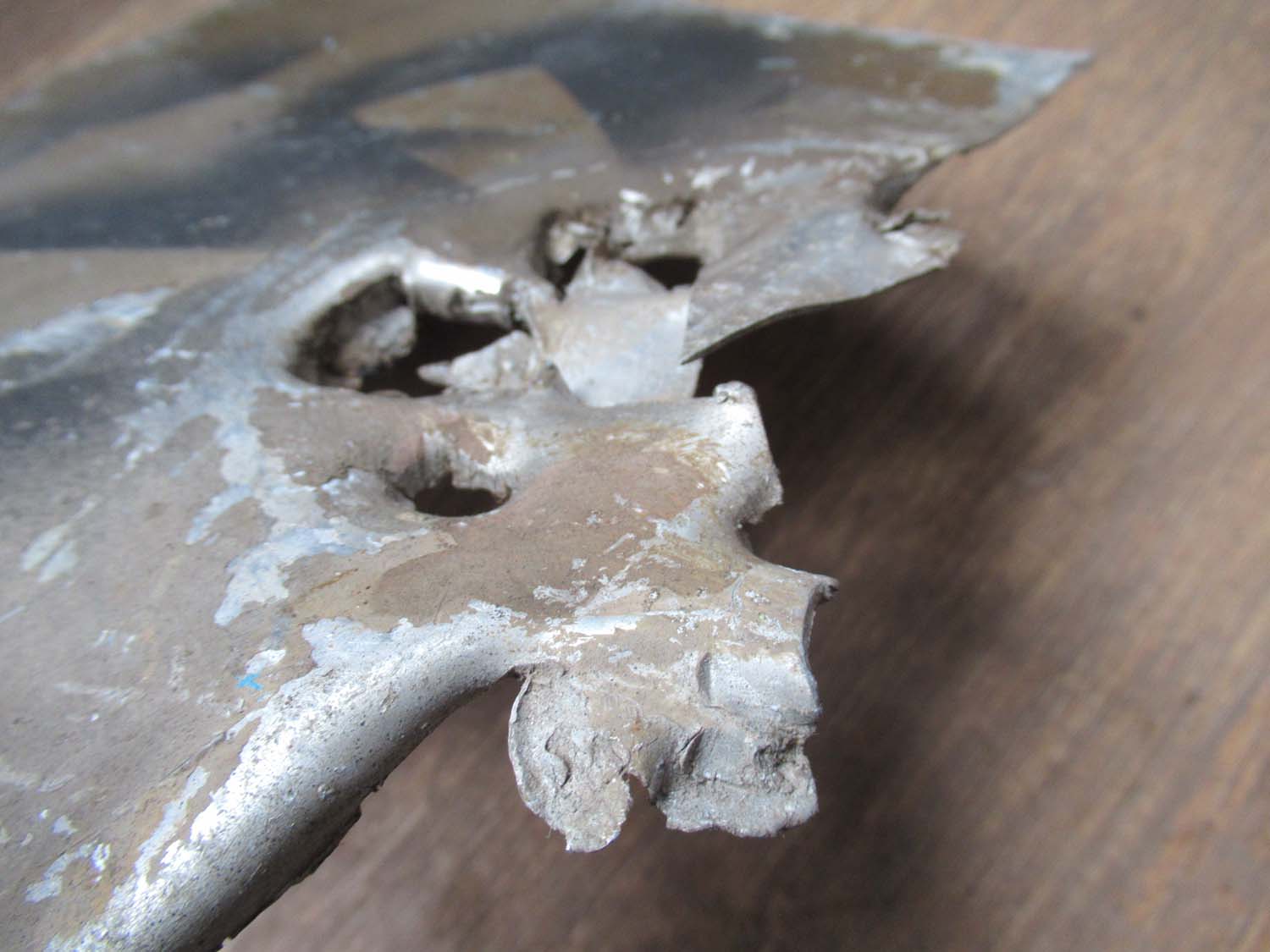 |
Pearl Harbour Film prop Flap (pg1 air)
Many many
years ago our Replica Spitfire was used in the Film Pearl
harbour, to simulate battle damage they made aluminium
plates to go on the fuselage.
All the
special effects were done at Pinewood studio.
Here is one of those plates
with simulated bullet holes. Why was a Spitfire in Pear
Harbour Film , the answer is they showed scenes from the
Battle of Britain representing an American Eagle Squadron.
Michael
Bay was not to interested in accuracy as the
aircraft all had RF markings which in fact was from
the famous
303 Polish Squadron. I was on the film set during filming
quite an eye opener Michael Bay decided mine did not have
enough damage and proceeded to take a hammer to my new shiny
canopy!
No eagle
squadrons were actually involved in the Battle of Britain
although there were nine American Pilots serving in the RAF.
Regardless its a nice wall hangar.
Our
Spitfire was painted as RF-M in the film and Ben Affleck sat
in the cockpit..
There were
two aircraft painted with these markings a flyer and our
replica as clearly they were not allowed to simulate bullet
holes in a flying Spitfire.
There are
pictures on the internet one particular one shows two
aircraft together marked RF-M. You can see mine on the right
with four Prop blades with the flyer on the left.
Shown under
our Spitfire without the battle damage and painted in the
correct scheme for a MK IX this aircraft toured many shows
in the UK and is the only running static ever built with a
working Rolls Royce 27Ltr V12.
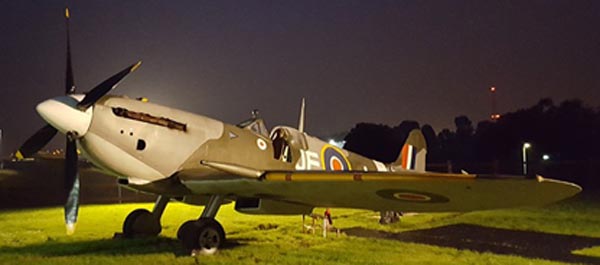
Out of
stock
|
|
Click on
the pictures to enlarge
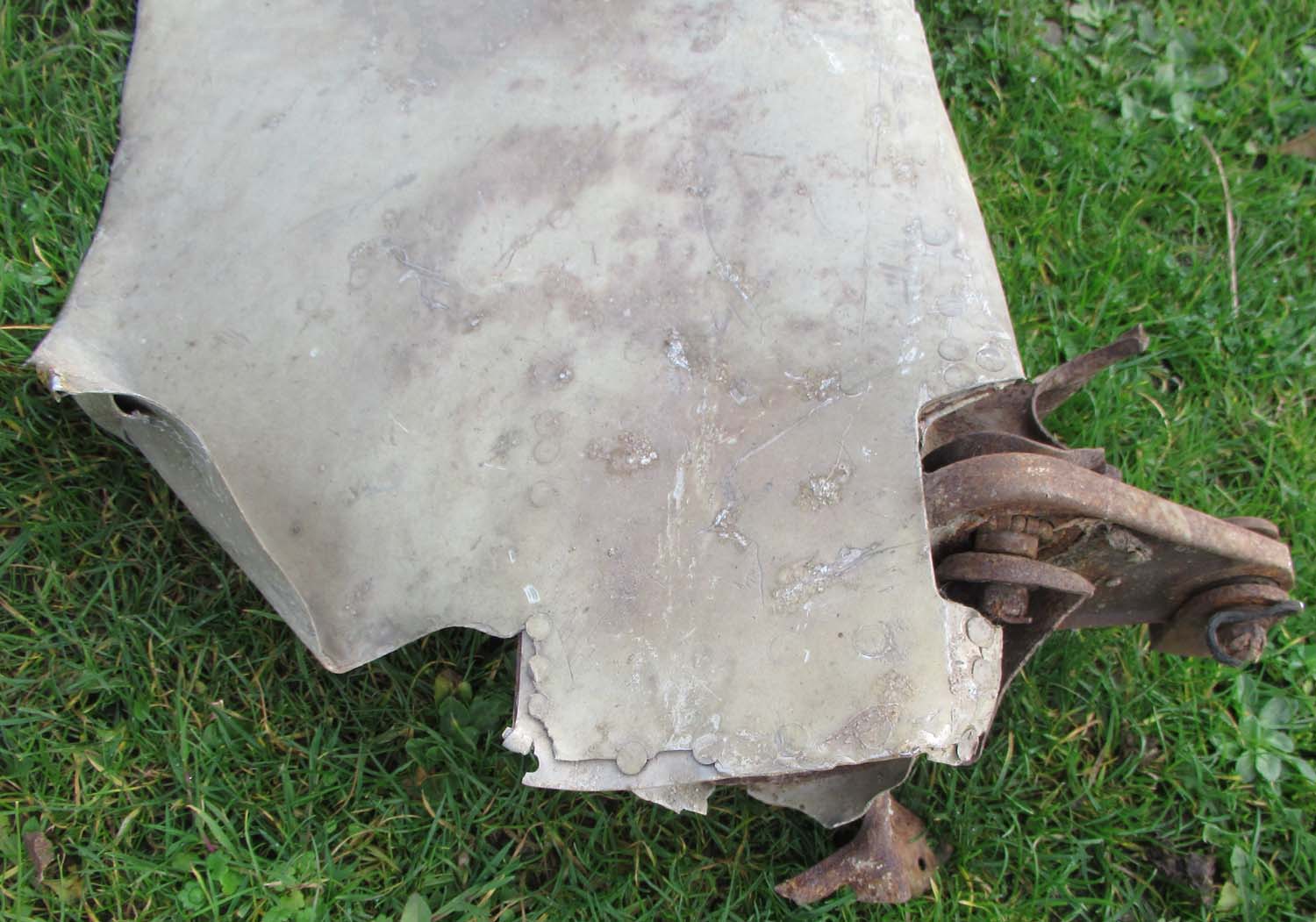
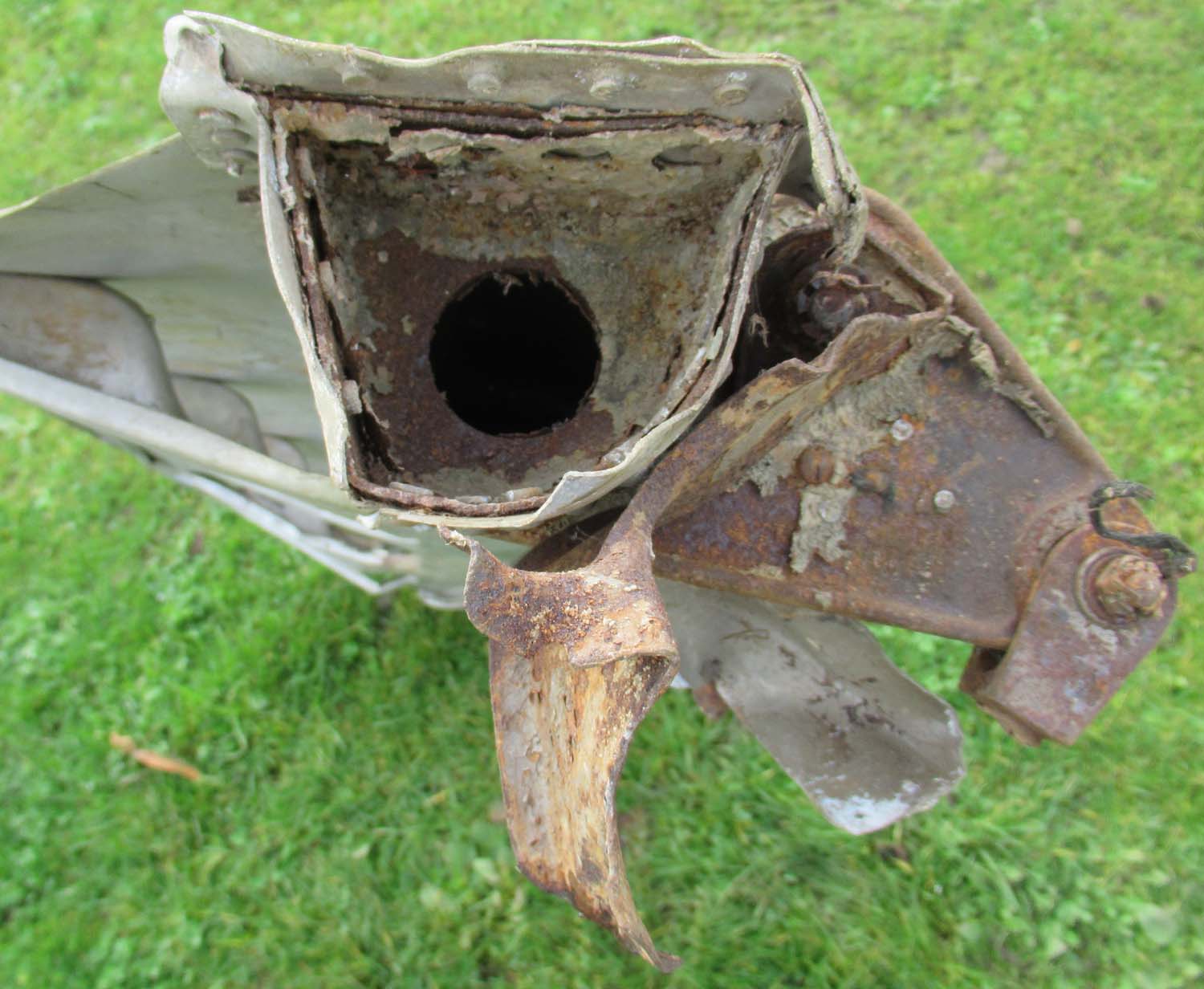
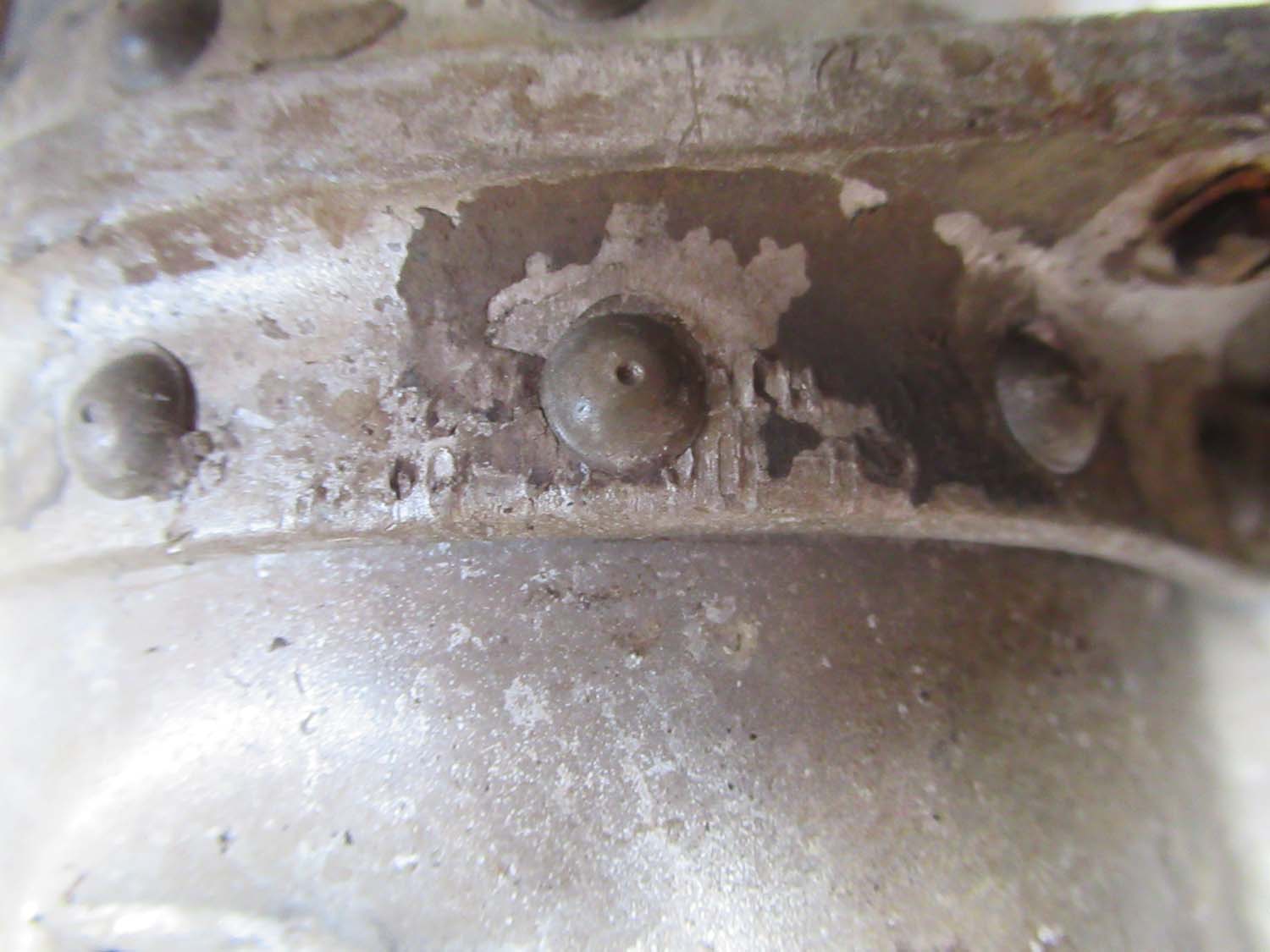
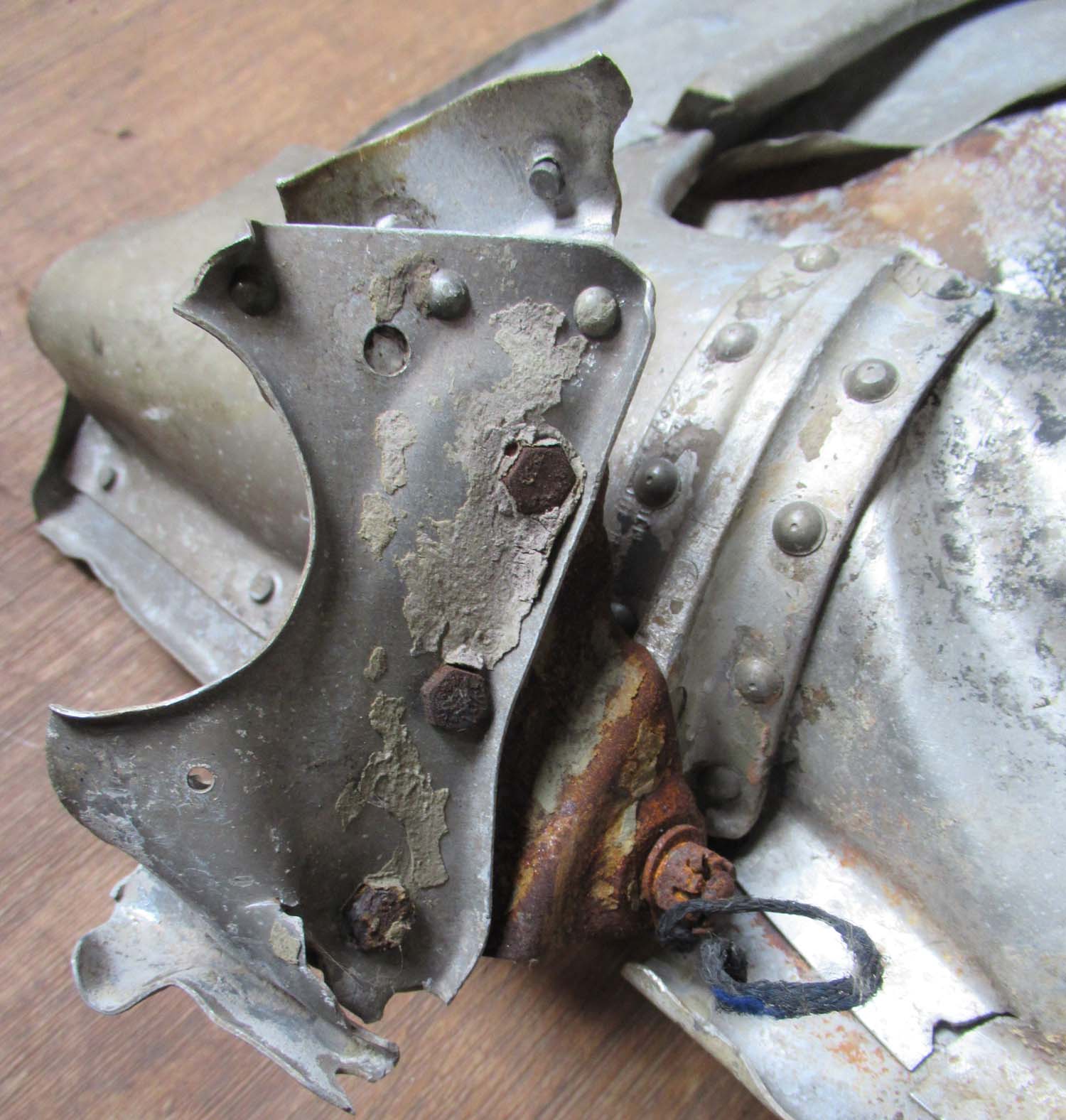
|
FW 190 Flap (pg1 air)
Here we have a complete flap
from a FW 190 clearly from a crash sight but sadly we do not
know the history of the aircraft,
The FW 190 known as the
butcher bird by the Allies may not have been pretty but was
an exceptional fighter , when introduced in late 1941 it
proved superior to the Spitfire MK V which suffered
heavy losses to the 190. The MK VIII Spitfire was not ready
to enter service so the MK IX basically a MK V with an extra
prop blade , radiator and two speed supercharged Merlin 66
was rushed into service. This proved more than a match for
the 190 and shocked many Luftwaffe Pilots with its
performance, it became the most produced Mk of Spitfire of
the war.
.jpg)
Click on
the pictures to enlarge
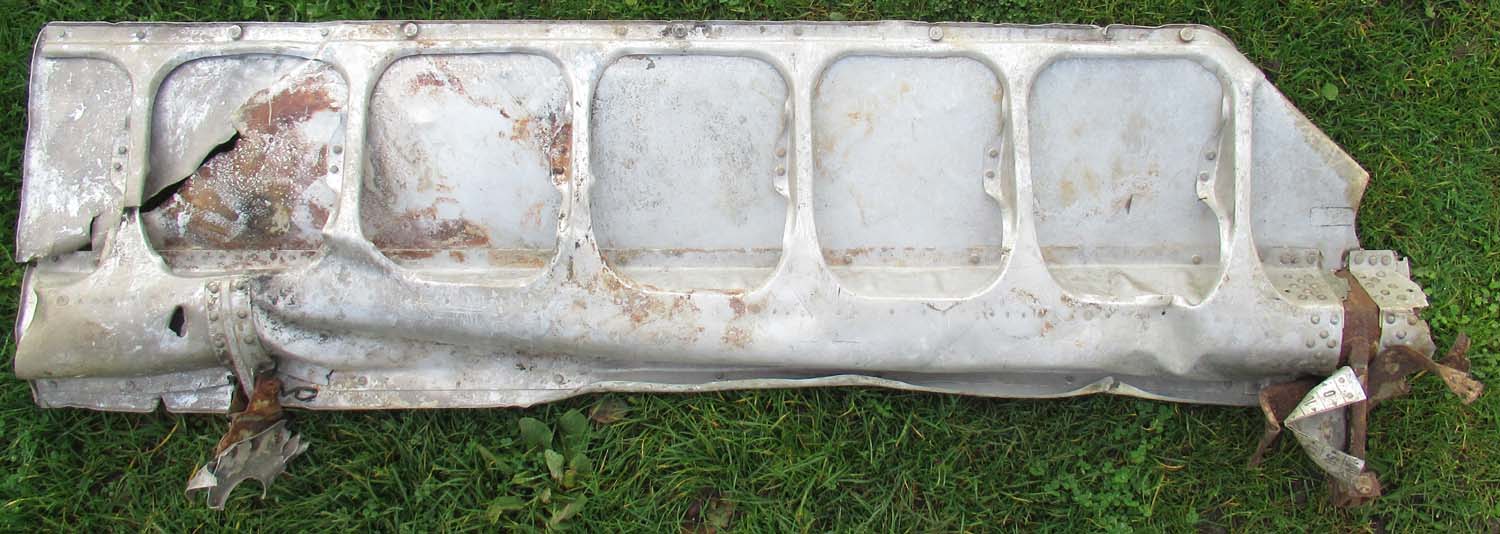
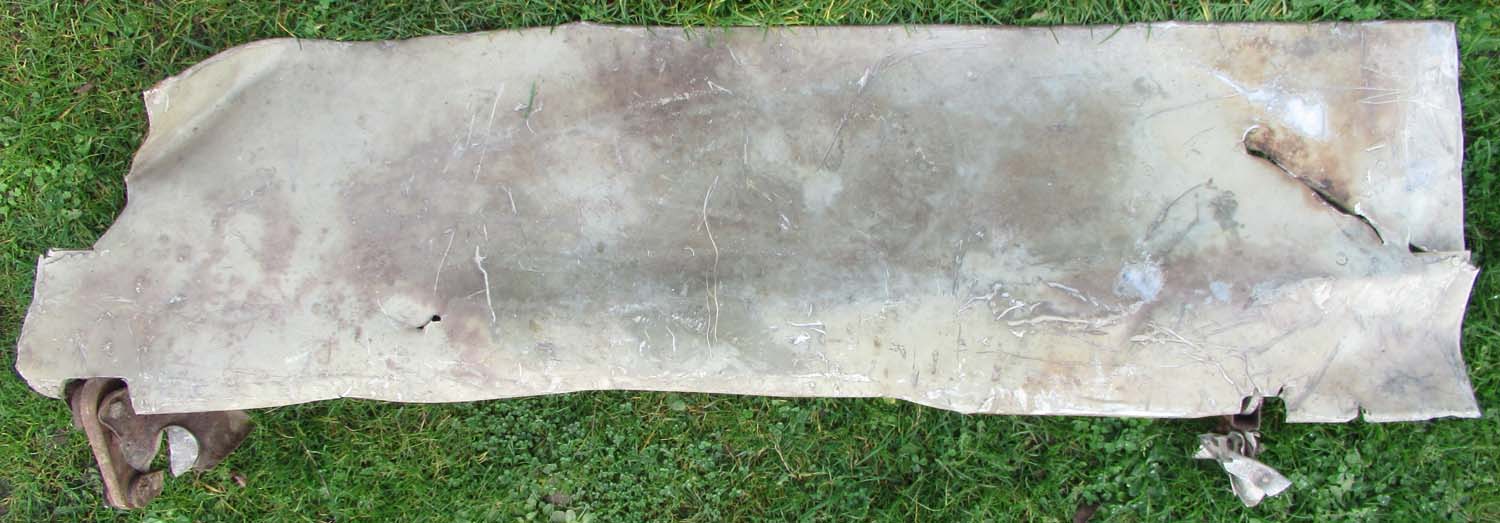
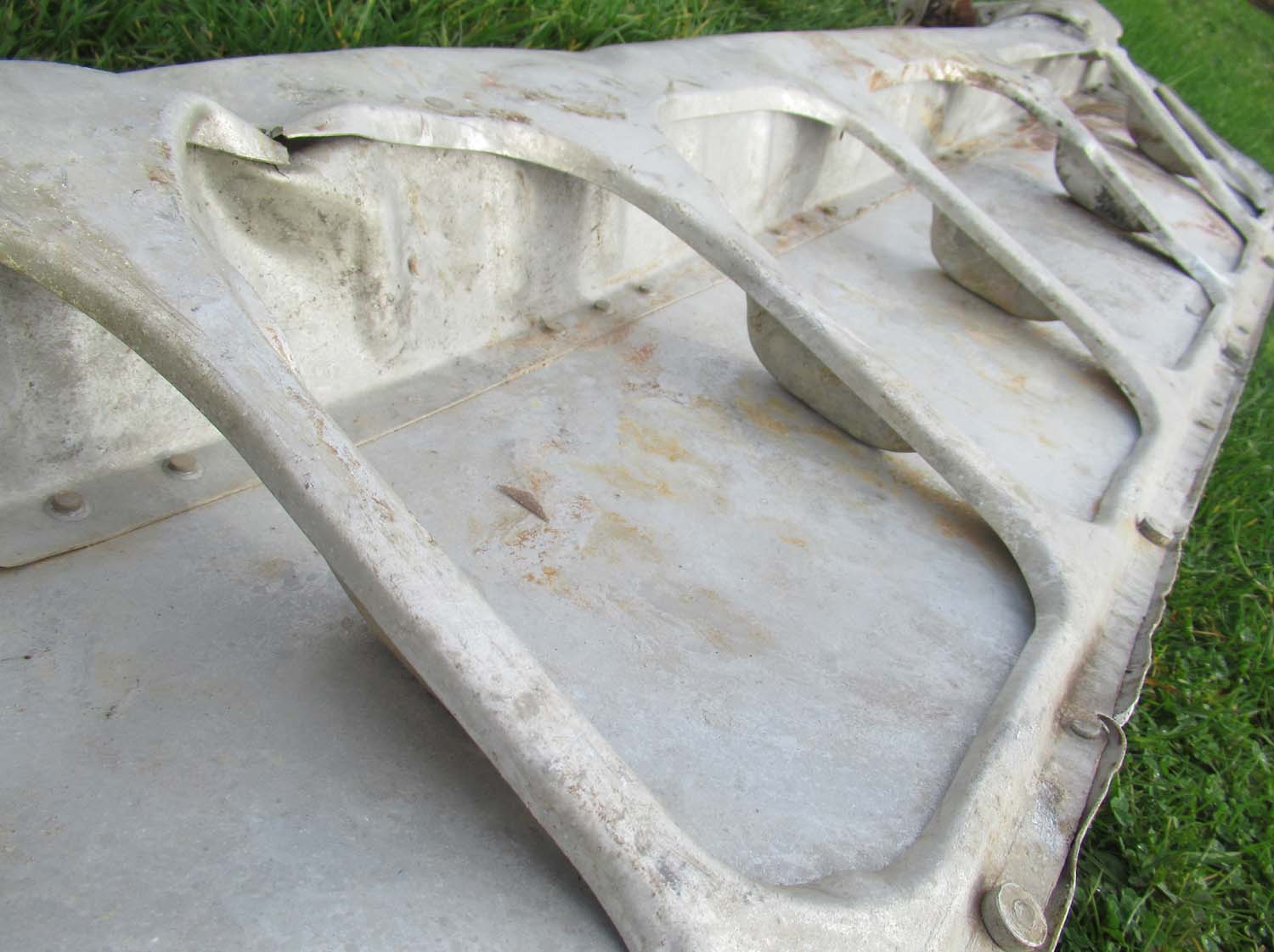
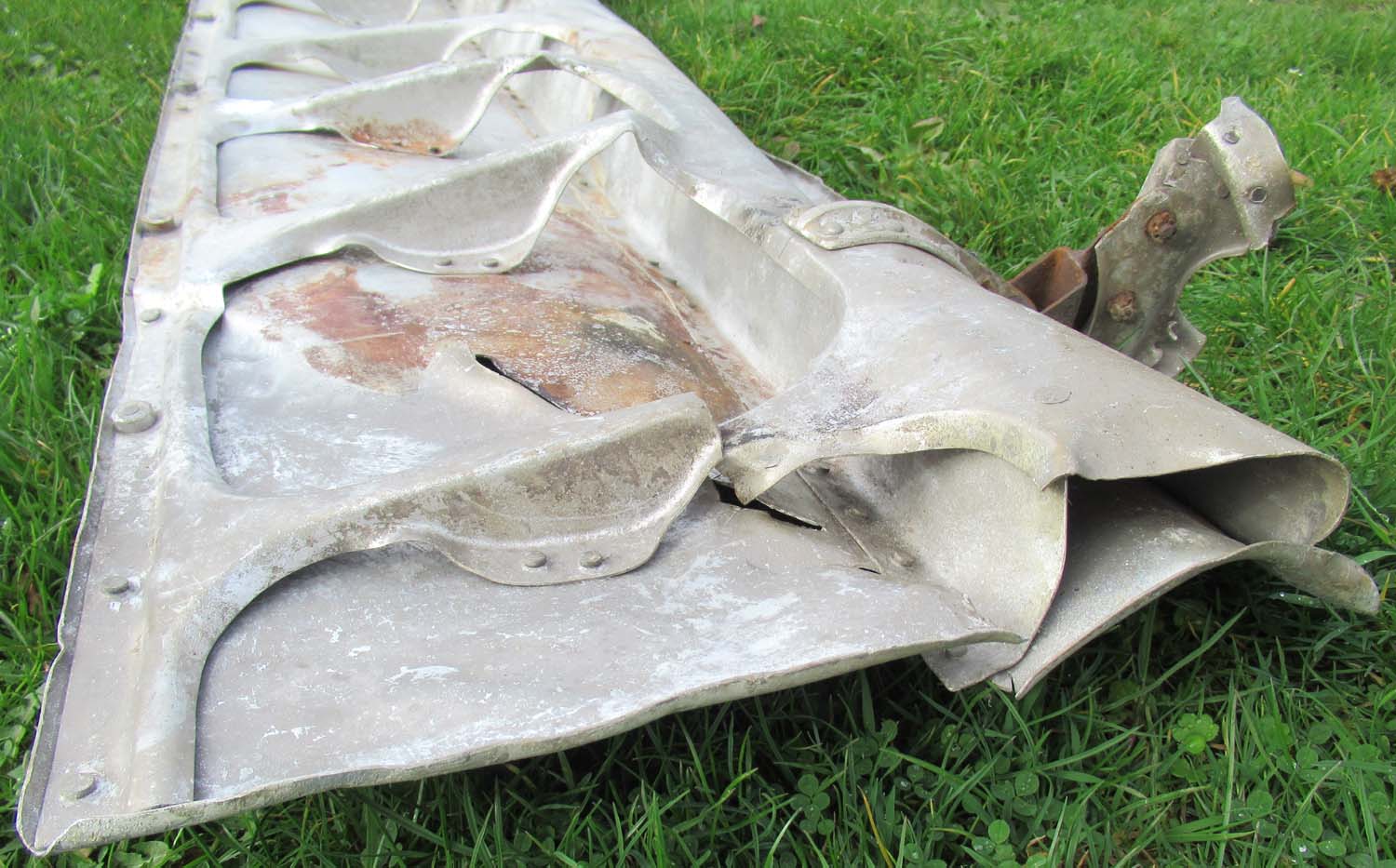
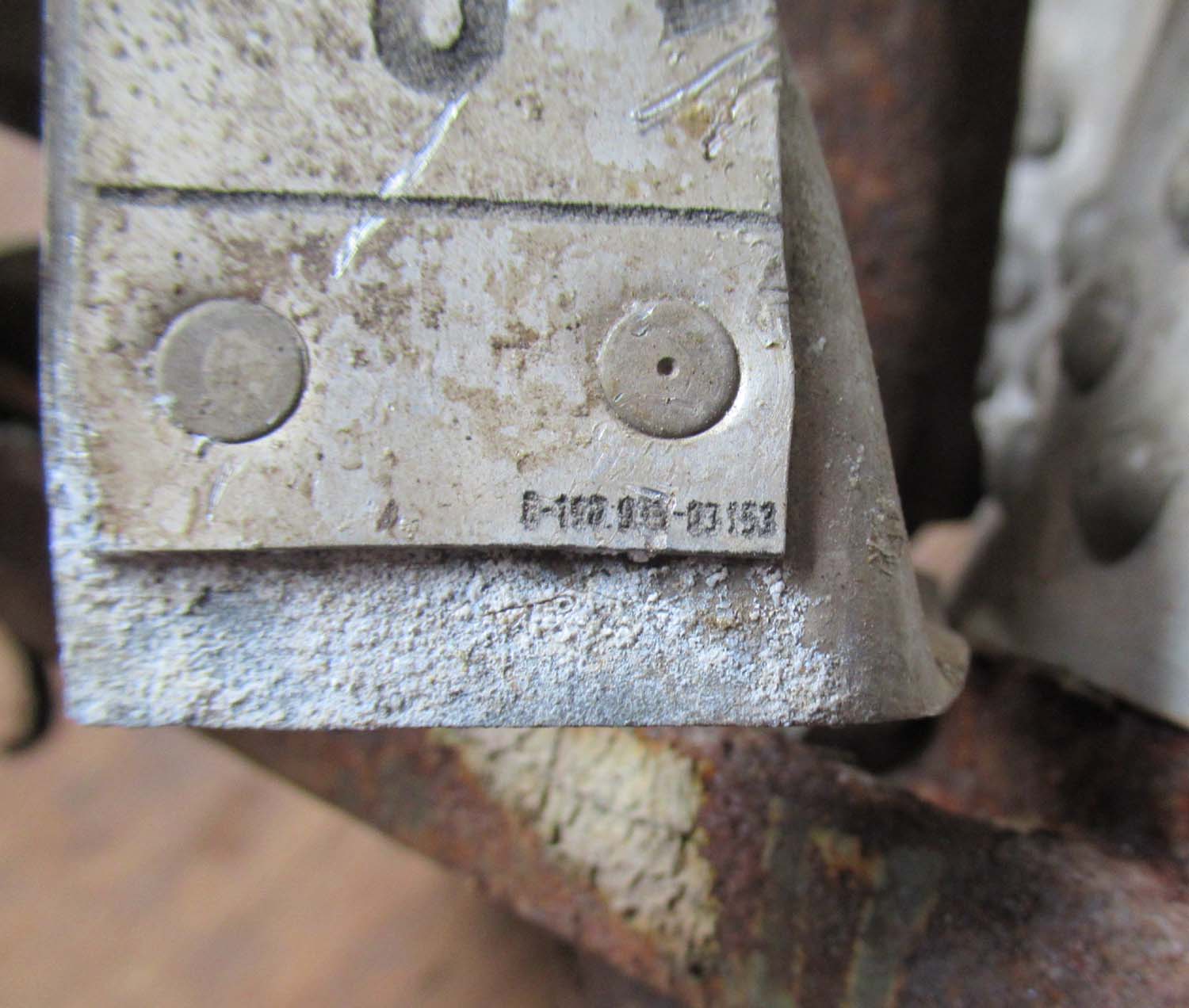
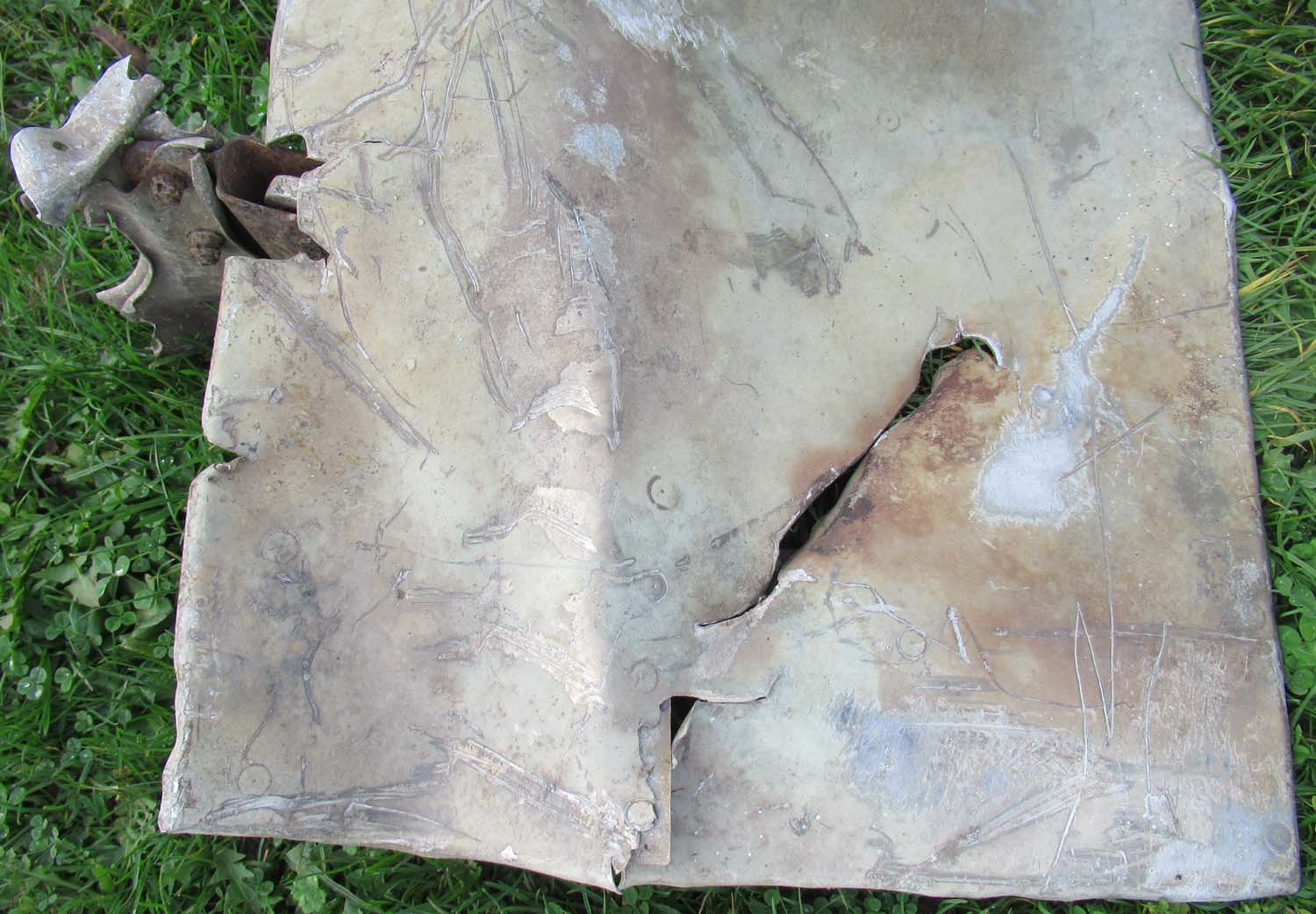
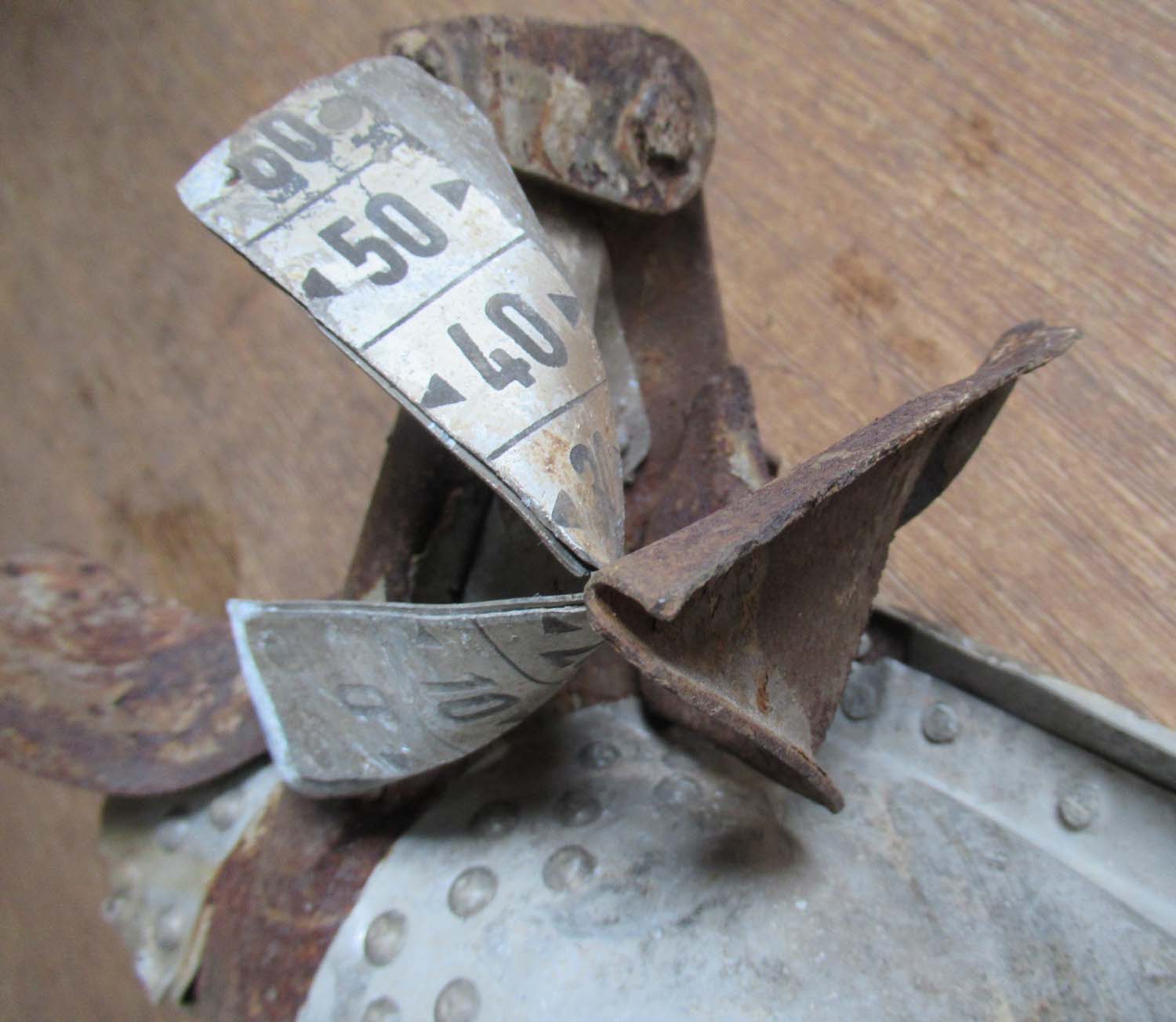
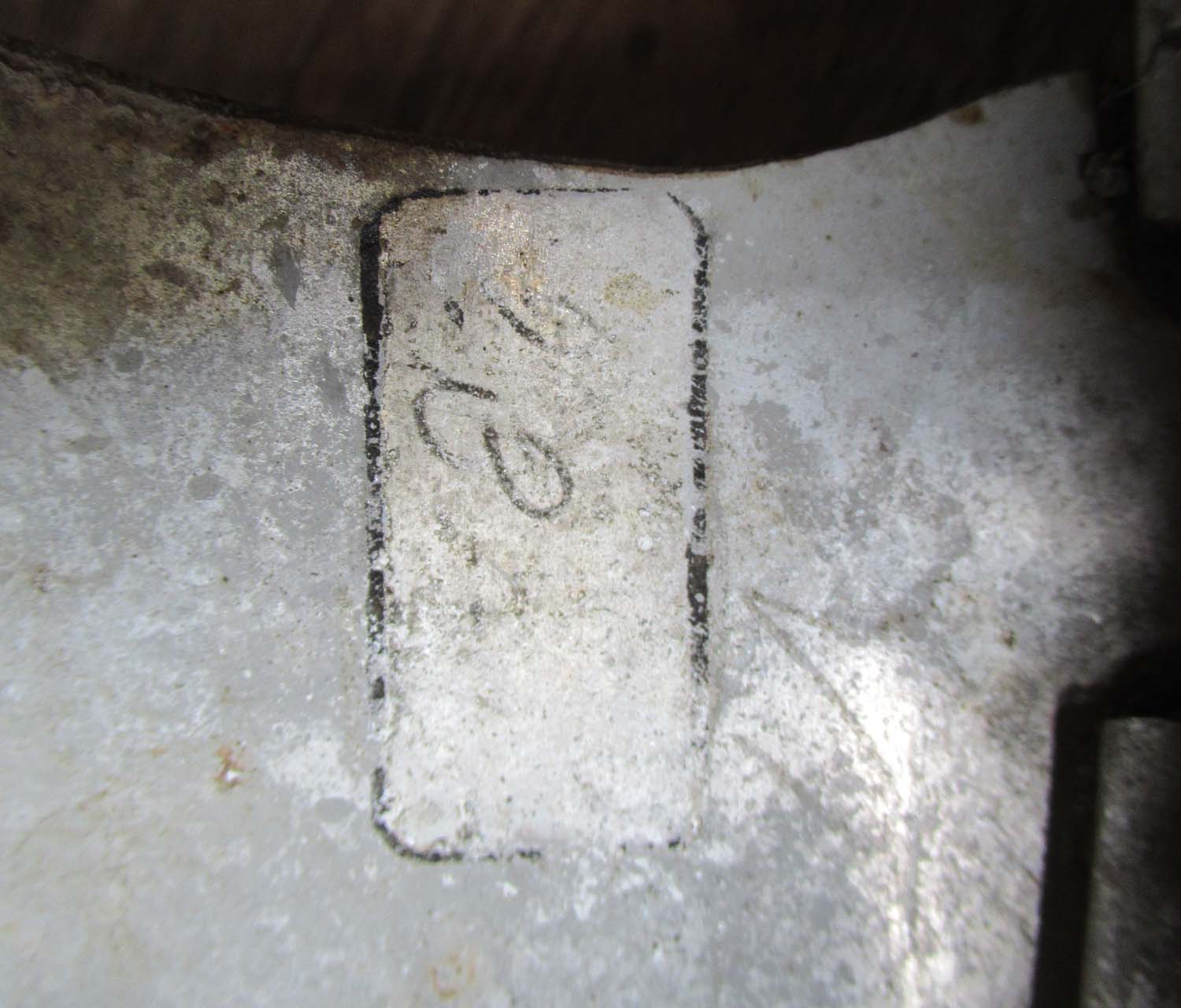
Out of stock, more always wanted.
Please contact me
|
|
Click on
the pictures to enlarge

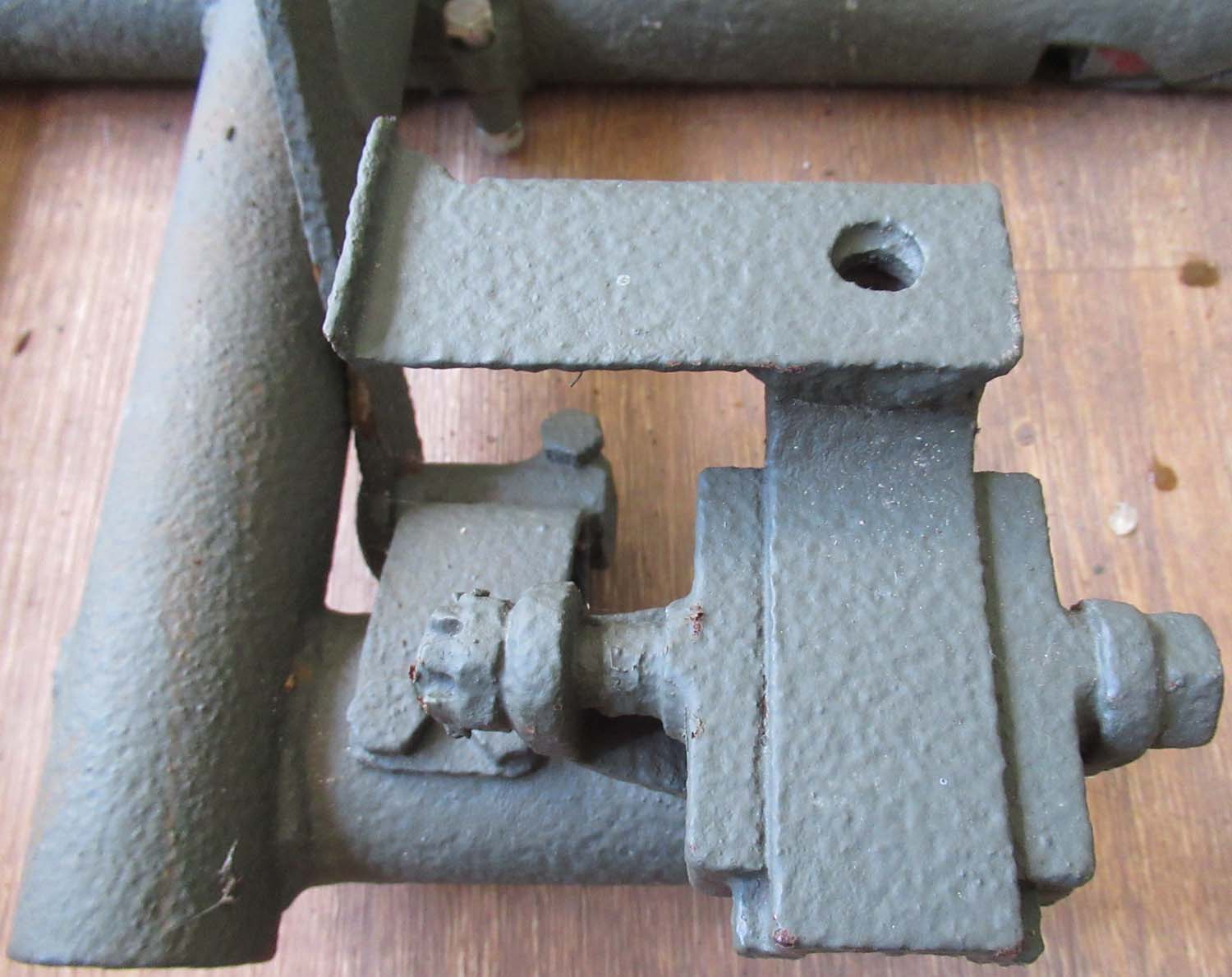

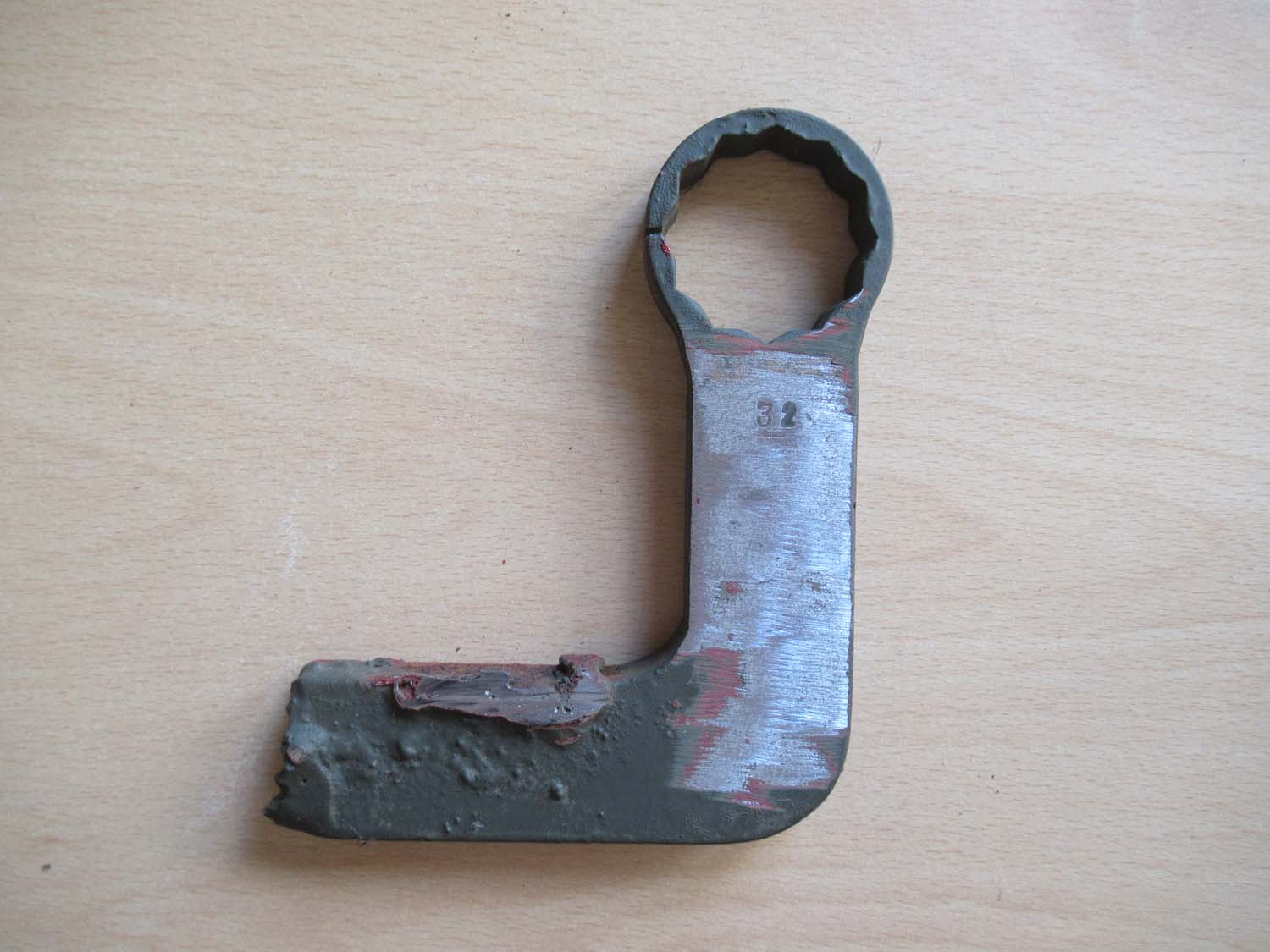
|
Hurricane Z5053 Cannon and MG Mount (pg1 air)
This a superb peace of
history from one of the most brutal conflicts of WWII.
It is a 20mm cannon and MG mount from Z5053 which was a MK
IIB Hurricane built by Gloster Aircraft sometime
between
July 1940 and August 1941.
It was then shipped to
Russia via the perilous artic convoy route . The first
convoy to arrive in Arkangel
code-named Operation
Dervish was
in August 1941
and this aircraft
seems to be one of the first
Hurricanes to arrive just two months after the
start of operation Barbarossa in June 1941.
In total the Barbarossa force had about 3,000
tanks, 7,000 artillery pieces, and 2,500 aircraft. It was in
effect the largest and most powerful invasion force in human
history.
Hurricane Z5053 was recorded
as being shot down in Archangel in August 1942 meaning
it survived for a year which is a long time in that theatre
of conflict and therefore must have seen extensive action.
This Hurricane was fitted
with Russian armament including a ShVAK 20mm Cannon and a
12.7mm Berezin machine gun.
The
MK IIB Hurricane was really outdated as a fighter by 1941
and was used primarily as a Fighter Bomber .
The MK IIB could also carry
two 250Lbs Bombs on wing racks increasing to 500Lb by the
end of 1941.
Some
Russian Hurricanes had RS-82 air to air rockets
installed under the wings (three per wing)
Below a
Russian MK IIB Hurricane fitted with ShVAK 20mm Cannons, 12.7mm Berezin machine guns
and rockets.
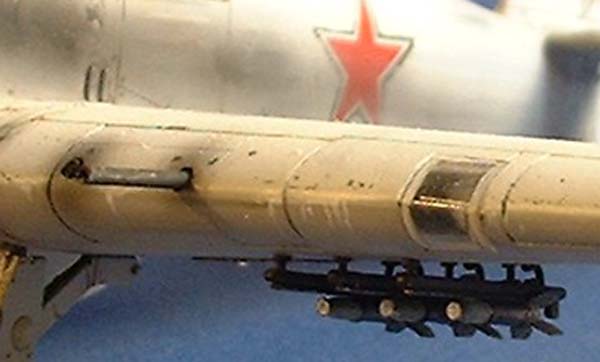
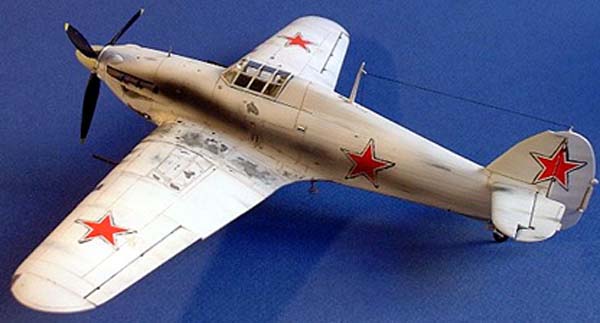
Click on
the pictures to enlarge
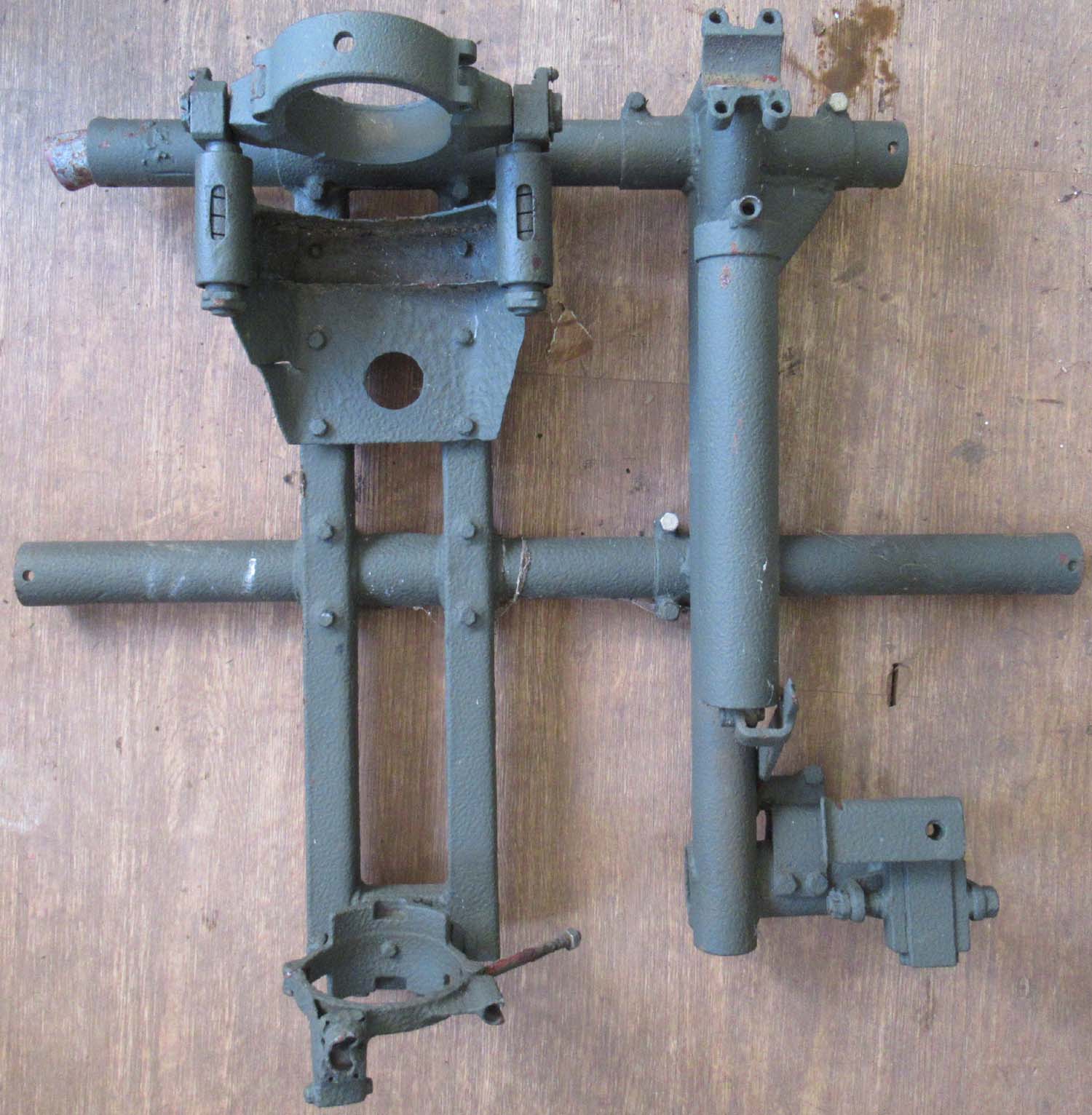
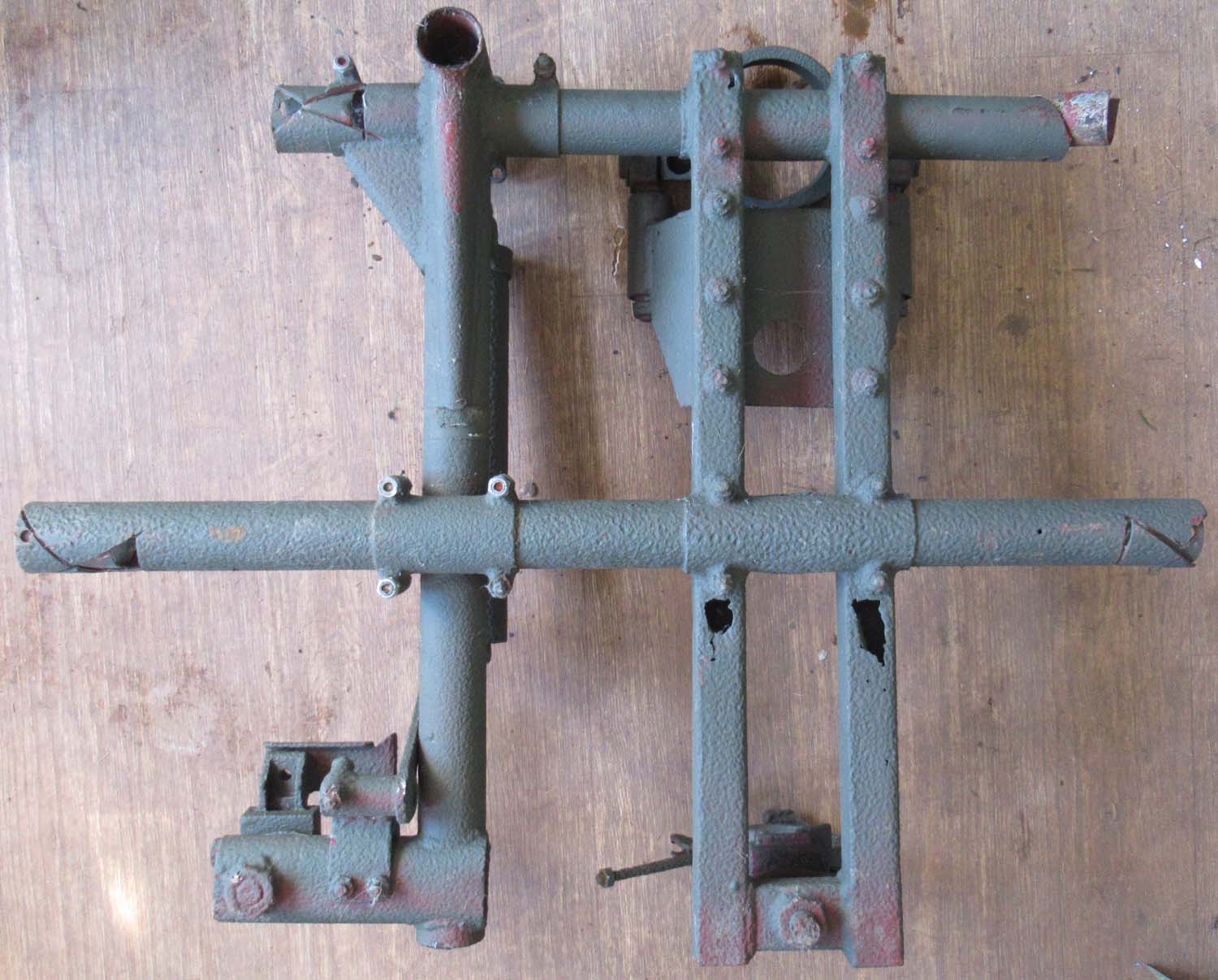
This piece is
large and heavy please
contact us for a shipping
quote
You can find
the ammunition boxes to go with this mount in armaments
link here
£1800


|
|
The Junkers Ju 88 was one of the most
versatile and effective combat aircraft of World War II. Its
closest counterparts on the Allied side were
the Mosquito and Beaufighter. The German aircraft was larger
and slower, but nevertheless very effective. 14,676 were
built, including 104 prototypes for its 60
different versions.
Like the Mosquito, the Ju 88 originated as a
fast bomber. In 1935 the Luftwaffe had a requirement for a
Bomber with a speed of 500km/h with 800kg of bombs. This was
much faster than the biplane fighters that then equipped the
German fighter units; it was even faster than the first
models of the Bf 109 monoplane fighter.
This piece is
large and heavy please
contact us for a shipping
quote£1800


|
Junkers JU88 Gunners Window (pg1 air)
This a superb and
very rare peace its the gunners window from a Junkers JU 88.
It is totally original except for replacement
Perspex and
the rubber seal on the back of the window frame. It has been
re painted.
Click on
the pictures to enlarge.
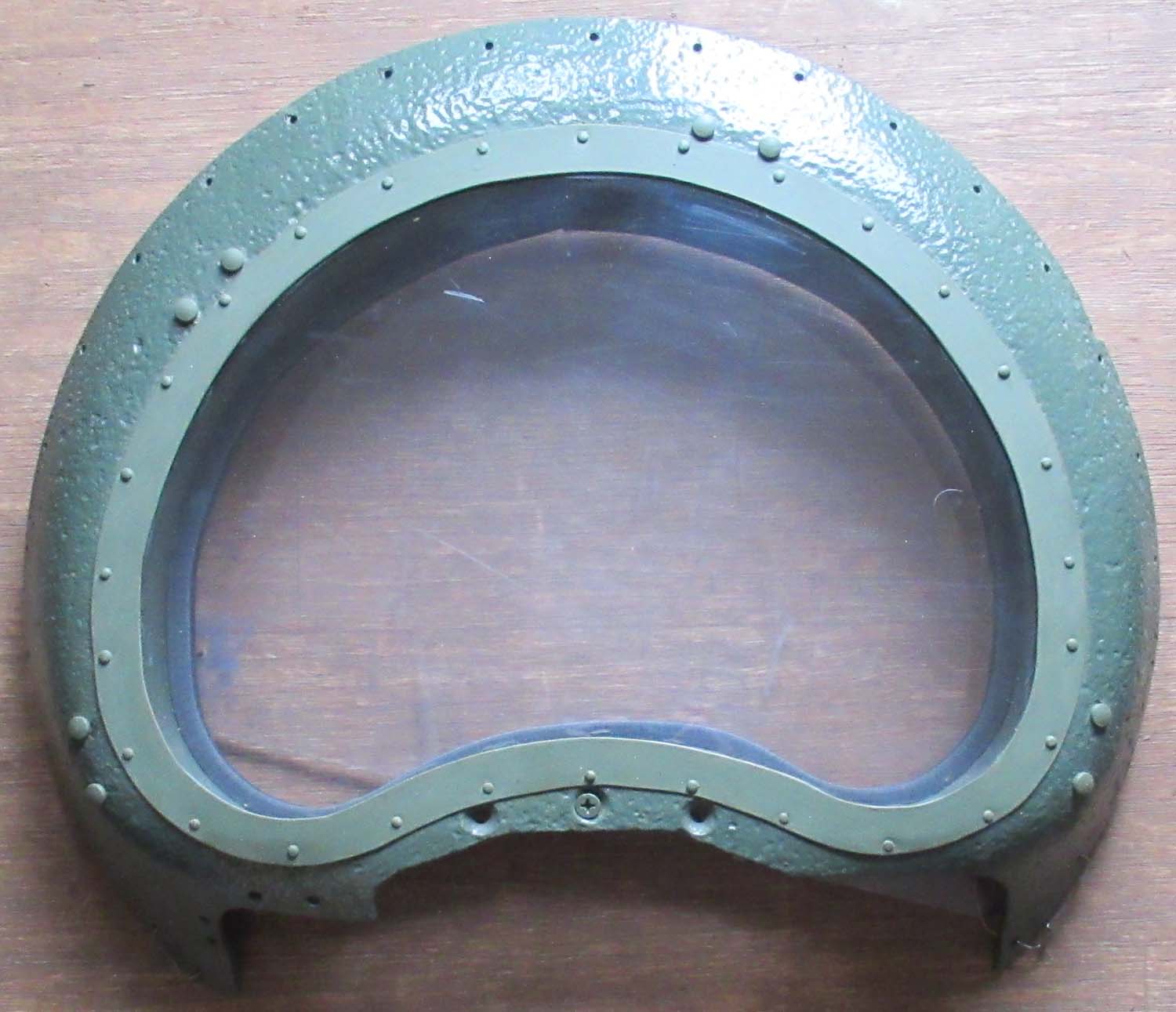
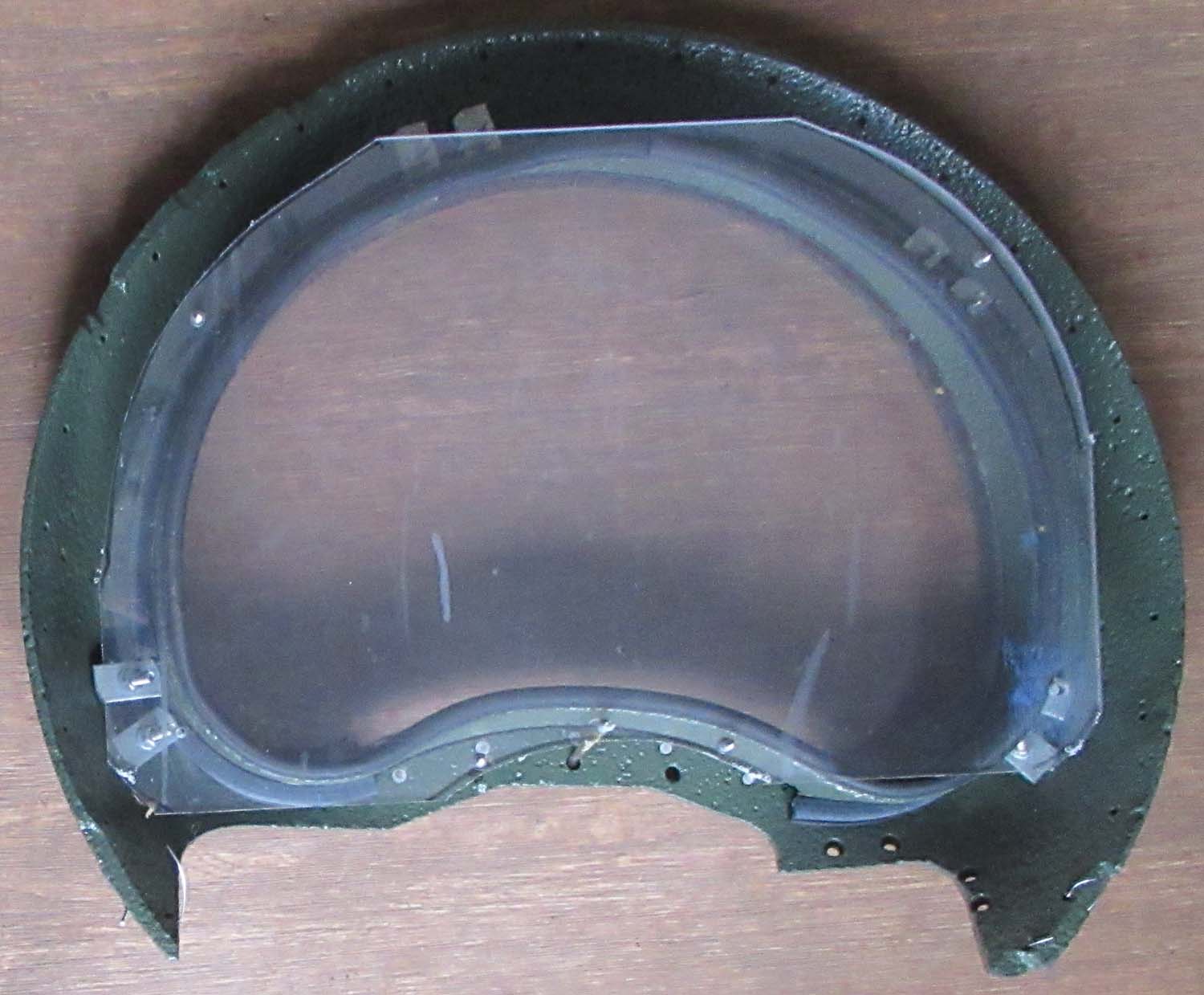
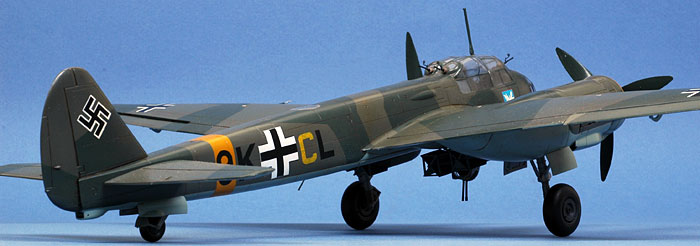
This piece is
large and heavy please
contact us for a shipping
quote
|
|
Click on pictures to enlarge
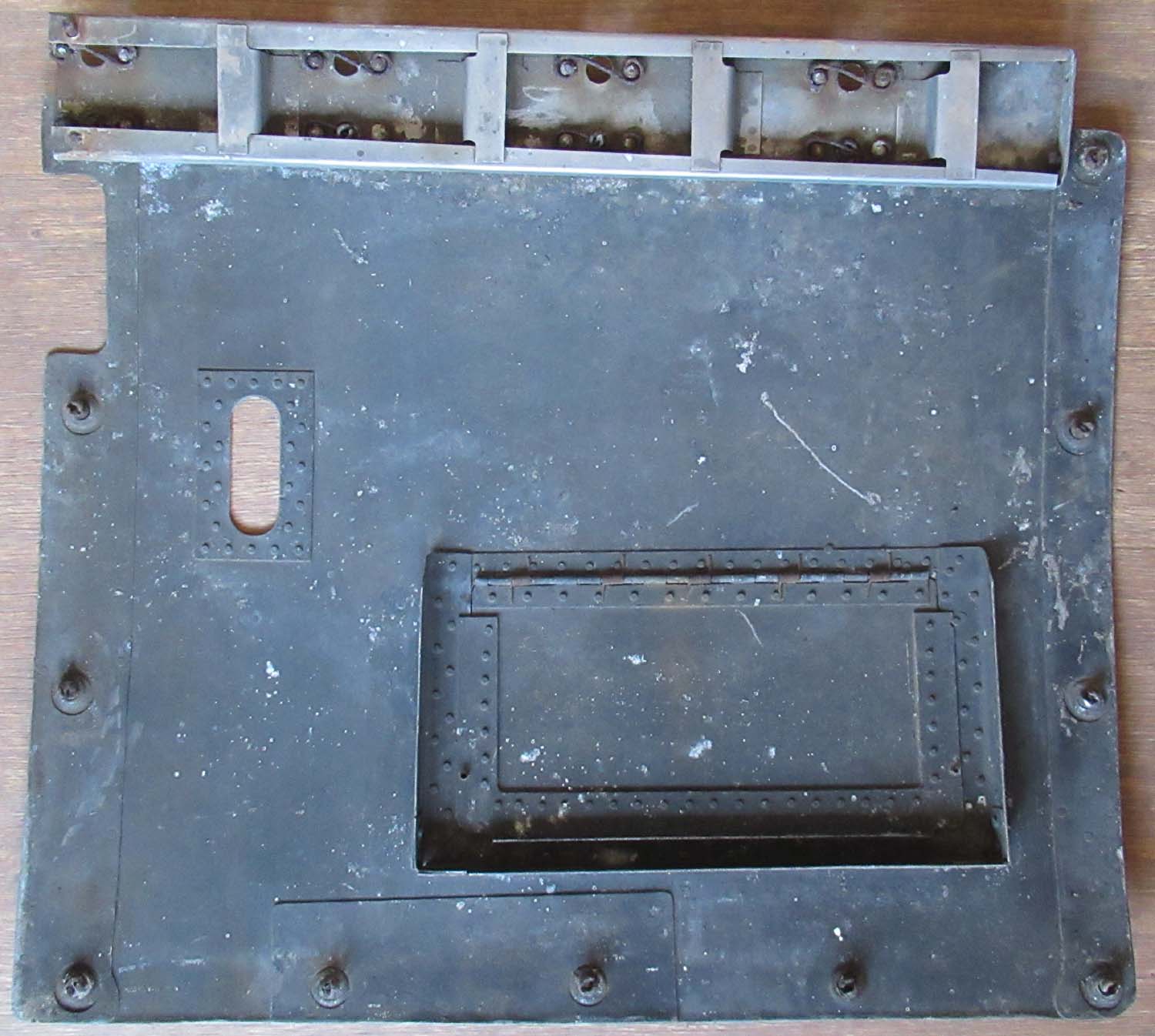
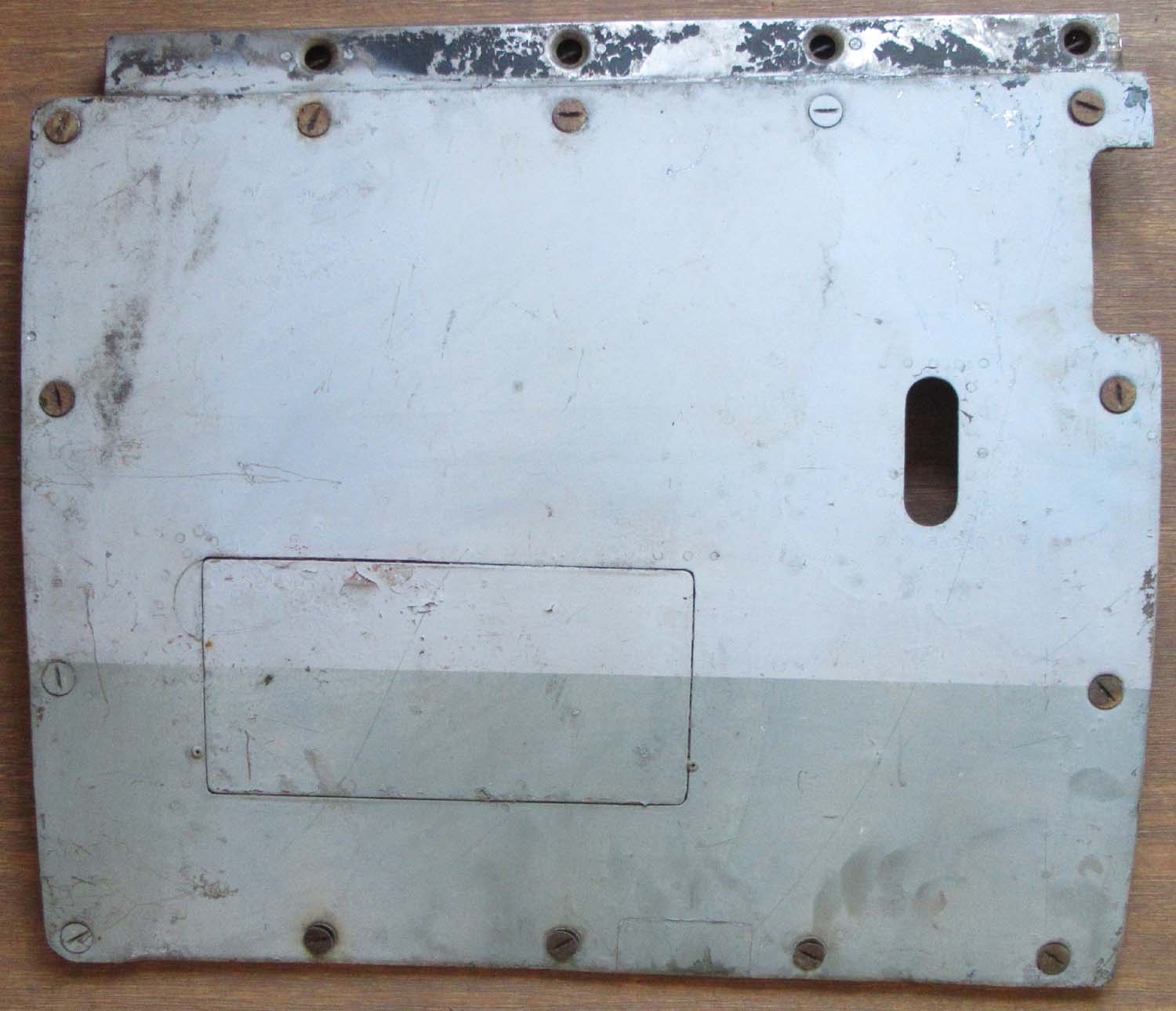
 |
B25 Bed sheet Bomber Engine Cowling (pg1 air)
Here we
have a complete engine cowling from a B25 named the Bed
sheet Bomber.
This complete peace is in
good original condition and was removed from the B25 known
as the Bedsheet Bomber. This aircraft spent the war in the
US as a training aircraft after a varied career in the US
she
arrived in England in
1961 where she served as the photography platform in the
film “War Lovers”. In 1963 she was used again for the
filming of the movie “633 Squadron”. After several owners
and falling into a derelict state she is now being restored
at the Wings Museum in Sussex.
There is
plenty of information about this aircraft available online
with its complete history.
Click on pictures to enlarge
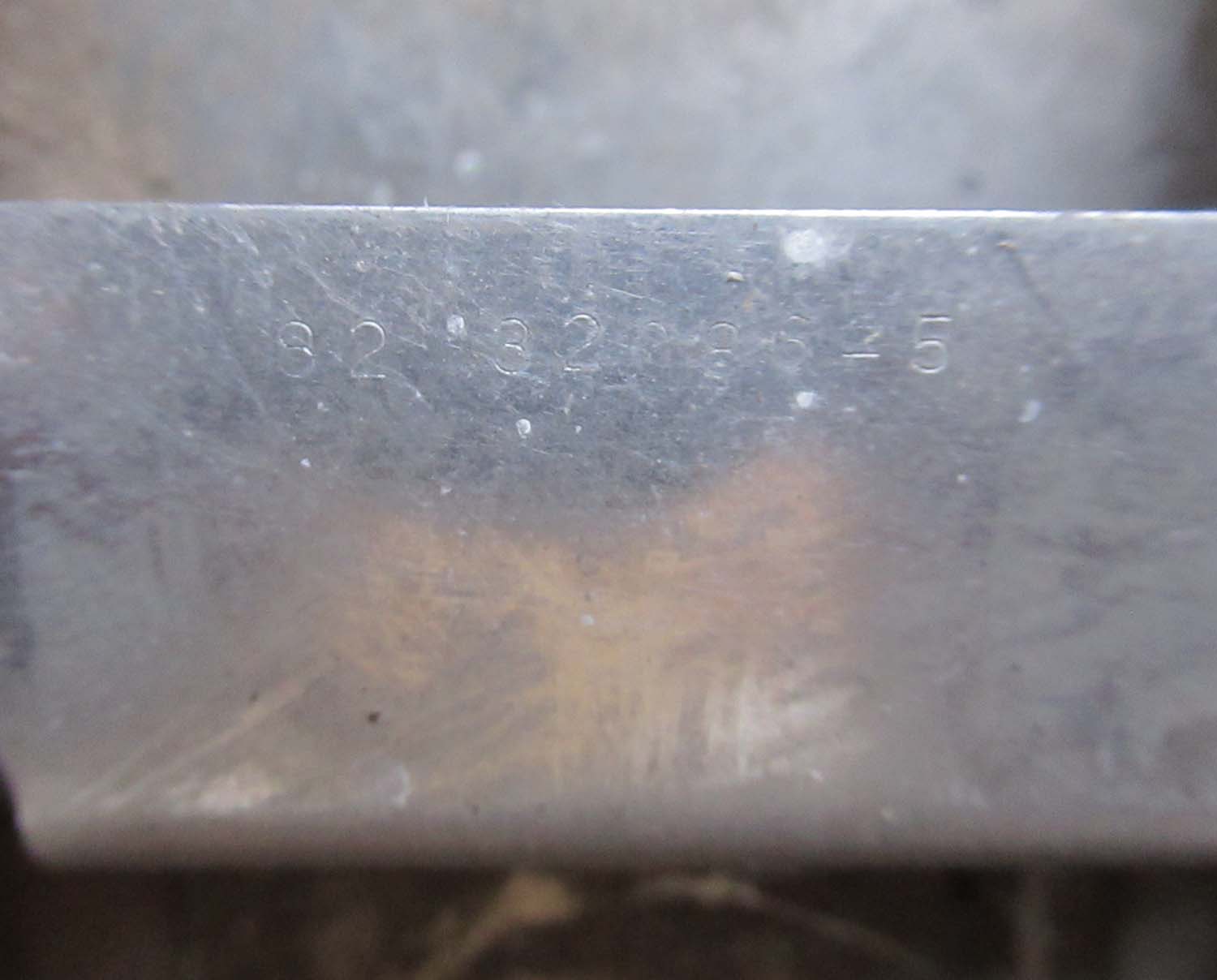
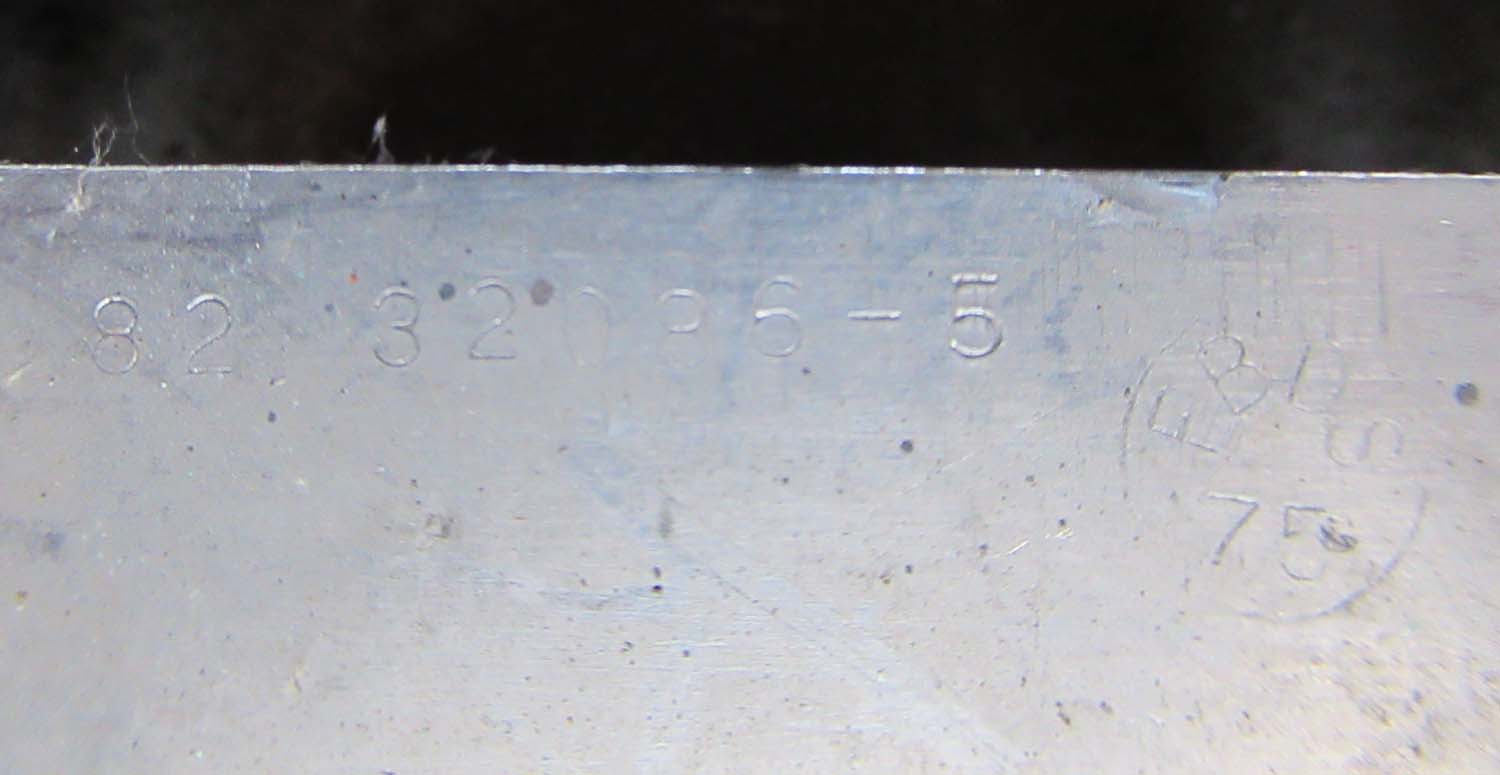
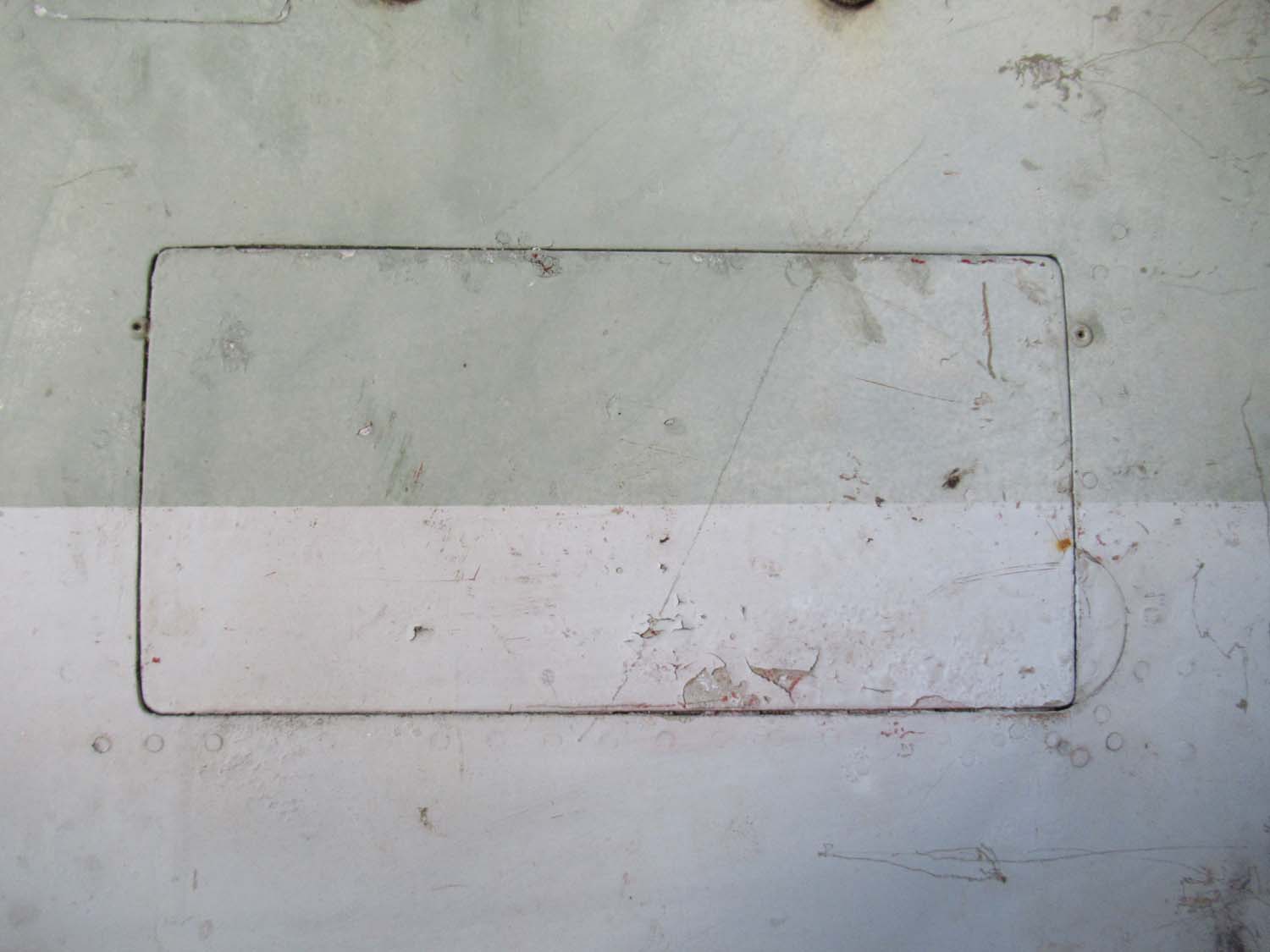
£395
Reserved
Overseas buyer please
contact me for a shipping
cost.
|
|
£25 each


Several
available. Postage can be combined. |
Original Pipe Clip 2 SHORT (pg1
air)
These
clips are used throughout the Spitfire and many other RAF
wartime aircraft to secure pipes and wiring. These are
original pieces in serviceable condition.
Click on the pictures to enlarge
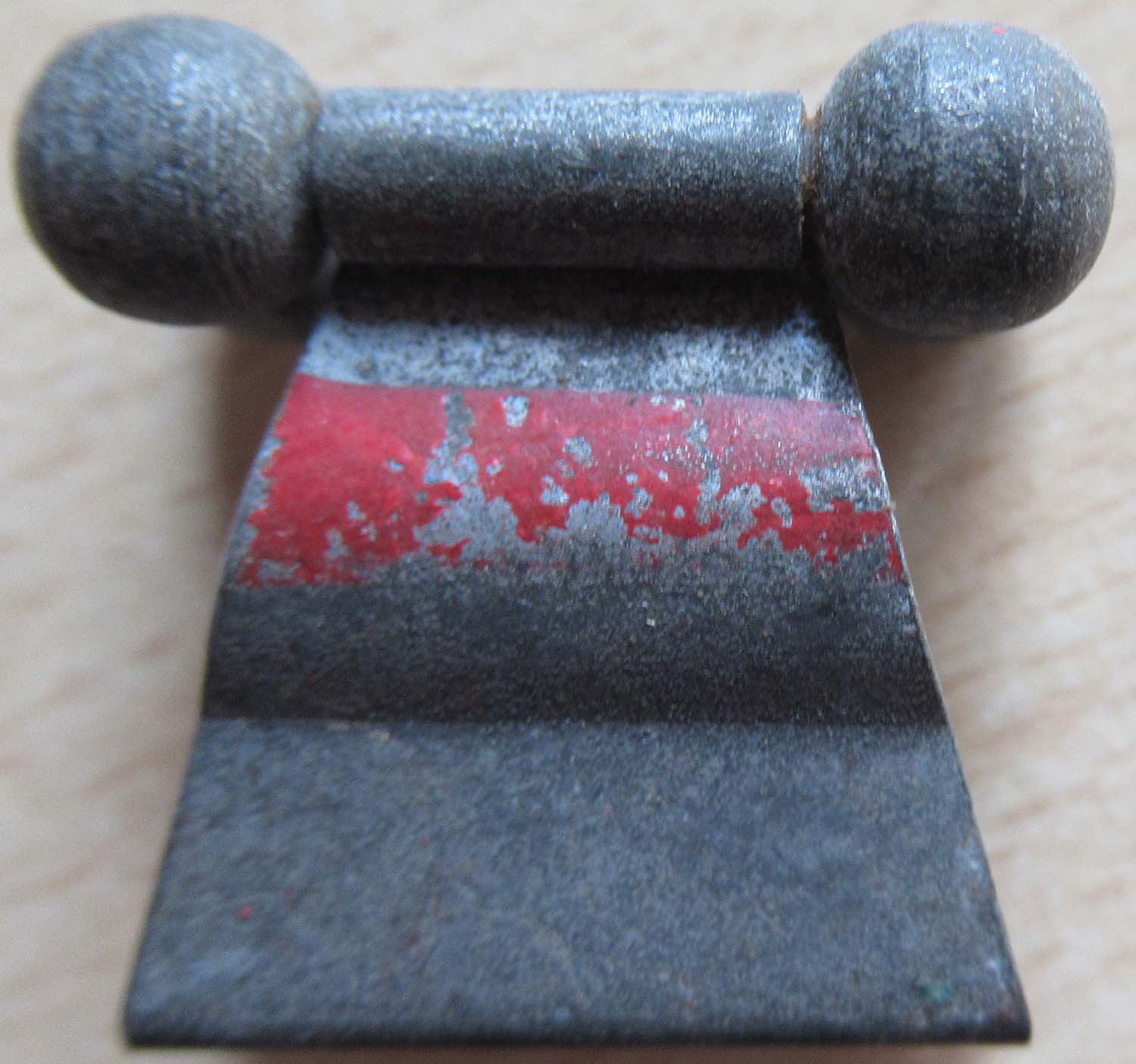
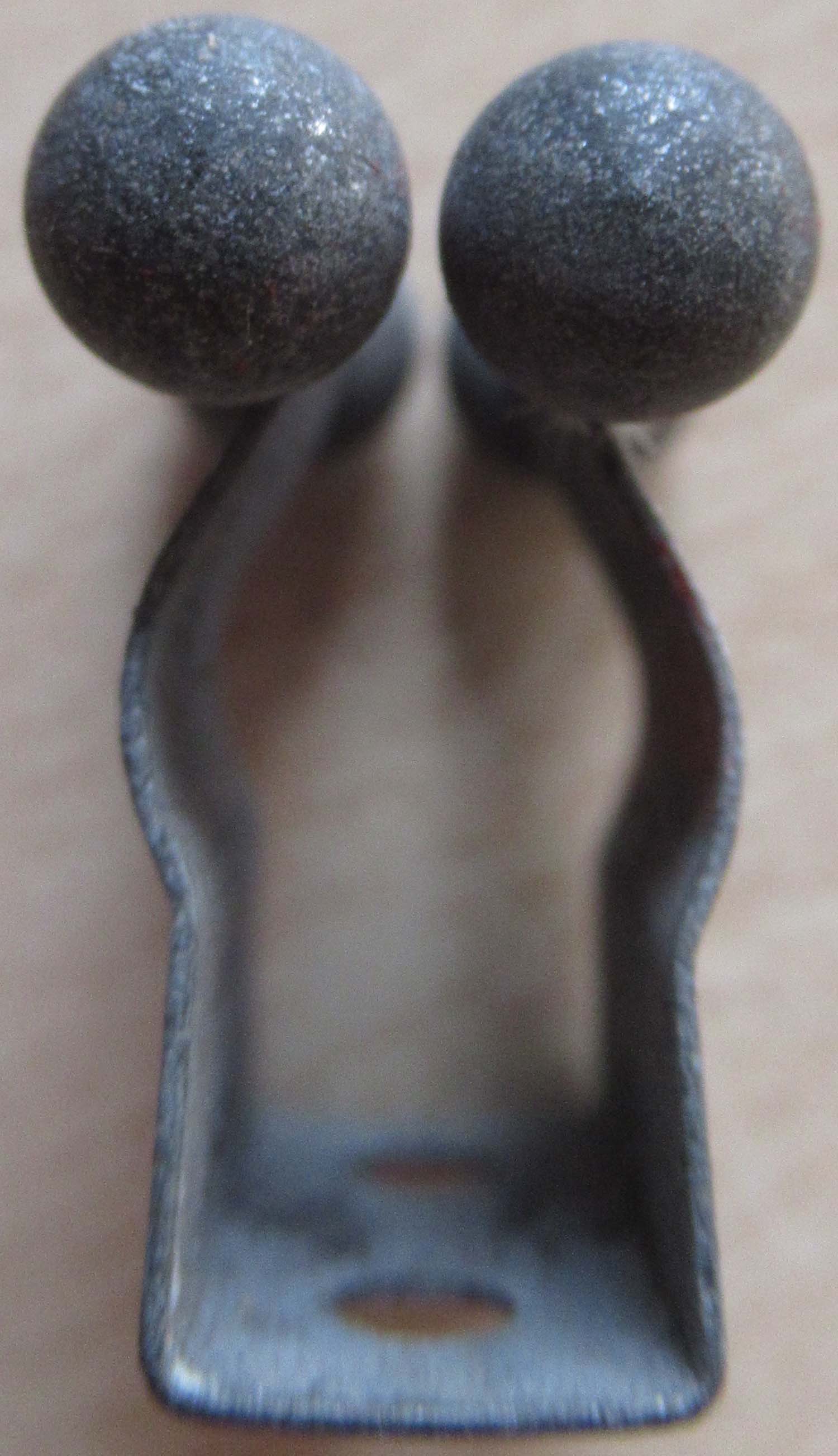 |
|
£25 each


Several
available. Postage can be combined. |
Original Pipe Clip 2 LONG (pg1
air)
These
clips are used throughout the Spitfire and many other RAF
wartime aircraft to secure pipes and wiring. These are
original pieces in serviceable condition.
Click on the pictures to enlarge
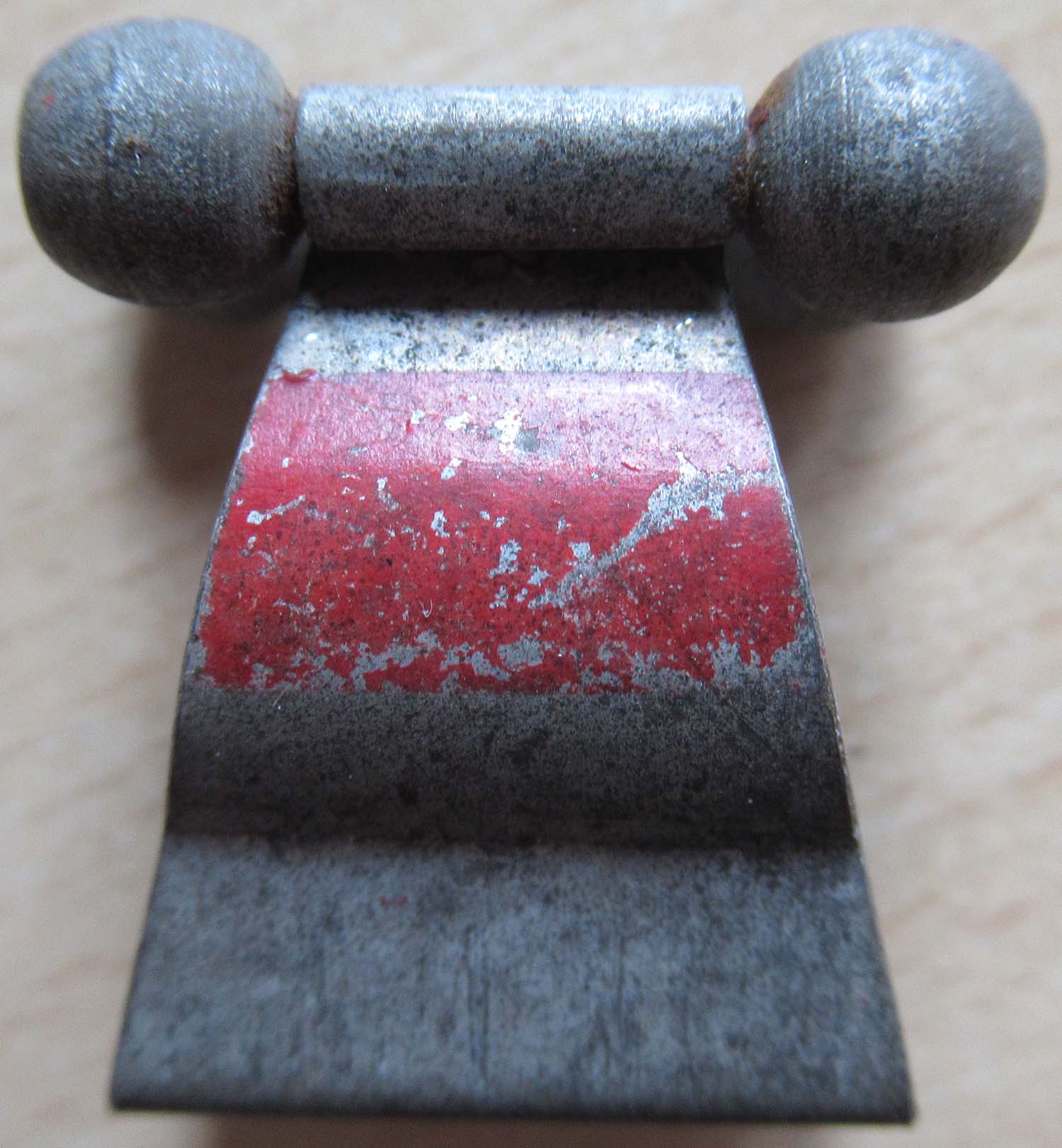
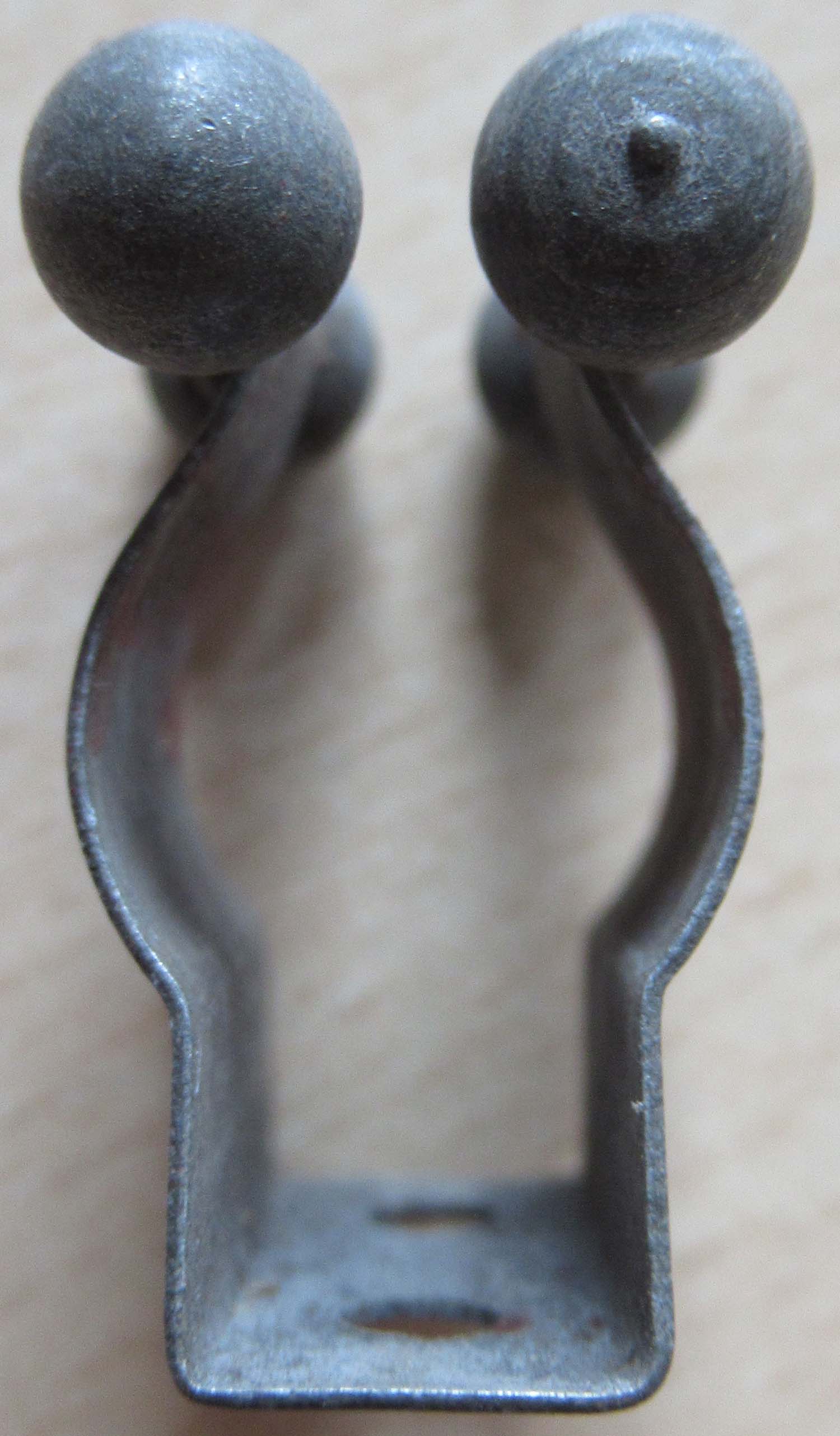 |
|
Click on the pictures to enlarge

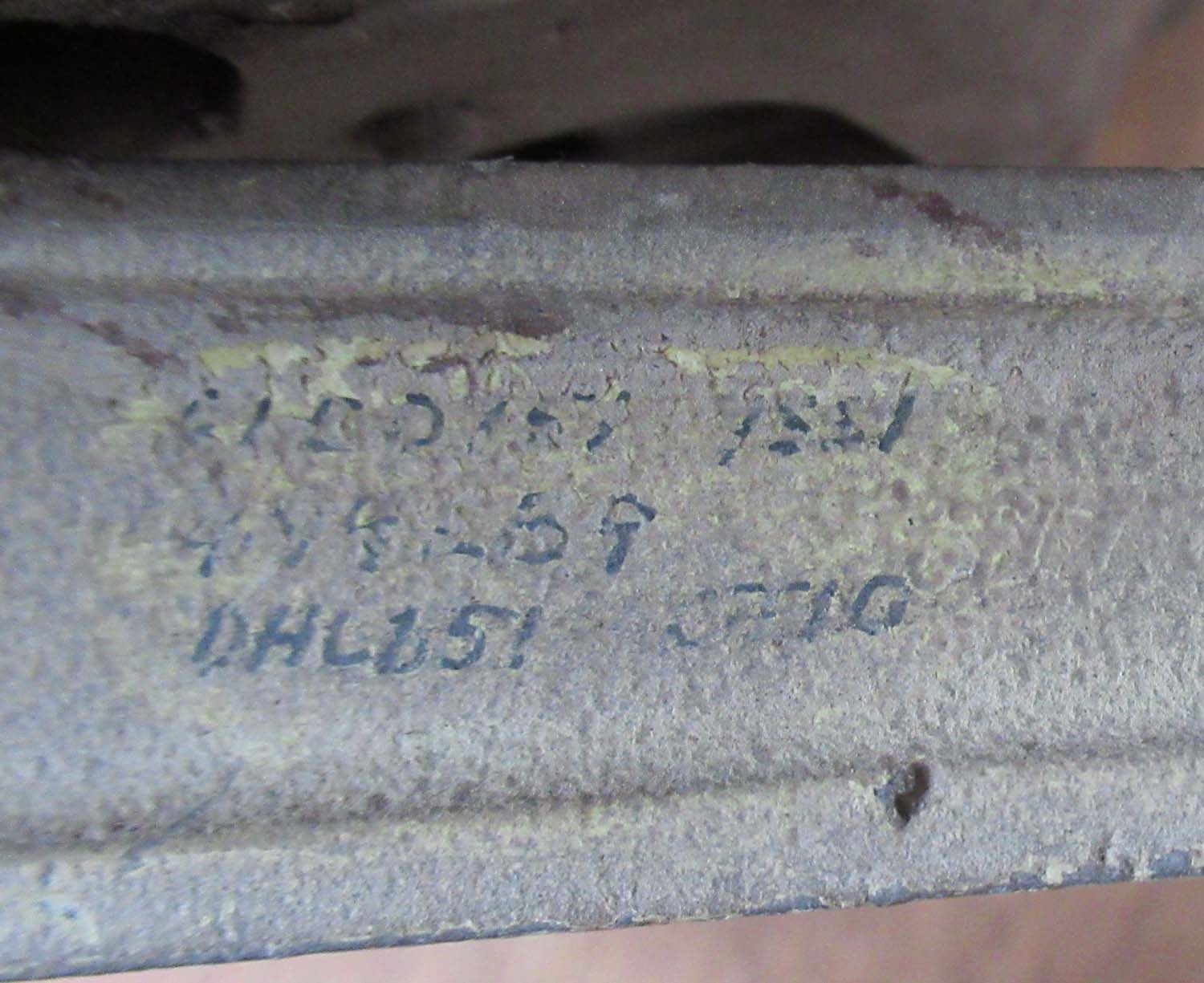
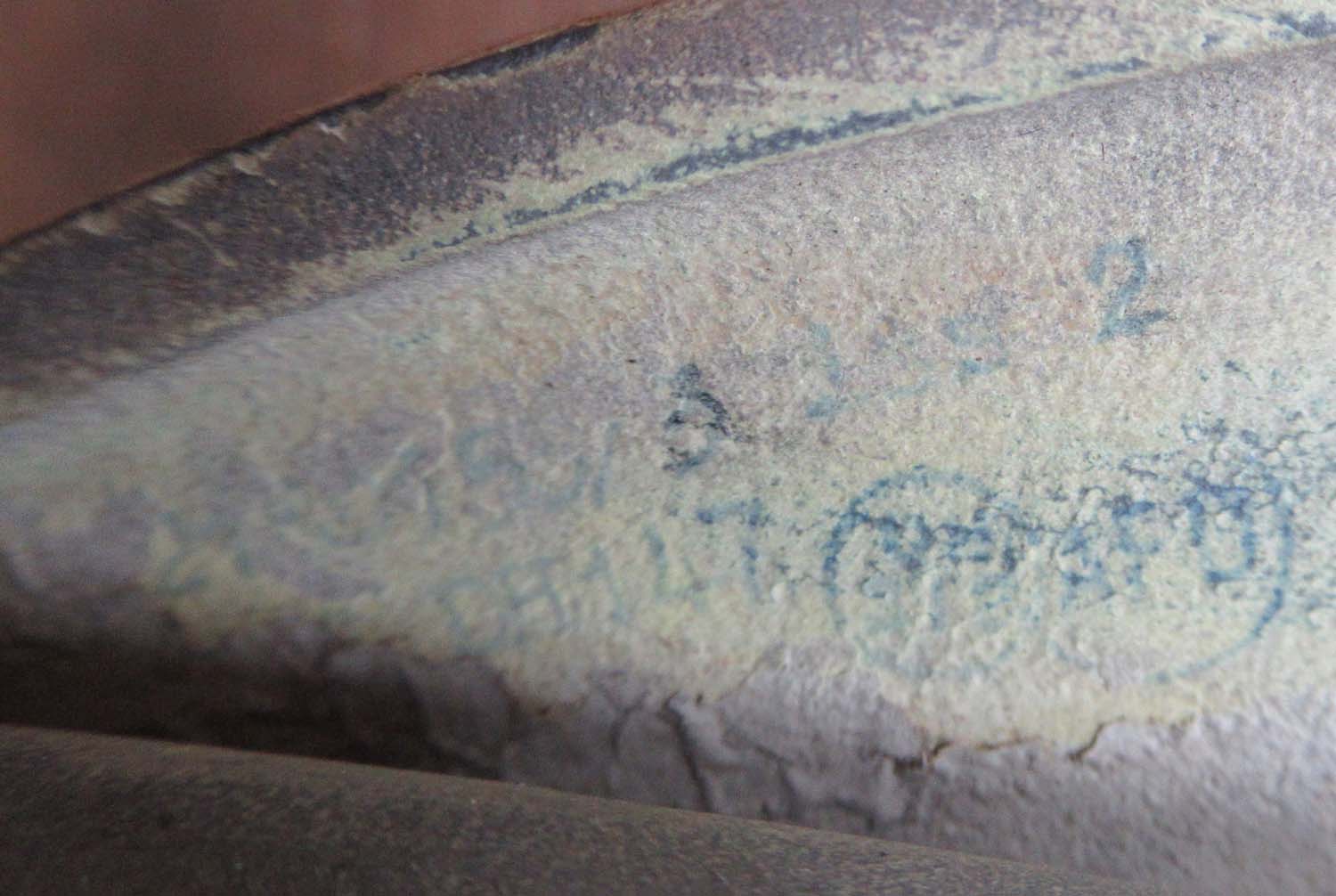
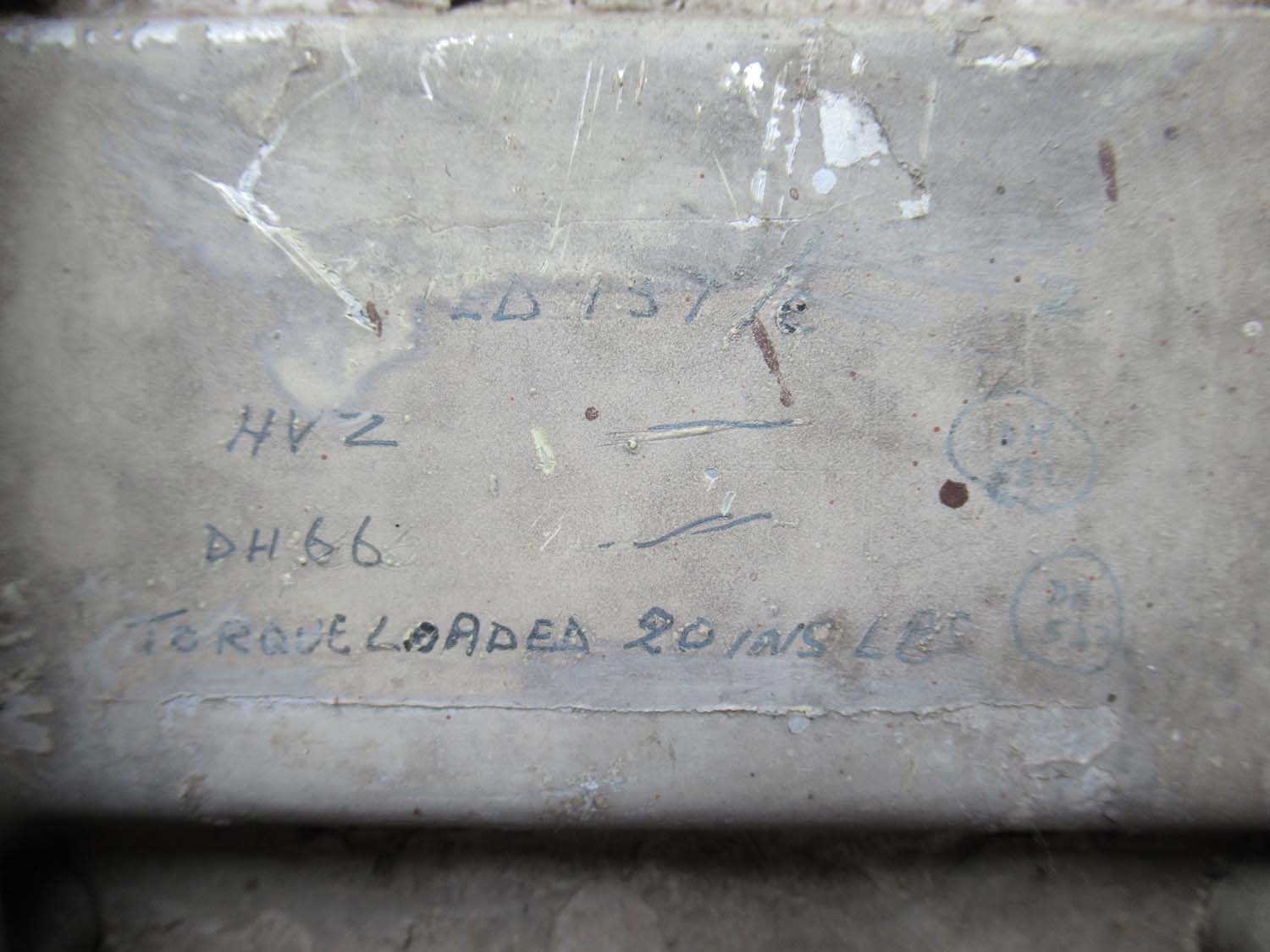
£295


Overseas buyer please
contact me for a shipping
cost.
|
DH Hercules hatch (Pg1 Air)
This is an
incredibly rare peace and possibly unique from a De
Havilland Type 66 aircraft which is a DH Hercules.
This aircraft
was the real pioneer of the modern long distance airlines.
Click on the pictures to enlarge
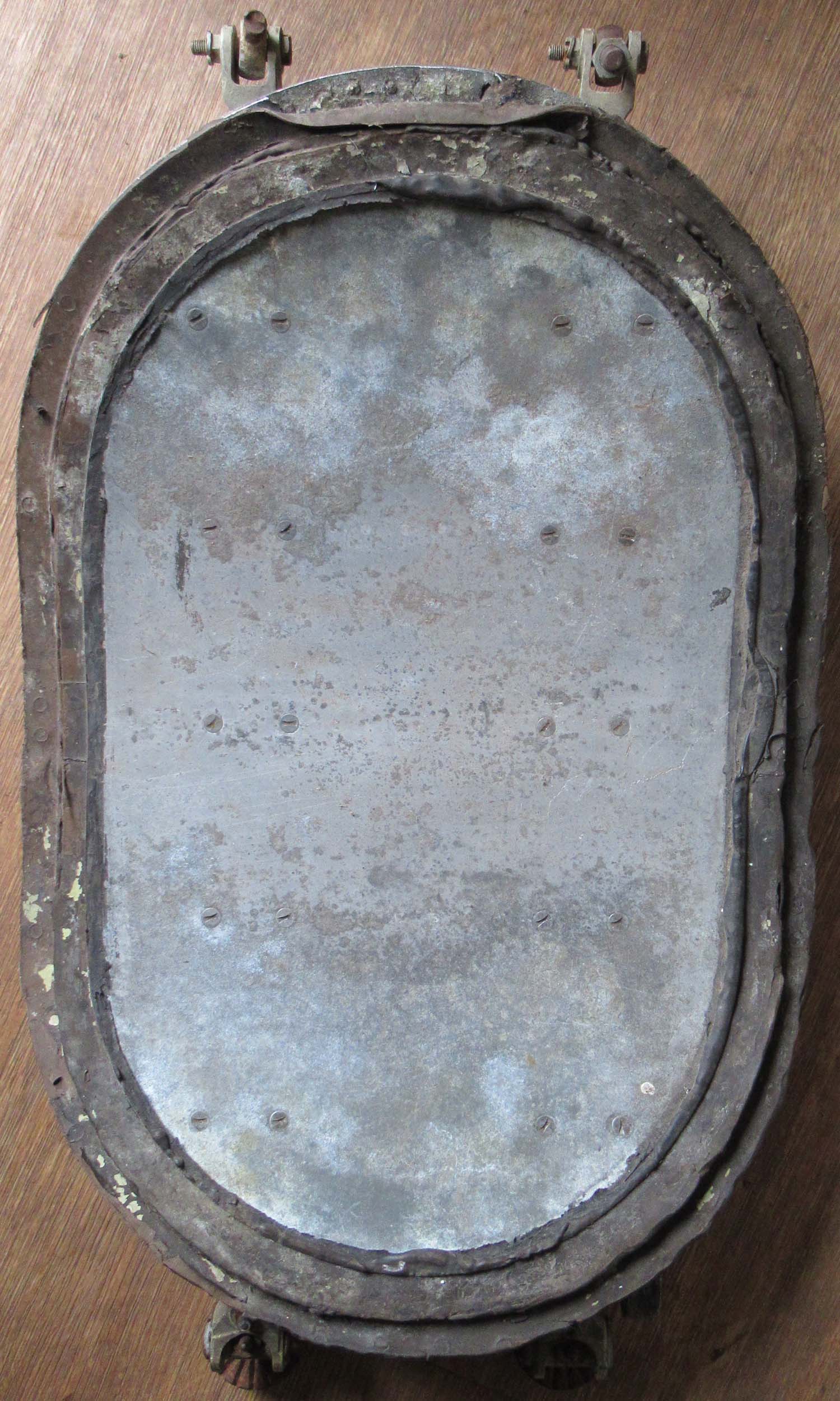
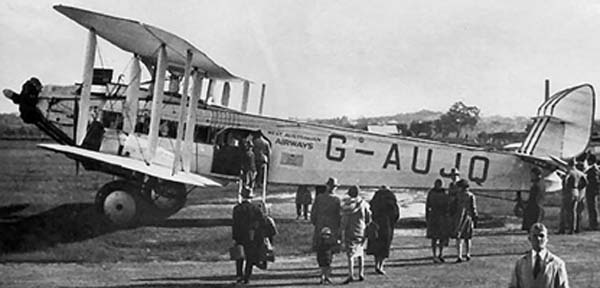
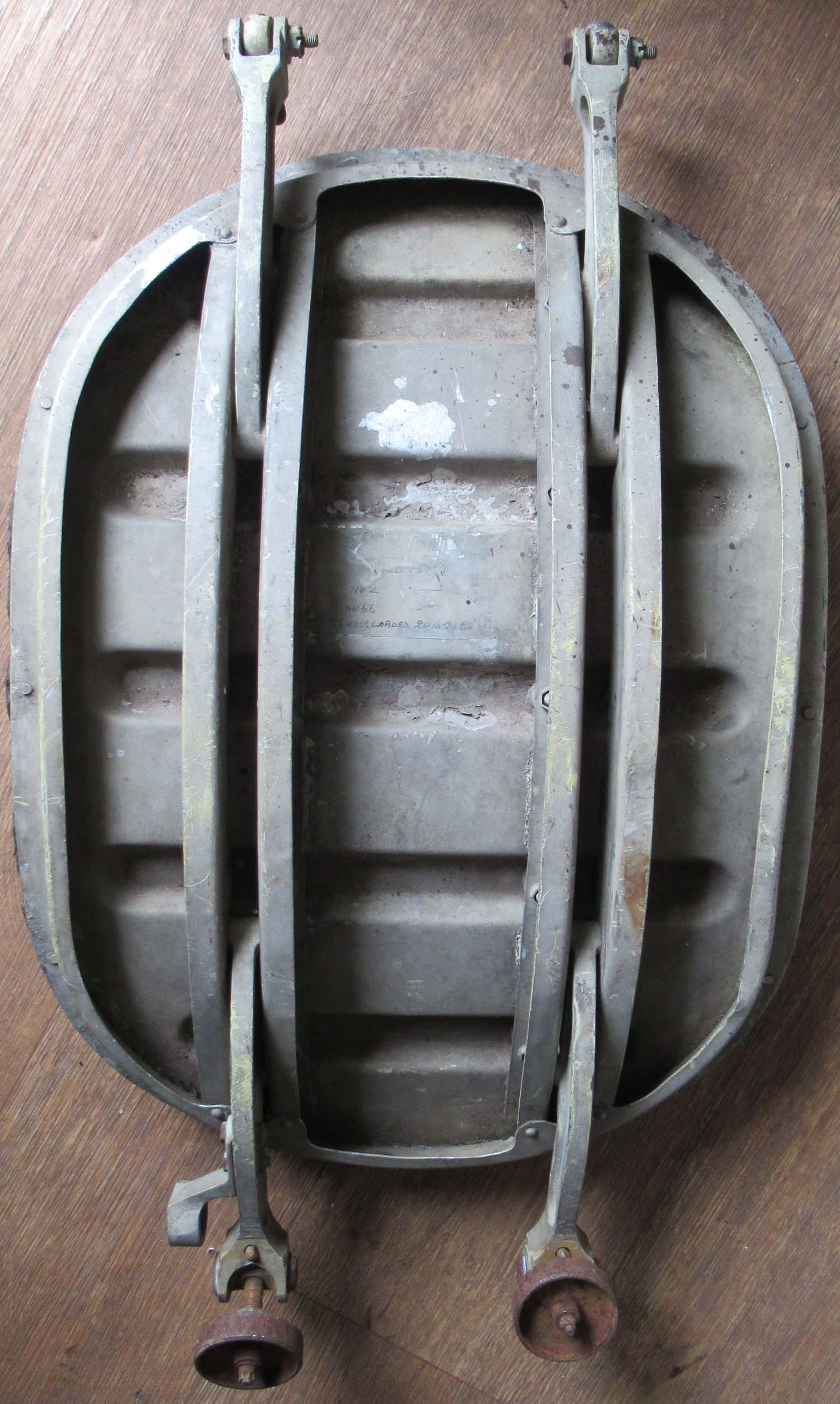
The Hercules was
designed for Imperial
Airways when
it took over the Cairo–Baghdad
air route from
the Royal Air Force.
The Hercules was a
three-engine two-bay biplane with room for seven passengers
and the ability to carry mail. Using three engines reduced
the risk of forced landings over remote desert areas.
To reduce the risk of
deterioration in tropical areas the fuselage was a tube
steel frame, with the cabin and rear baggage compartment of
plywood mounted inside it. The two pilots were in an open
cockpit above the nose while the cabin had room for a
wireless operator and seven passengers.
The South
African Air Force bought three Hercules from Imperial
Airways in 1935.
At the
start of the Second World War they were used as military
transport aircraft supporting South African forces around
Africa. One was broken up for spares in 1939 and the other
two were withdrawn from service and scrapped in 1943.
Two former West Australian Airways aircraft, the City of
Perth and the City of Adelaide were operated on the ferry
service in New Guinea between Lae and Wau from 1936.
The City of Perth crashed in February 1941 and the City of
Adelaide was destroyed by enemy action in 1942.
West Australian Airways ordered four Hercules aircraft for a
new passenger and mail service between Perth and Adelaide.
Following
acceptance testing in England the four aircraft were shipped
to Perth, Australia and re-assembled.
The first
eastbound service was flown by two aircraft, the City of
Adelaide and the City of Perth. They arrived in Perth on 29
May 1929 after flying the 1450 miles in 14 hours.
Two
aircraft were later sold to Imperial Airways and the
remaining two were sold to Stephens Aviation when the
airline was taken over by Australian Airlines.
|
|
Click on the pictures to enlarge
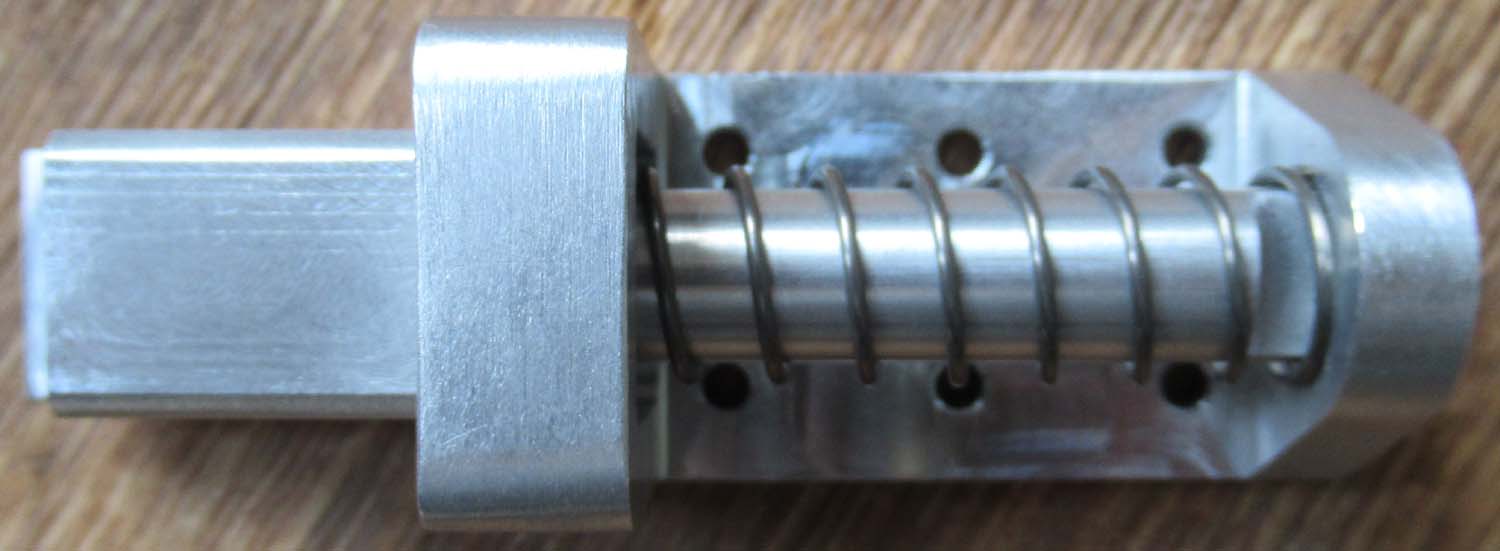
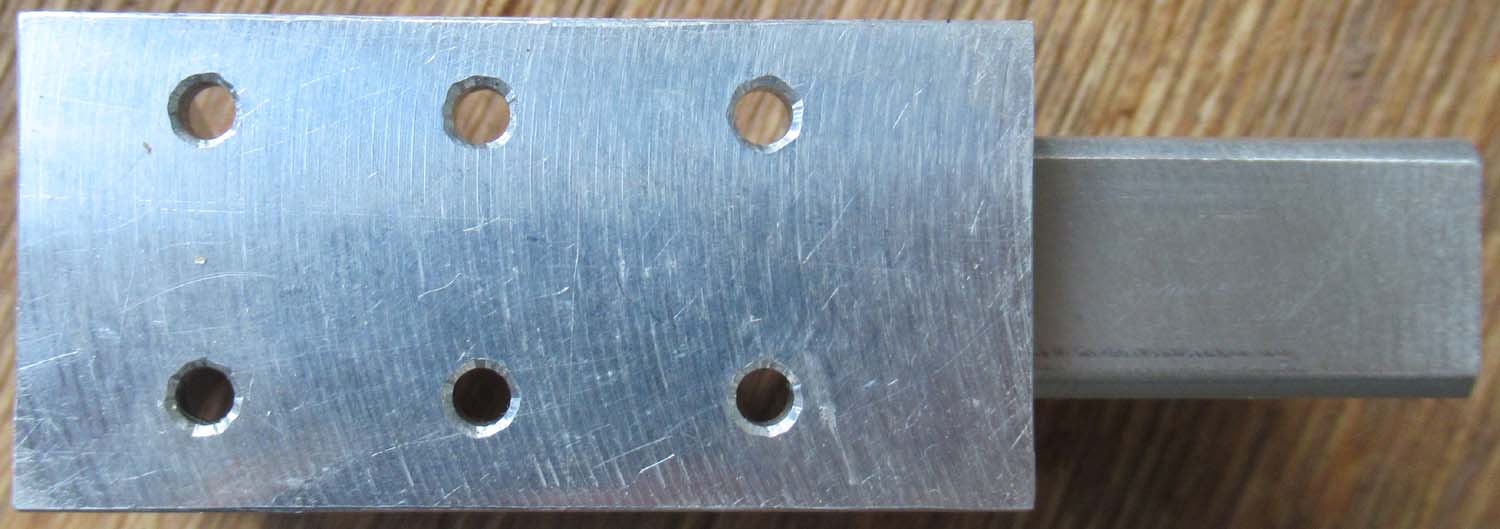
£145
each two available


|
Spitfire Door Catch (pg1 air)
Here is a top
quality reproduction Spitfire door catch in alloy and steel.
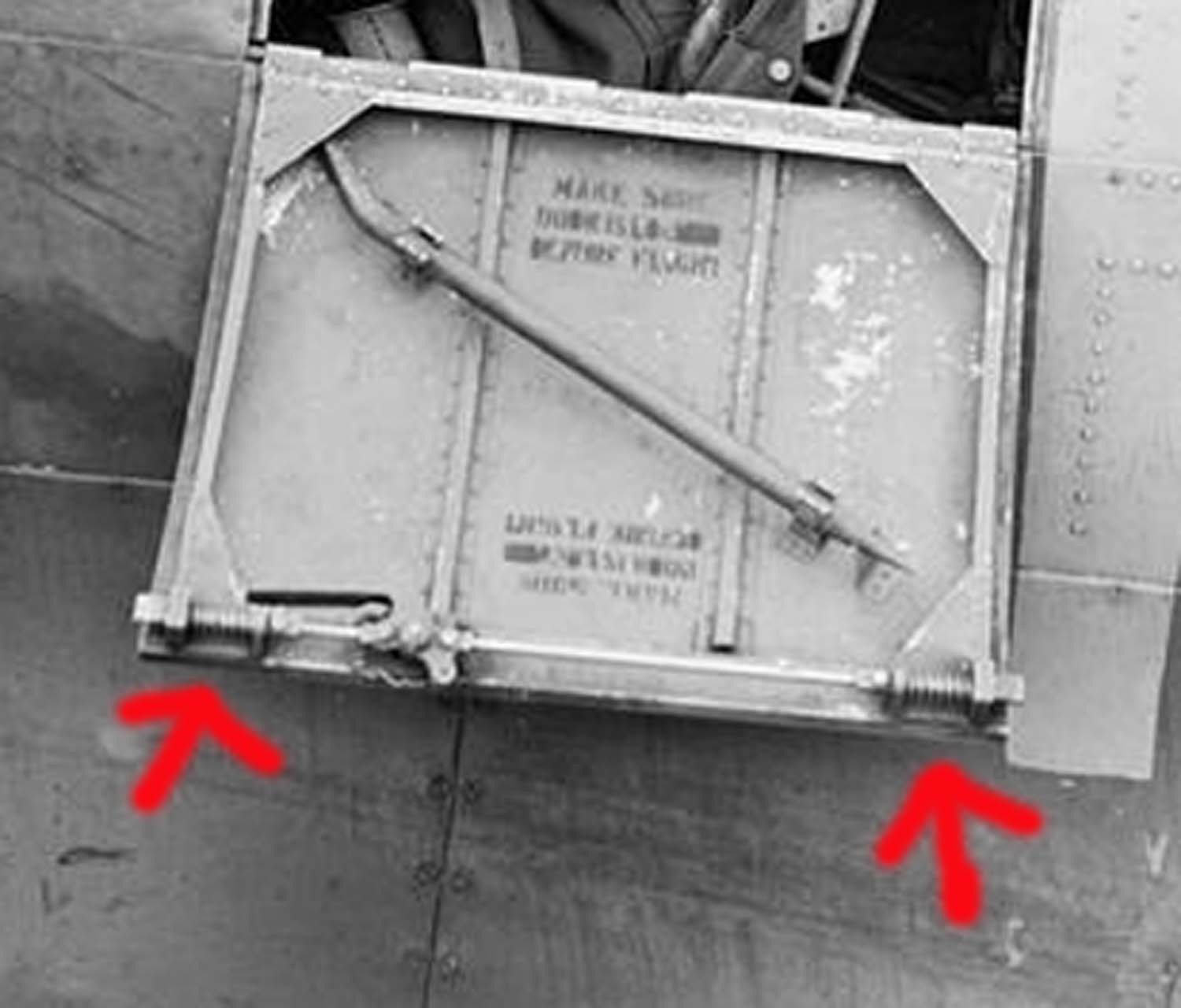
|
|
Approximately 113cm and
88cm in length
Out of stock
|
Repro Spitfire Cowling Stiffeners (pg1 air)
Here is a set of
reproduction cowling stiffeners.
Click on the pictures to enlarge.




|
|
Click on the pictures to enlarge.
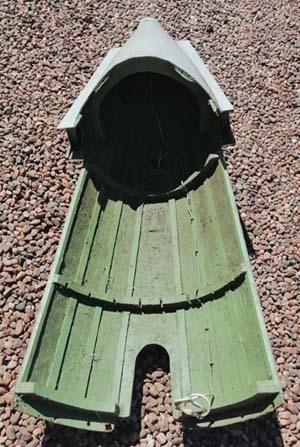
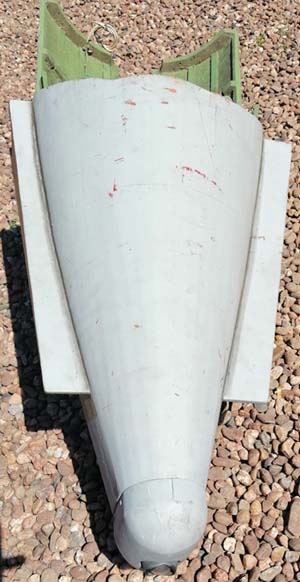
Click on the pictures to enlarge.
|
Mosquito tail section (Pg1 Air)
This is a superb
full scale replica of a Mosquito tail. It comes with some
original parts including the tail light and some original
fairings. Made to original spec out of wood.
To make
this peace is a huge amount of work and no small amount of
skill
.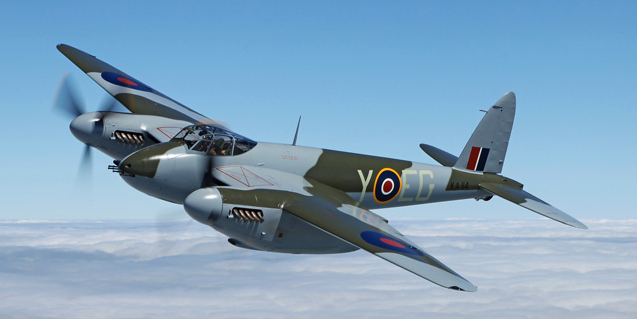
Click on the pictures to enlarge

Above
the Mosquito under construction you can see the tail unit in
the lower left of the picture.
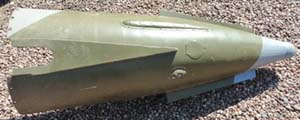
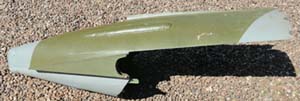
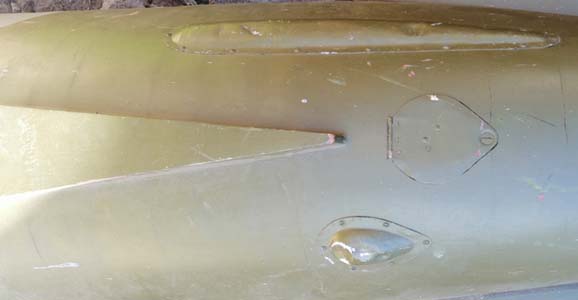
This is a
large piece
please contact me for a
shipping quote.
It measures 1.75
M long x 0.62 M wide.
£1200


|
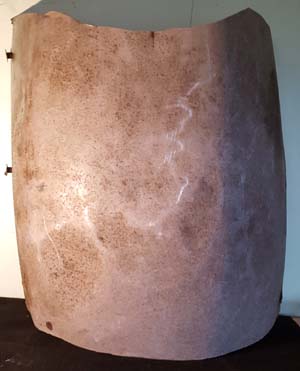
Click on the pictures to enlarge.
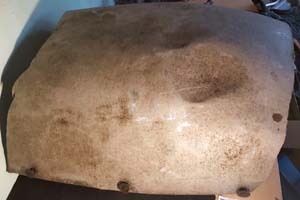
Click on the pictures to enlarge.
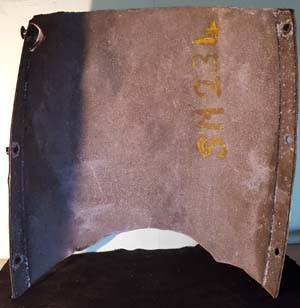 |
Original Spitfire nose cowling from Spitfire SM 234 MK XVI * (pg1 air)
Here is an
original cowling removed from MK XVI Spitfire SM 234.
approximately 720mm x 730mm
SM 234
reached 601 Squadron on the 1st November 1944 and it seems
to have spent much of its short career attacking V2 mobile
launch vehicles . Parts like cowlings often required small
modifications to get them to fit and so when they were
removed the ground crew were in the habit of marking them to
ensure they went back on the correct. airframe. This piece
was recovered from RAF Kenley in the 1960s.
From the
positions of the fasteners shown below is the position of
the cowling available just above the exhaust stubs.
.jpg) .jpg)
Above the
MK XVI Spitfire note the clipped wings as a primarily ground
attack aircraft the clipped wings made it less twitchy at
low altitude.
The Mk XVI was the same as
the Mk IX in nearly all respects except for the engine, a
Merlin 266. The Merlin 266 was the Merlin 66 and was built
under licence in the USA by the Packard Motor company. The
"2" was added as a prefix in order to avoid confusion with
the engines, as they required different tooling. All Mk XVI
aircraft produced were of the Low-Altitude Fighter (LF)
variety. This was not determined by the length of the wings
(clipped wings were fitted to most LF Spitfires), but by the
engine, which had been optimised for low-altitude operation.
All production Mk XVIs had clipped wings for low altitude
work and were fitted with the rear fuselage fuel tanks with
a combined capacity of 75 gal. Many XVIs featured cut-down
rear fuselages with bubble canopies. On these aircraft the
rear fuselage tank capacity was limited to 66 gal.
Because of a slightly taller
intercooler and rearranged accessories on the Packard
Merlins a new, bulged upper cowling was introduced and also
appeared on late production IXs.
Armament for most
Mk XVIs consisted of 2 × 20 mm Hispano II cannon - each with
120 rpg - and 2 × .50 calibre Browning machine guns - each
with 250 rpg. 1 × 500 lb (227 kg) bomb could be carried
underneath the centre rack, and 1 × 250 lb (114 kg) bomb
could be slung under each wing. Some production aircraft had
rear fuselage fuel tanks in addition to the main tank which
allowed it to fly approximately as far as the Spitfire Mk
VIII. Problems with the licence-built engines limited
introduction to front-line squadrons for several months. A
total of 1,054 Mk XVIs were built by Castle Bromwich
Out of stock more Spitfire parts always wanted
please contact me
Over seas buyers please contact me for
a shipping quote
|
|
Click on the pictures to enlarge.
Seen in situ
below the ram is marked with an arrow.
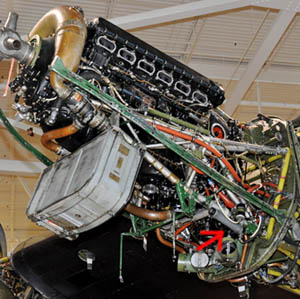
Out of
stock more required please
contact me
Please
contact me for a shipping quote. |
Lancaster Merlin engine mounts. (pg1 air)
Here is a pair
of Merlin engine mounts which from a
Lancaster. They are in good condition and usable , they
would be ideal for mounting a Merlin for display. Comes with
a hydraulic ram for operating the radiator shutter or
supercharger and several electrical blocks.
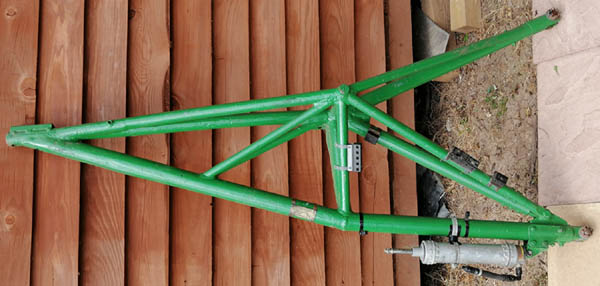 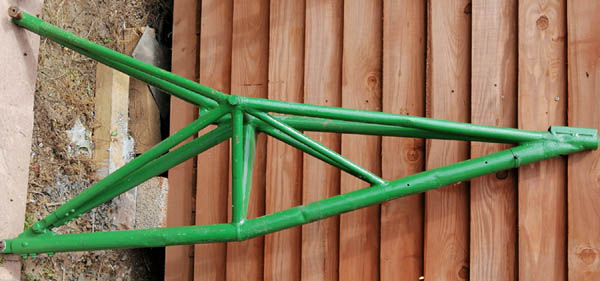
Click on the pictures to enlarge.
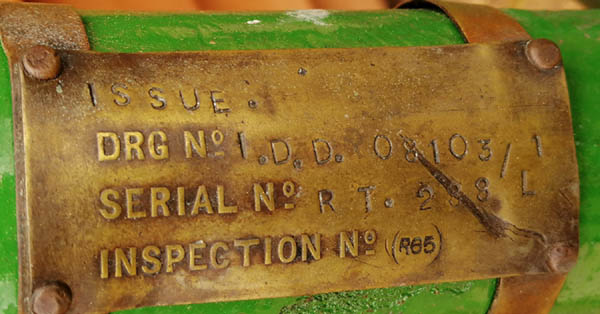 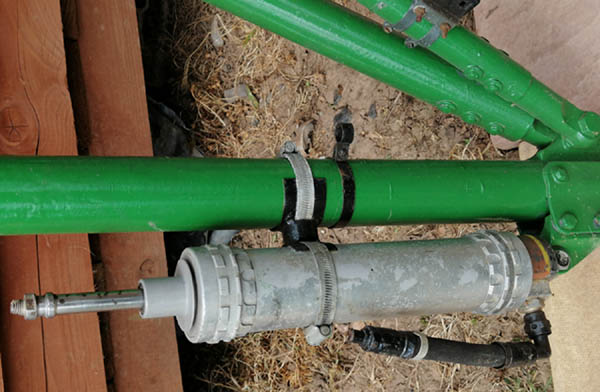
|

Click on the pictures to enlarge.

Part
numbers shown under

Click on the pictures to enlarge.
 |
Original MK I Spitfire
Aerial Attachments * (pg1 air)
The early
Spitfires used the TR9 radio set these were replaced with
VHF around the time the Battle of Britain ended
The TR9
radio required a wire running from the aerial to
the tail.
The two parts
shown are the attachments used to connect the wire to the
mast and the tail.
They are
original and Spitfire only parts you can see the part
numbers by expanding the pictures on the left. I believe
uses parts to be quite possibly unique.

Above a MK
II Spitfire you can see the wire from the aerial, to the tail.
The two parts available attach to the aerial mast and the
tail.
Out of
stock more required please
contact me |
|
Click on
the picture under to enlarge.
  |
Spitfire 50 Calibre tube *(pg1 air)
This is an original tube which housed
the 50 Cal machine gun inside the Spitfires wing and
protruding through the leading edge. This piece does have
some holes due to corrosion please enlarge the pictures left
. This would still be suitable as a pattern or a great
recognisable collectable.


£595


|
|
Click on
the picture's to enlarge.
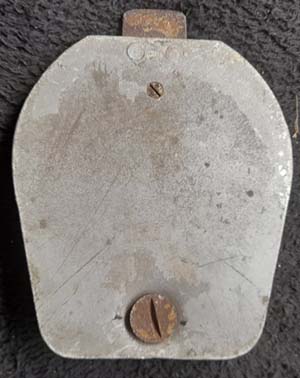
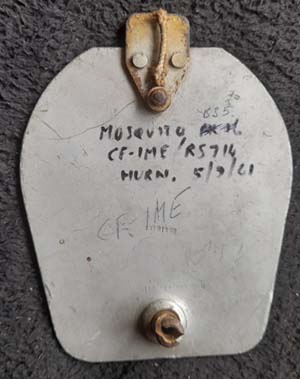
|
Mosquito Panel named aircraft (pg1 air)
This panel
was removed by the last owner when just a young lad. Its
from a DH 98.
He was a
big collector who visited scrap yards but also had the
presence of mind to record the aircraft serials he collected
them from.
This panel
came from Mosquito CF-IME/RS716 from Hurn on the 5/09/61
There is a picture of
this aircraft on this link. https://www.airhistory.net/photo/9611/CF-IME
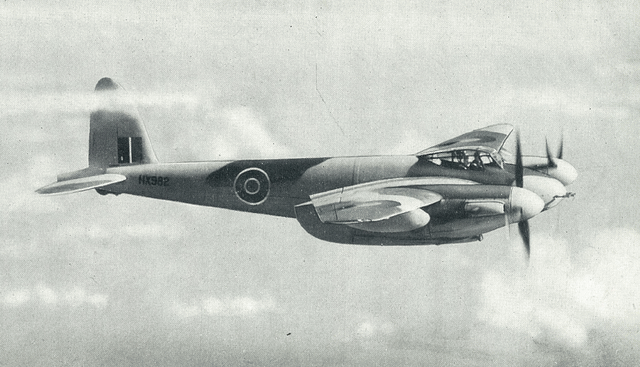
£195


|
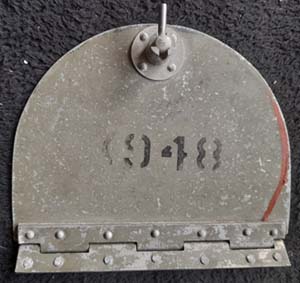
Click on
the picture's to enlarge.
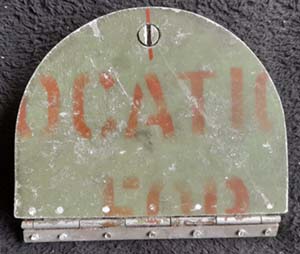
£295


|
MK III Seafire
aircraft panel PP948/149 of the Irish Air Corps (pg1 air)
This panel
was removed by the last owner when just a young lad. Its
from a MK III Seafire.
He was a
big collector who visited scrap yards but also had the
presence of mind to record the aircraft serials he collected
them from.
This panel
came from Seafire PP948/149 of the Irish Air Corps.
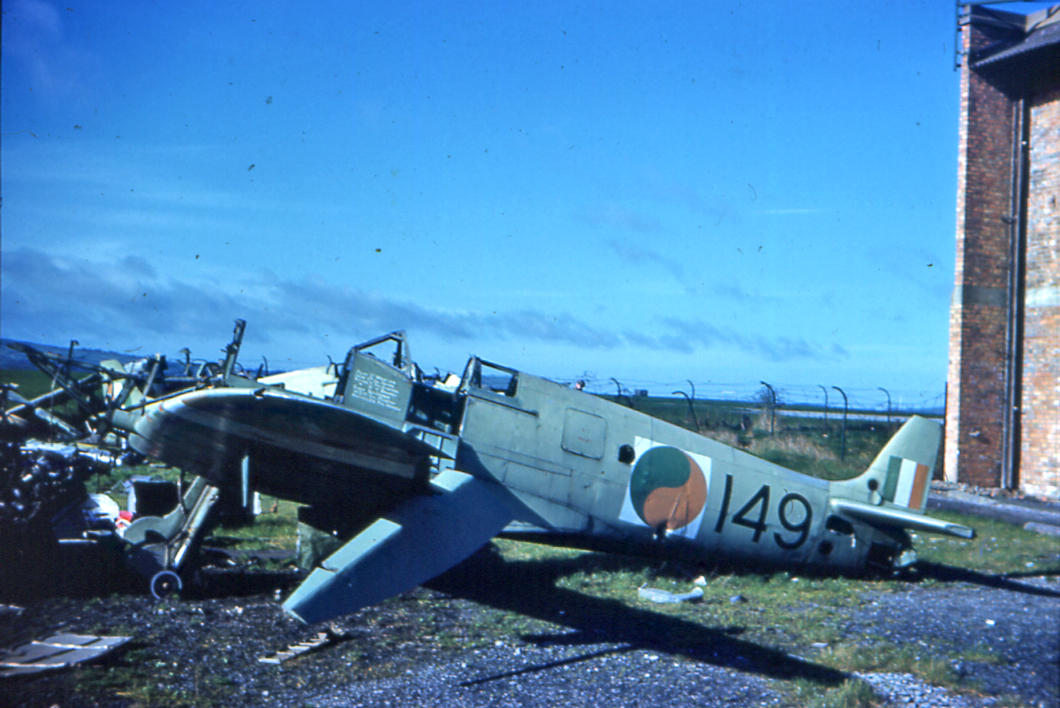
|
|
Click on
the picture's to enlarge.
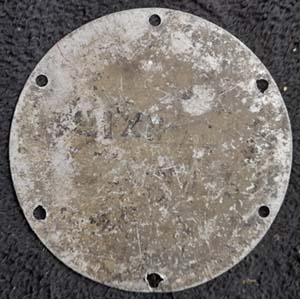
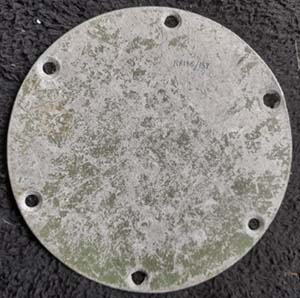
|
MK III Seafire
aircraft panel RX 168 of the Irish Air Corps (pg1 air)
This panel
was removed by the last owner when just a young lad. Its
from a MK III Seafire.
He was a
big collector who visited scrap yards but also had the
presence of mind to record the aircraft serials he collected
them from.
This panel
came from Seafire RX 168. This
aircraft has a varied career and was refurbished to F MK VC
in`1947 sold to Dublin Tec Inst in 1962 and scrapped in 1963
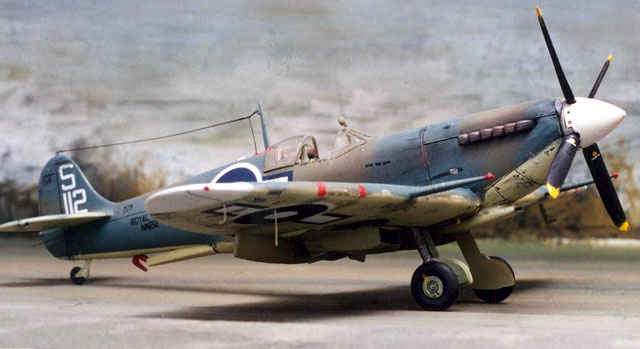
Shown above
the MK III Seafire
Out of stock more Spitfire or Seafire parts always
wanted please
contact me
|
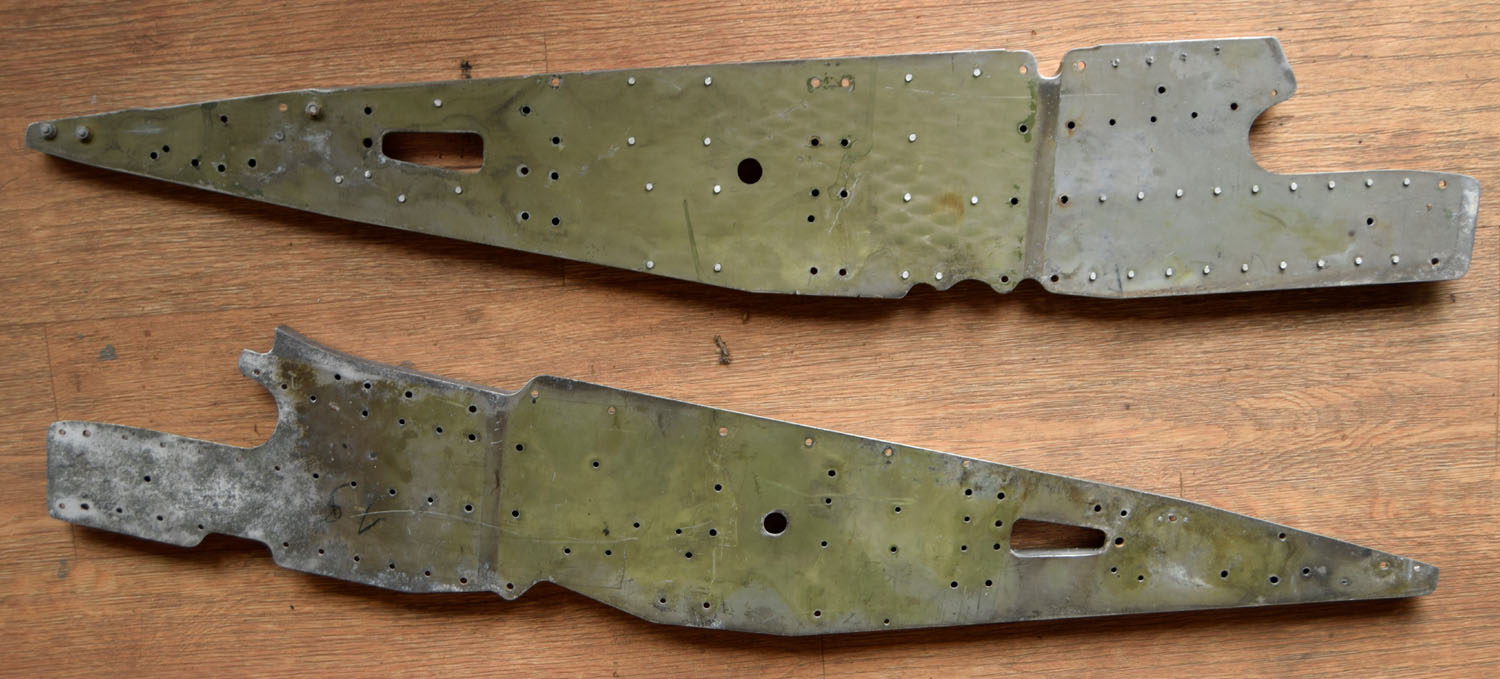 Click on
the picture's to enlarge.
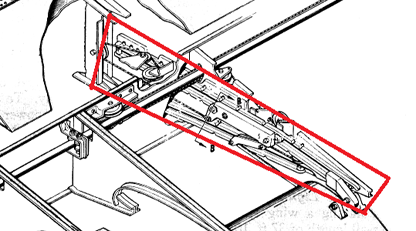
Click on
the drawing above to see the pieces in situ in the P 38
£595
the pair


Overseas
buyers please
contact me for a shipping
quote. |
P 38 Lightening Flap spars (pg1 air)
Here is a
pair of P 38 Flap spars they appear to be straight and in
good condition.
Part
Numbers 235452-LH. 14 S. ALCOA C8-28
Seen Under the
P38 Lightening.
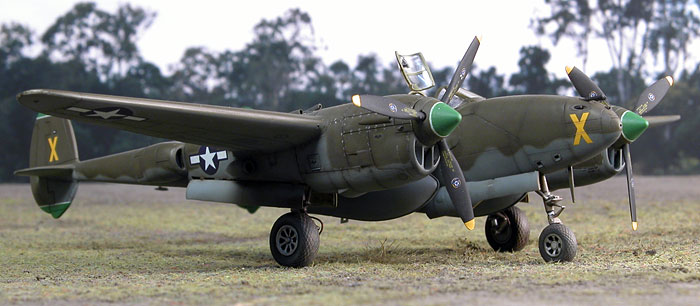
Click on
the picture's to enlarge.




|
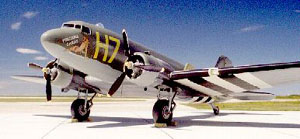
Out of stock
more required please
contact me |
C 47 Elevator
(pg1 air)
Here is an elevator from a C47, this
piece is huge so potential buyers should
contact me to
figure out the shipping options.
The Douglas C-47 Skytrain or Dakota is a military transport
aircraft developed from the civilian Douglas DC-3 airliner.
It was used extensively by the Allies during World War II
and remains in front-line service with various military
operators.
 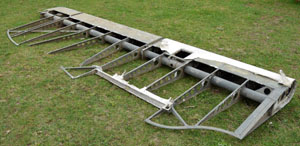 
Click on
the picture's to enlarge.
 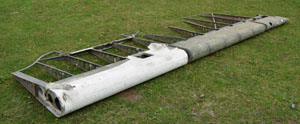
|

Click on
the picture's to enlarge.

Out of
stock more required please
contact me |
P51 Mustang Exhaust Cowling (pg1 air)
This is great piece an exhaust engine
cowling from the P51 Mustang. It appears to be made of
stainless steel and is corrosion free.
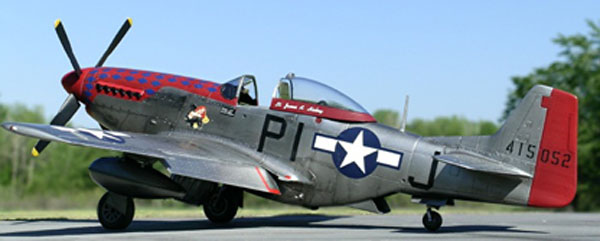
A veteran of Wo |
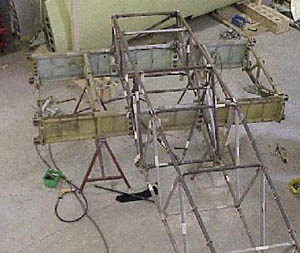
Above and
right original centre section.
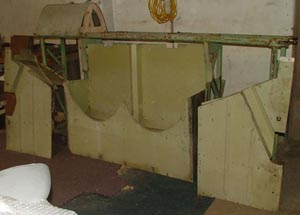
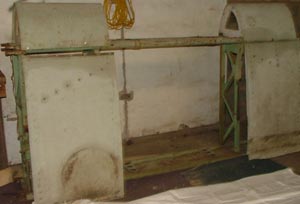

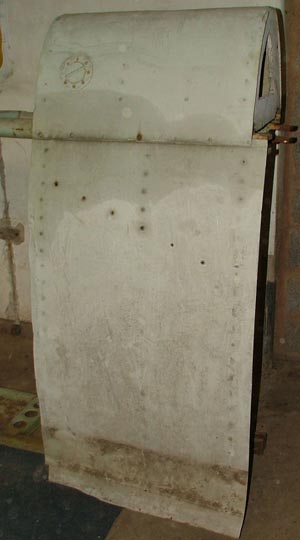
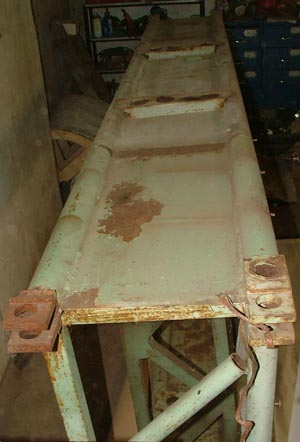
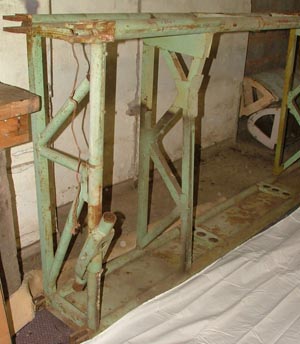
|
Hurricane centre section (pg1 air)
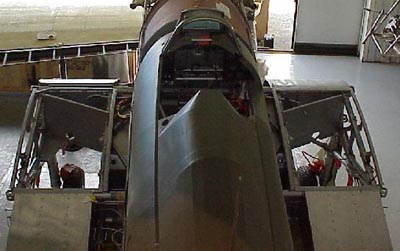
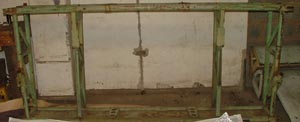
Available as a
result of the break up of our Hurricane project is a
complete centre section including frame cowlings and
undercarriage attachments
new made from
steel for a static Hurricane project.
It is extremely strong and was made to cope with a running
Merlin. This piece is the heart of the Hurricane, the
original, seen under is an extremely complicated piece made
from multi sided tubing that has to be made specially
manufactured at huge cost. This is a unique piece for any
Static Hurricane project and something which took well over
100 hours to construct using original drawings. The
complicated original construction was replaced with tubular
and box section steel and is very close in appearance to the
original. The dimensions are as original. The cowlings shown
are included. This will have to be collected or we can
deliver for a cost of £1 per mile in the UK. To ship
oversees will be expensive and I would suggest you get a
shipping quote before purchase. I would estimate its weight
at around 250 to 350 Kgs.
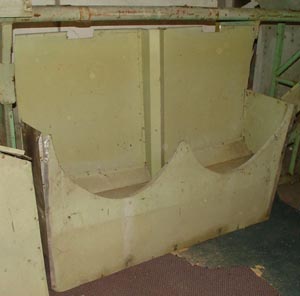
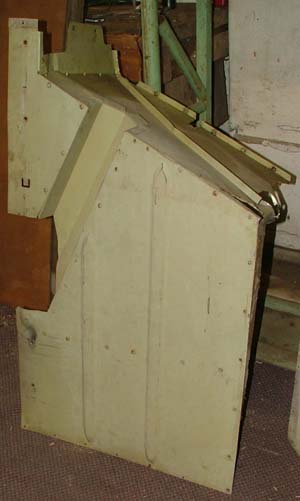
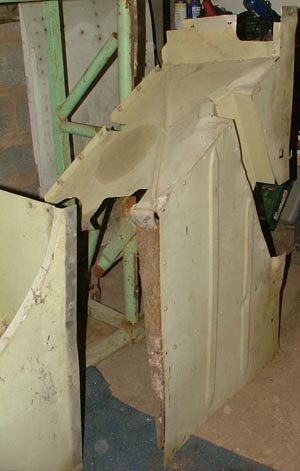
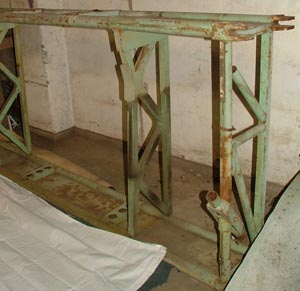
£2800

 |
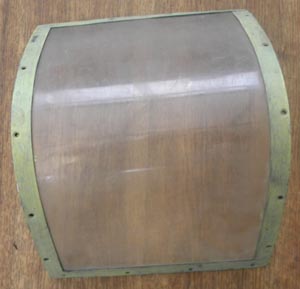
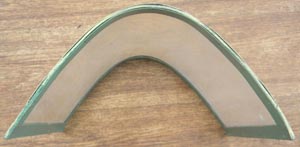
Click on
the picture under to enlarge.
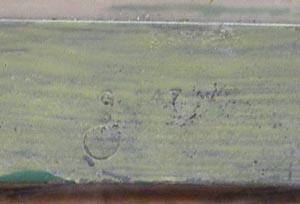 |
Hurricane
landing light lens and frame (pg1 light)
This superb piece is an original
corrosion free landing light frame and lens. Fitted on the
leading edge it protected the Hurricanes landing
light.
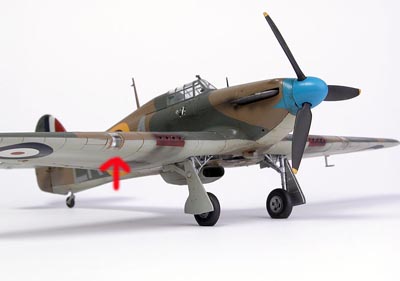
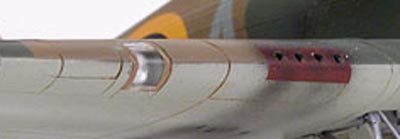
A stunning original piece of Hurricane. See this in
lighting section link.
|
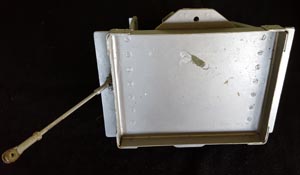
Click on the
picture to enlarge
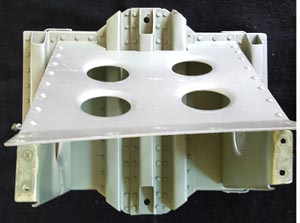

|
MK IX Spitfire battery tray*(pg1 air)
This is a
new made battery tray for a MK IX Spitfire its is made to
the exact specification and is quite a complicated piece
with many individual parts. This took many hours to make.
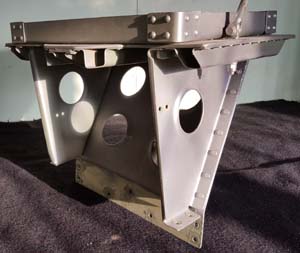
Click on the
picture to enlarge
£995


|
|
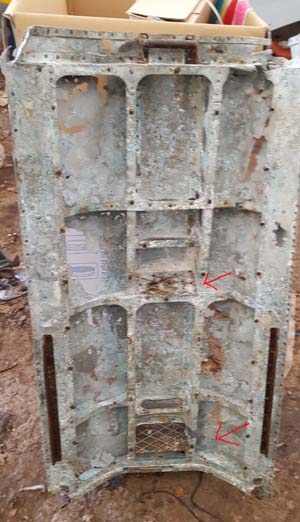
Click on the
pictures to enlarge them
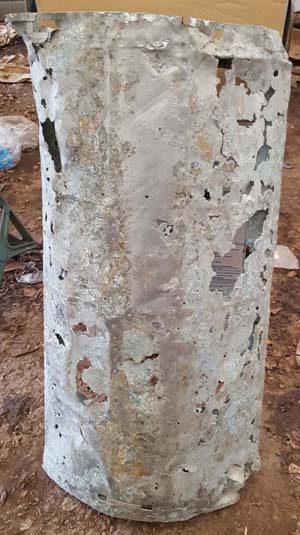

Find this piece in the relics section link
here
|
Dornier 17 Door (pg 1 Relics)
Here is a complete access door
from a DO 17 bomber recovered from Holland .
The door drops down out of the
belly of the aircraft once closed the door acts as a floor for
the gunner to lie on .
The door although damaged it
is complete and still has the access steps door handle attached
and armour plate to protect the gunner. A small part of the
original wooden floor is attached to the armour plate.
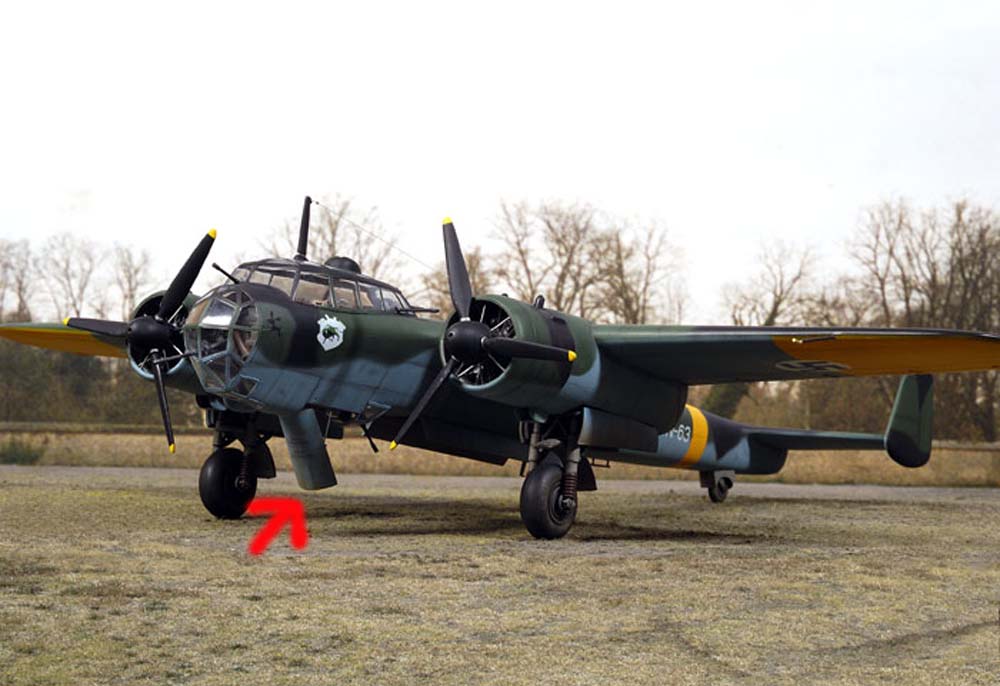
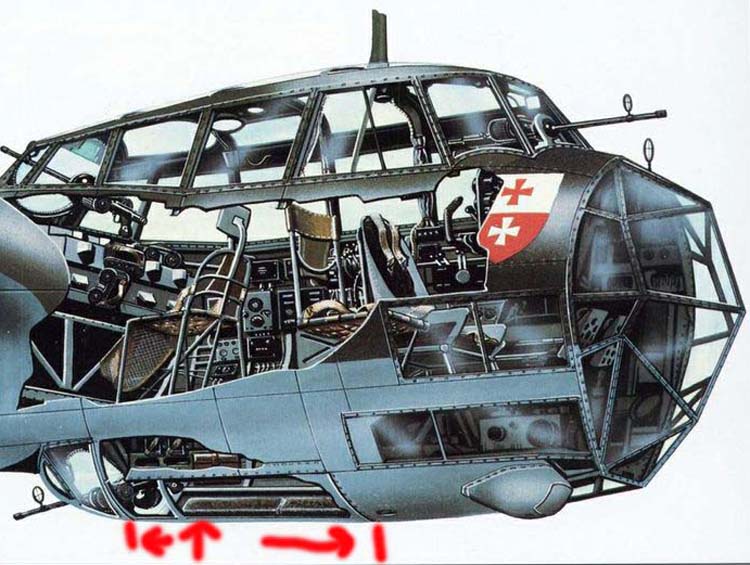 |
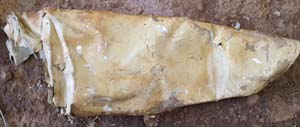
Click on the
pictures to enlarge them

Find this piece in the relics section link
here
|
BF110 wheel door (pg 1 Relics)
Here we have a wheel door from a BF 110 it
still has its ID plate attached see left, I stand to be
corrected but I believe with German parts it is often possible
to identify the specific aircraft from the plate please contact
me if you have any further information on this.
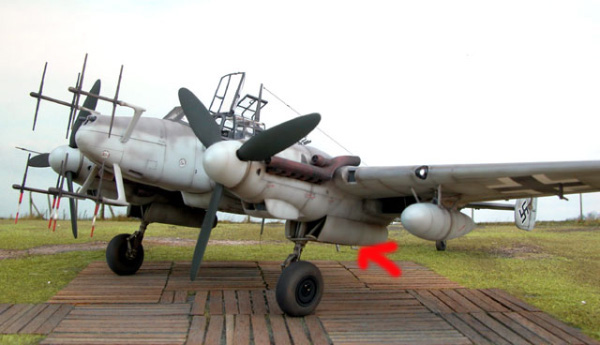
The Messerschmitt Bf 110,
often called the Me 110, was a twin-engine heavy fighter (Zerstörer –
German for "Destroyer") in the service of the Luftwaffe during
WWII. Goring was a proponent of the Bf 110, and nicknamed it his
Eisenseiten ("Ironsides").Development work on an improved
type to replace the Bf 110, the ME 210 began before the war
started, but its teething troubles resulted in the Bf 110
soldiering on until the end of the war in various roles,
alongside its replacements, the Me 210 and the ME 410. |
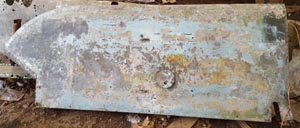
Click on the
pictures to enlarge
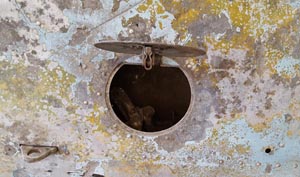
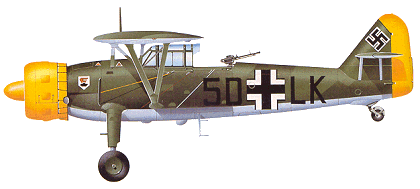
This piece is
huge measuring 2.3 metres by 0.850 metre please
contact me
for a shipping quote.
Out of stock, more always wanted.
Please contact me |
HS 126 Luftwaffe recon aircraft tail plane (pg1 air)
This is
superb and extremely rare piece a complete tail plane from a
HS 126 this piece is in remarkable condition and was
recovered from Russia. It has different coloured camouflage
paint still surviving suggesting that it served in several
campaigns before its demise in Russia.
The Henschel Hs 126 was the
Luftwaffe's main short range reconnaissance aircraft in the
early years of the WWII, taking part in the invasion of
Poland, the campaign in the west in 1940 and the first year
of the invasion of the Soviet Union.
The Hs 126 was an all-metal
stressed-skin parasol wing monoplane, with a fixed
undercarriage. The wing was supported by four main struts,
two to each side, with extra bracing between the fuselage
and the centre of the wing. The main wheels were mounted on
single struts, with internal bracing (cantilevered),
attached at ninety degrees to the fuselage. The level
angular wing was slightly swept back, with straight edges,
and a V-shaped notch at the centre of the trailing edge,
above the pilot's cockpit. The cockpit was semi-enclosed,
with the pilot under glass but the observer in an open
position.
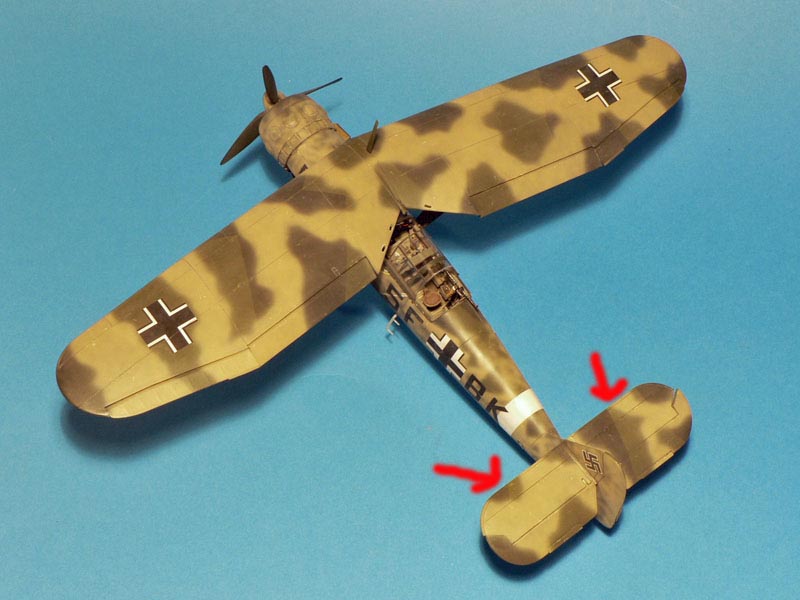
The HS 122 appeared in 1935. It was
similar in appearance to the Hs 126, but its performance was
disappointing. Henschel were asked to redesign the aircraft
to use the new BMW Bramo Fafnir 323 radial engine. A team
led by Henschel's chief designer, Dipl Ing Freidrich
Nicolaus, took the opportunity to redesign most elements of
the aircraft, to produce the Hs 126.
The new aircraft was two feet longer
than the Hs 122. The basic parasol wing layout was retained,
but a new more angular wing was developed. A cantilever
undercarriage was used, allowing each wheel to be supported
by a single streamline strut in place of the two struts of
the Hs 122. The front half of the cockpit, containing the
pilot, was enclosed, while the observer/ gunner's section
remained open. It was to be powered by the Bramo 323 Fafnir
radial engine. |

Click on the
picture to enlarge
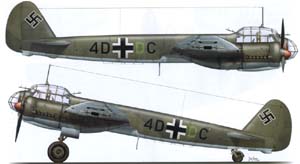
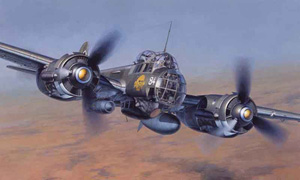
international
buyers please
contact me
for a shipping quote.
£595
Reserved |
Junkers JU 88 Aileron(pg1 air)
Here we
have an aileron from a JU 88 substantially complete but with
some damage this piece was recovered in the Arnhem area of
Holland still with its original paint.
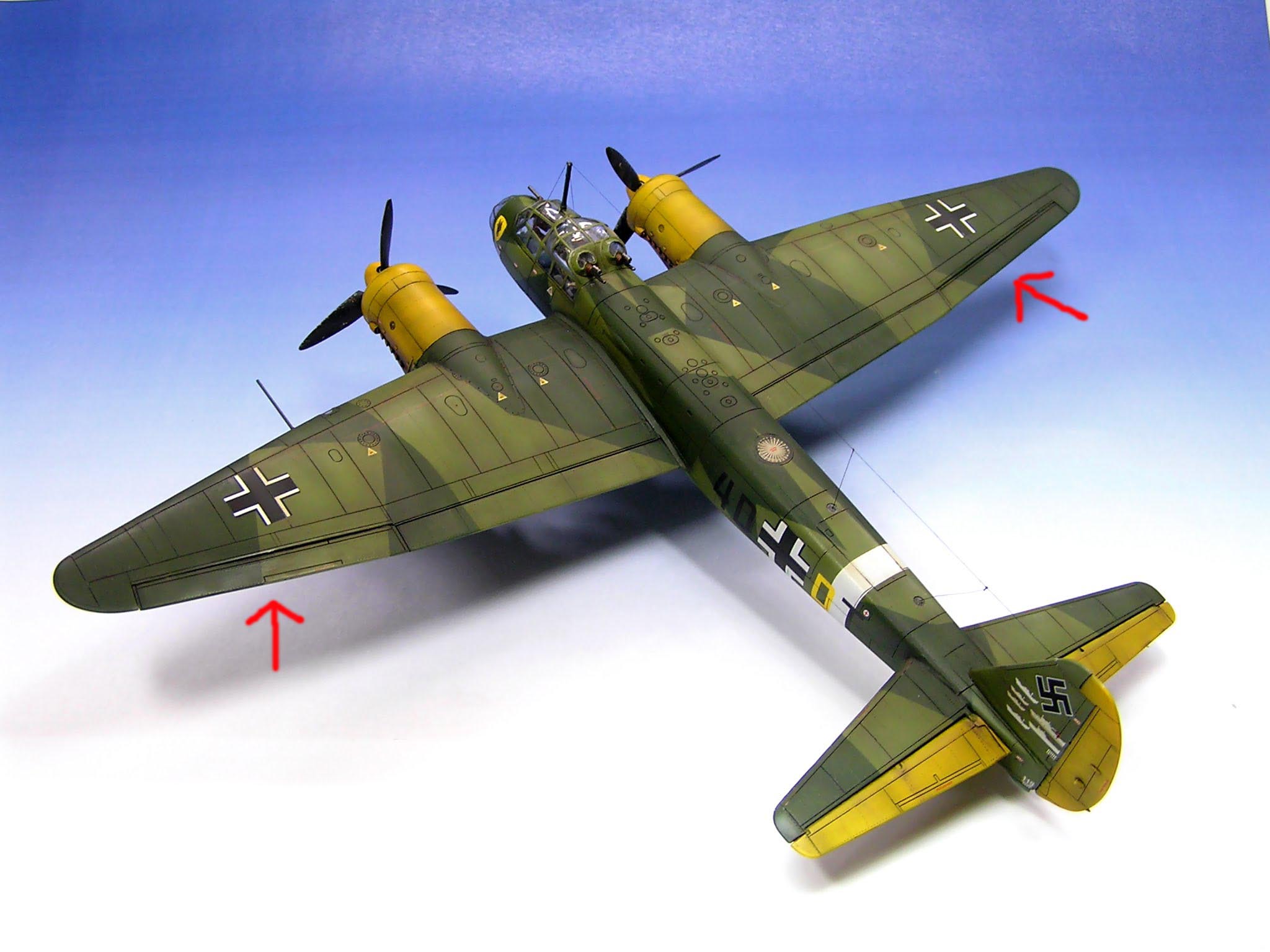
In versatility and performance, the
Junkers Ju 88 could be compared to the British Mosquito or
in some aspects, the B25.
In any event, approximately 15,000
aircraft were produced in various forms from 1939 to 1945.
An astonishing 104 prototypes and dozens of variant were
built, with more than 9,000 produced as bombers. It had
flexibility and was the most modifiable aircraft during the
war. It was said to be easy to fly with good handling,
highly manoeuvrable and responsive. It was without a doubt,
the finest German bomber to see extensive service throughout
the war. |
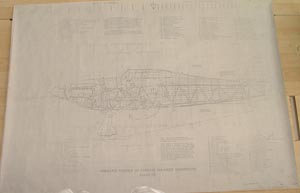
Click on the
picture to enlarge
 |
Hurricane inboard profile plan(pg1 air)
Here we
have a plan got a Inboard Profile Plan for the Hawker
Hurricane
The
picture taken is not very clear however you will receive a copy of the
plan shown taken from an original large scale drawing
This will
be clear and easy to read
£25


|
|
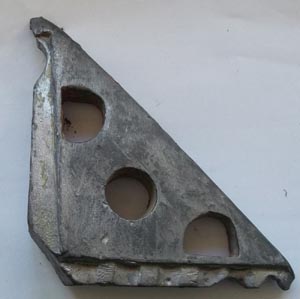
Click on the
picture to enlarge it
£375


|
Original Spitfire rudder horn balance weight (pg1 air)
An
original heavy piece of Spitfire in good condition with
inspection stamps and Supermarine part number. Used in the tail to
balance the rudder of the MK XIV Spitfire. The Mk XIV was
fitted with the 36Ltr Rolls Royce Griffon V12 the MK
XIV had nearly twice the power and weight of the original MK
I Spitfire.
Under the
Mk XIV Spitfire low back
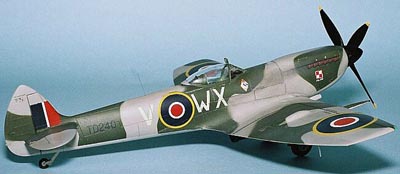
Part
number 373 23
2143
373= Spitfire
MK XIV
23= Centre
rudder
|
|
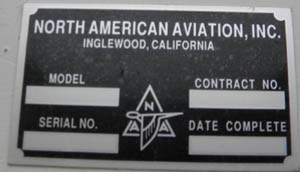
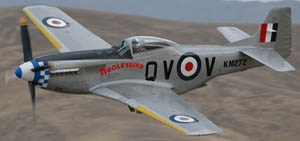 |
P 51 data plate (pg1 air)
Here is
an original blank data plate as fitted to the P 51 Mustang .
£25


|
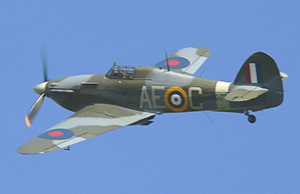
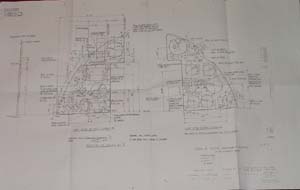 |
Hawker Hurricane panel plan(pg1 air)
He we
have a dimensional plan for the Hawker Hurricane main
instrument panel.
IT is NOT 1;1 scale but has all the
dimensions you need to built the full size article. Ata
guess I would say the plan is 1/2 scale.
Hurricanes are one
of the hardest aircraft to get drawings and its taken allot
of searching to obtain this. You will receive good quality
readable copy.
£25


|
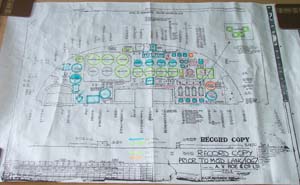
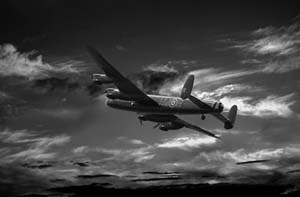 |
Lancaster panel plan (pg1 air)
This is a plan
of the layout for a Lancaster instrument panel.
It is not
the best of plans but Lancaster drawings of the panel are
notoriously hard to get hold of. It does show the relative
positions of the instruments.
The plan is about 1/2 scale,
the text is not too clear but its the best we can do for the
present.
£25

 |
|

Click on the pictures to
enlarge them.
 |
Spitfire compass tray
(Pg 5 Compasses
and Clocks 45)
Now available exact
replicas of the Spitfire compass tray, this is a very
difficult piece to replicate these are perfect copies made
using original drawings they will be supplied painted.

Click on the pictures to enlarge them
£450 Available for sale now in
instruments clocks and compasses section
|
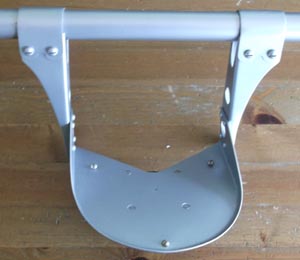
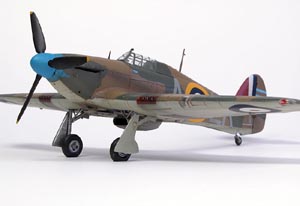
|
Hurricane Compass Tray (pg1 air)
Superb high quality new built
compass tray for the Hurricane complete with mounting
bracket and compass correction.


Out of Stock More Wanted
Contact Us
|
|
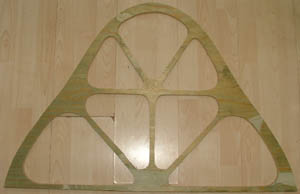
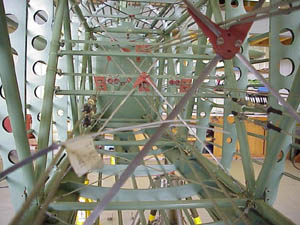
You can just
see the top rear top frames fitted to the metal framework of
the Hurricane above.
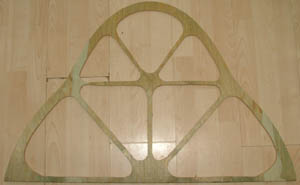
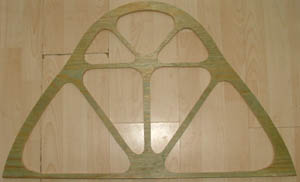
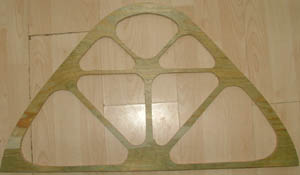
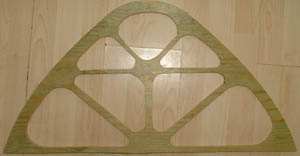
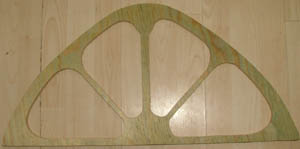 |
Hurricane Top Fuselage
Frame's (pg1 air)
START BUILDING
YOUR OWN HURRICANE
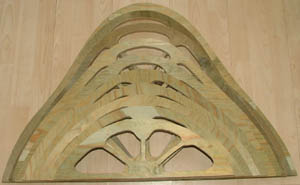
Click on
the picture's to enlarge
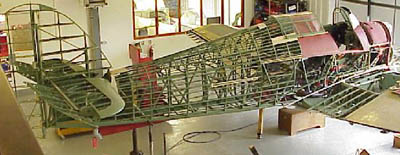
Here we
have the Plywood frame's for the rear top of the Hurricane
Fuselage. These have been made as exact copies from our
original patterns. They are not suitable for flying. The
formers attach to the metal frame and would be joined by
stringers and fabric covered. The lower fuselage side and
bottom ribs
will be available shortly.
These are made to order in any spec of wood you need,
they are cut out by hand and take 40 hrs per set. In birch
they currently cost about £1600 per set
Contact me for a quote.
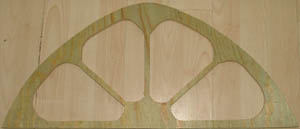
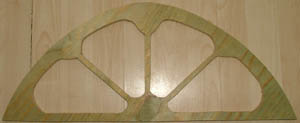
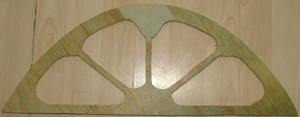
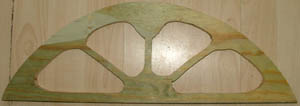 |
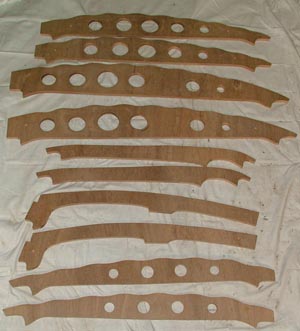
Click on the
pictures to enlarge
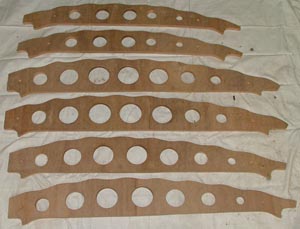
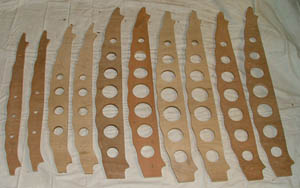 |
Hurricane side Fuselage Frame's (pg1 air)
START BUILDING
YOUR OWN HURRICANE
These are
quality new made wooden side frames for a static Hawker
Hurricane rear fuselage, they connect to the metal frame to
form the aerodynamic shape. To make these is a huge amount
of work and take many hours even if you can obtain drawings.
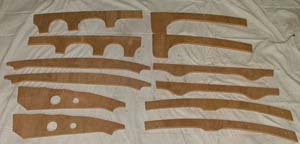
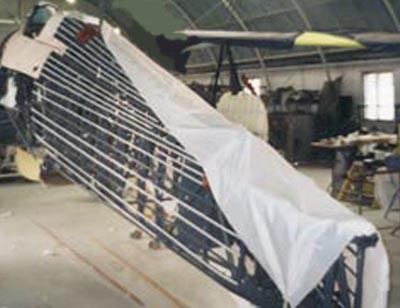
These are made to order in any spec of wood you need,
they are cut out by hand and take 40 hrs per set. In birch
they currently cost about £1600 per set
Contact me for a quote.
|
|
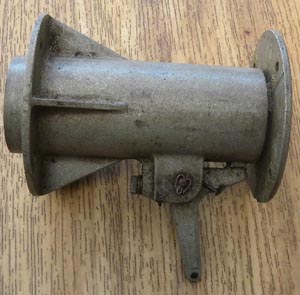
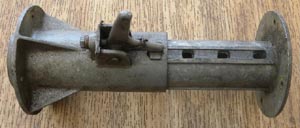 |
Seafire RATO seat MOD Mount (pg1 air )
This is an unusual modification
on a Seafire.
Seafires used on Carriers were modified to have
rocket assisted take off.
This piece of Supermarine
history is unique to the R.A.T.O. Seafires and is the head
re-straight for the seat. Information supplied by Ian.
Its in excellent
condition and fully functional with no corrosion and should
fly again with suitable checks.
Part number 357 35 3
£550


See this
link for another R.A.T.O. part
|
|
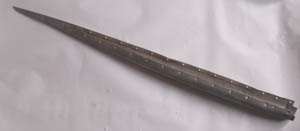
Click on the
pictures to enlarge them
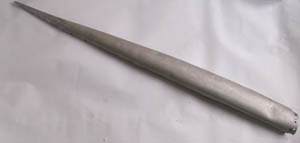
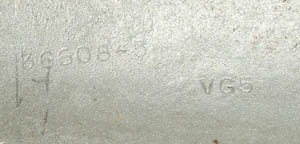
£275

 |
Original MK VII Spitfire Wing tip (pg1 air)
This is an original outer main
plane wing tip from a rare MK VII Spitfire.
The Mk VII was
designed as a high altitude Fighter and used the “c” type
universal wings, capable of carrying either eight machine
guns, four cannon or two cannon and four machine guns
depending on the situation, but with the extended wing tips
used on the Mk VI.
The Mk VII was a pressurised
fighter. It had a more advanced pressurisation system than
the Mk VI, using a sliding cockpit canopy, which was more
popular than the locked cockpit on the Mk VI. The best high
altitude version of the Mk VII was powered by the Merlin 71,
and could reach 416mph at 44,000 ft.
The Mk VII remained in
production from August 1942 until early in 1944, although
only 140 aircraft were produced in that time.
The Mk VII was a little
more successful than the earlier Mk
VI but the “interim” Mk IX turned out to be
capable of operating high altitude itself, and the Mk VII
soon lost its special status as a high altitude fighter,
although it remained in use throughout the war.
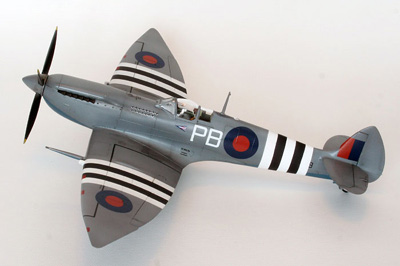
Shown
above a MK VII Spitfire note the sharp pointed wing design
|
|
Click on the pictures to
enlarge them

Click on the pictures to
enlarge them
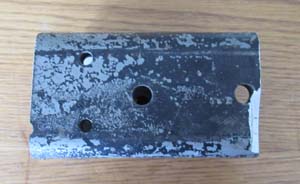
£75


|
Supermarine Seafire XV wing spar (pg1 air)
This is a superb piece for the Supermarine collector
Here we have a Piece of the Main Wing Spar
from a Seafire Mk. XV
The peace you receive may alter slightly
in appearance than the peace shown. The peaces sent to you
are cut from a single peace of spar as it increase along its
length the number of laminations decreases, to compensate
for this we increase the length of the peace sent.
The Whole Wing Spar has Part Number 377 08
Supermarine Seafire XV
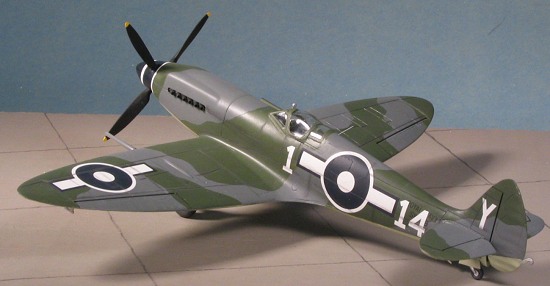
Shown under
the Wing spar Part Number
 |
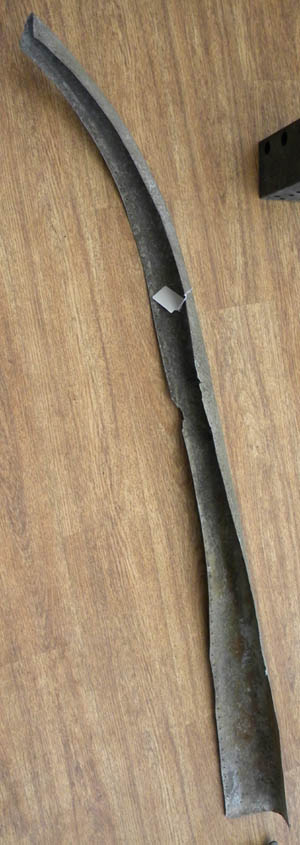
1.6m in
height click the picture to enlarge.
|
Vickers Wellington tail fairing (pg1 air)
This a substantial piece
of the famous Vickers Wellington design by the iconic
British engineer Barnes Wallis responsible for the
Dambusting bouncing Bomb.
This piece came from the
Wellington that crashed at Great Whernside.
Wellington
DV718 on Riggs Moor, Great Whernside.
On the night of 2nd/3rd September 1942 the crew of
this Wellington was tasked with a night cross-country
training exercise along with other aircraft from the same
training unit. They took off and flew north but bad weather
was effecting the Yorkshire Dales area on this night and
this aircraft was to fly into it. The crew undoubtedly were
having trouble with visibility flying through heavy rain and
in the low cloud they became lost. The aircraft then
descended over high ground, presumably so the crew could try
and ascertain their position. The aircraft struck the ground
between Nidderdale and Wharfedale on an area of high ground
known as Blake Hill, on Riggs Moor, to the west of
Kettlewell. The large fire after the impact destroyed much
of the fuselage section but one airman managed to escape and
get clear. He was found the next day and taken to Harrogate
General Hospital and after treatment at a hospital in
Preston he made a recovery. His four crew mates were not so
lucky, they were all killed.
This accident is one of a few in the Yorkshire Dales
which has been covered in a number of books in the last few
years, I do not plan on copying these works.
Pilot - Sgt George F Ridgway RNZAF (414680), aged 20, of
Hamilton, Auckland, New Zealand. Buried Windhill Methodist
Cemetery, Shipley, Yorkshire.
Navigator - P/O Donald H Lyne RAFVR (125540), of Whitby,
Cheshire. Seriously injured,
Bomb Aimer - Sgt Willie Allinson RAFVR (1145494), aged
34, of Hoyland. Buried Hoyland Nether Cemetery, Yorkshire.
Wireless Operator - Sgt Howard W Spencer RAFVR (1200412),
aged 31, of Olivers Battery, Winchester. Buried Chilcomb,
Hampshire.
Rear Gunner - Sgt Paul McLarnon RAFVR (999862), aged 22,
of Belfast, Northern Ireland. Buried Belfast Milltown Roman
Catholic Cemetery, Northern Ireland
RAF Henlow ATC
are thought to have removed this section from the crash site
prior to 1980.
See this link for pictures of the crash site.
£155


|
 Click on
the pictures to enlarge them.

 |
Spitfire Antenna
Mount (pg 1 rad)
Here we have a 100% Original mount that was used to attach
the aerial to the spitfire fuselage.
These are quite rare as
they are made of wood so they became rotted
It was Fitted to the
fuselage Just behind the cockpit to allow the fixing of the
Aerial
The Aluminium has Corroded
however the Rubber and the original wood still remain
This was removed from a
Crashed Aircraft at RAF Northolt


Click
Here to View on Our Radio Page
|
|

Click
Here to View on Our Radio Page
|
Spitfire areal mast (pg 1 rad) This
is a Spitfire areal mast. Strangely these are
made from steel with a wooden insert. Complete with its
wooden insert in excellent serviceable condition

Click on
the picture to enlarge .
|
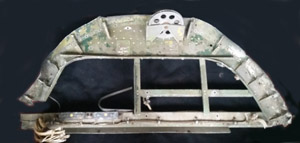 Click on
the pictures to enlarge them.
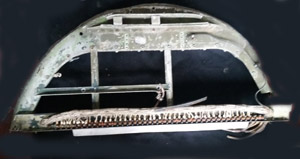 |
C-47 Frame 1 (pg1 air)
Here is a frame from In front
of the Cockpit on the C-47 Dakota
Frames were used to give
the Airframe Strength and Structure
This has a Pulley Wheel
Attached and a lot of electrical Wiring
£295


This Item is Large so International Buyers
Contact us for
a Postage Quote
|
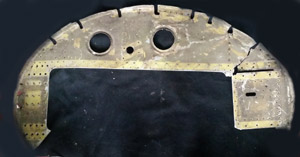 Click on
the pictures to enlarge them.
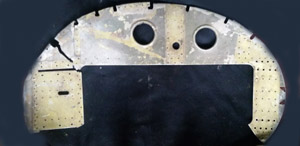 |
C-47 Frame 2 (pg1 air)
Here is a frame used on the
C-47 Dakota
Frames were used to give
the Airframe Strength and Structure
Unfortunately this Frame
has Broken but both Pieces are Present
£49


This Item is Large so International Buyers
Contact us for
a Postage Quote
|
|
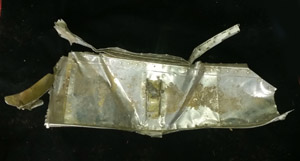 . .
Click on the
picture's to enlarge.
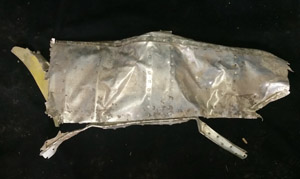
Click on the
picture's to enlarge.
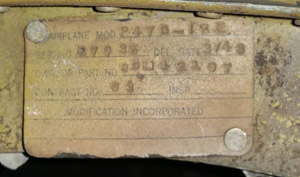
Please See
this in our
Relics
Section |
P-47 Thunderbolt Elevator
This is the Elevator for
P-47 Thunderbolt 42-7935 WZ-I. We purchased this from
aviation archaeologists from out latest trip to
Arnhem
It still has the hinge
and the point at where it would be connected to the controls
system. It also has a Plate Identifying it as a P-47D
Elevators are flight control surfaces, usually at the rear
of an aircraft, which control the aircraft's longitudinal
attitude by changing the pitch balance, and so also the
angle of attack and the lift of the wing. The elevators are
usually hinged to a fixed or adjustable rear surface, making
as a whole a tail plane or horizontal stabilizer
P-47 42-7935 at
Duxford May 1943
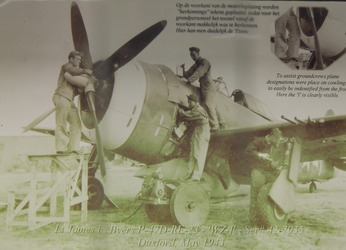
P-47
42-7935 was flown by Lt James F Byers of 430 Fighter
Squadron.
It
Crashed on the 30th July 1943 after a Collision with Lt. Col
Melvin F McNickle in P-47 42-7961 WZ-M during a bomber
escort mission
The
Collision happened when Lt. Col McNickle passed out due to a
failures in his oxygen equipment. He Collided with Lt. Byers
at 28000 ft over Winterswijk in Holland
Lt.
Buyers bailed out the Aircraft but his parachute refused to
open. He is now buried at Neuville en Condroz at the
American Ardennes Cemetery
Artists Impression of the Air
Collision
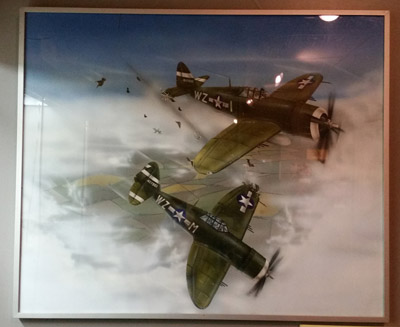
|
|
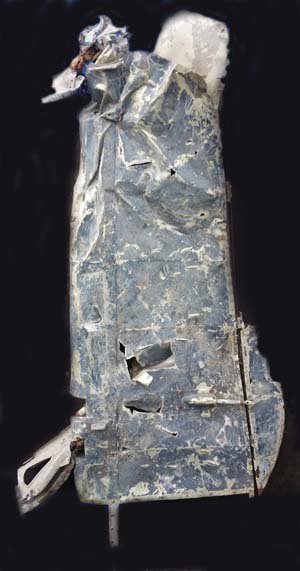
Click on the
picture's to enlarge.
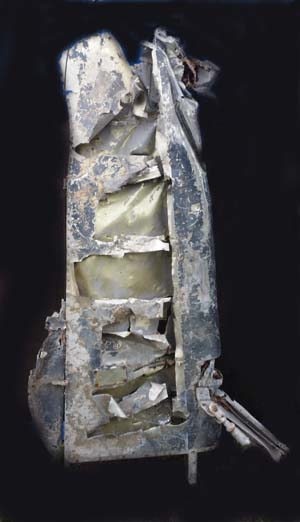 |
P-47 Thunderbolt Aileron (pg 3 relic nos 29)
This is the Aileron for a
P-47 Thunderbolt that was recovered by Aviation archaeologists
and Purchased on our
latest trip to
Arnhem.
It is a Large Piece in
Crashed Condition and
still has Part of the Trim Tabs Attached
P-47
Thunderbolt
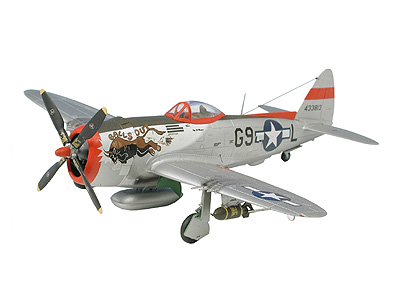
An
aileron is a hinged flight control surface usually attached
to the trailing edge of each wing of a fixed-wing aircraft.
Ailerons are used in pairs to control the aircraft in roll,
which results in a the plane banking
Trim
tabs are small movable sections resembling scaled down
ailerons located at or near the trailing edge of the
aileron. On most propeller powered aircraft, the rotation of
the propeller induces a counteracting roll movement due
to Newton's third law of motion, in that every action has an
equal and opposite reaction. To relieve the pilot of having
to provide continuous pressure on the stick in one direction
(which causes fatigue) trim tabs are provided to adjust or
trim out the pressure needed against any unwanted movement.
The tab itself is deflected in relation to the aileron,
causing the aileron to move in the opposite direction
Please See
this in our Relics Section
|
|
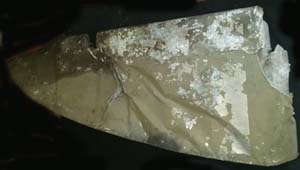
Click on the
picture's to enlarge.
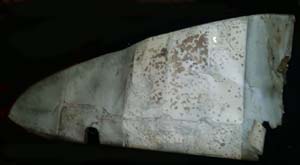
Click on the
picture's to enlarge.
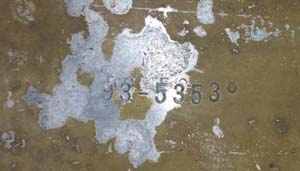
Click on the
picture's to enlarge.
|
P47 Elevator (pg 3 relic nos 36)
Here is a Elevator from a P47
Thunderbolt. This was purchased from an Aviation
archaeologist on our latest trip to
Arnhem.
This has a P47 Part Number
93-53538.
Republic P-47
Thunderbolt
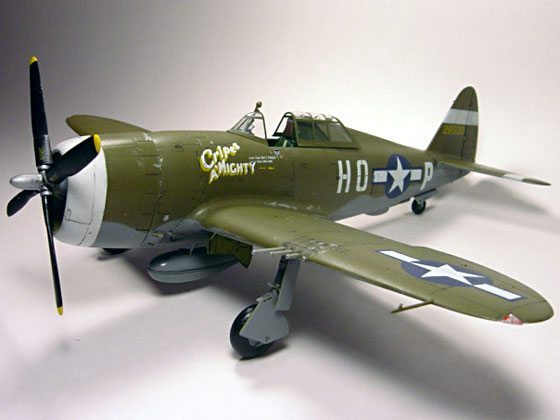
Please See
this in our Relics Section
|
|
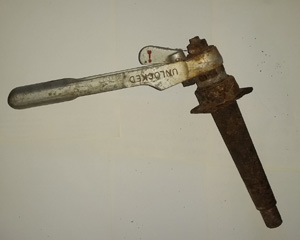
Click on the
picture's to enlarge.
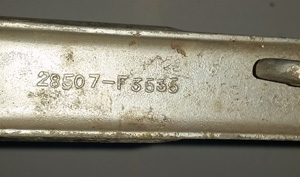
|
Vickers Wellington Wing Part
(pg1 air)
Here we have a Lever from the
wing of a Wellington
The Part Number is 28507 -
F3535
This is from the Top Outer Main-Planes In the
Case of the wellington this means the section of wing
outboard of the engine nacelle
It
comes from the Main Spar Boom
£125


|
|
Click on pictures to enlarge
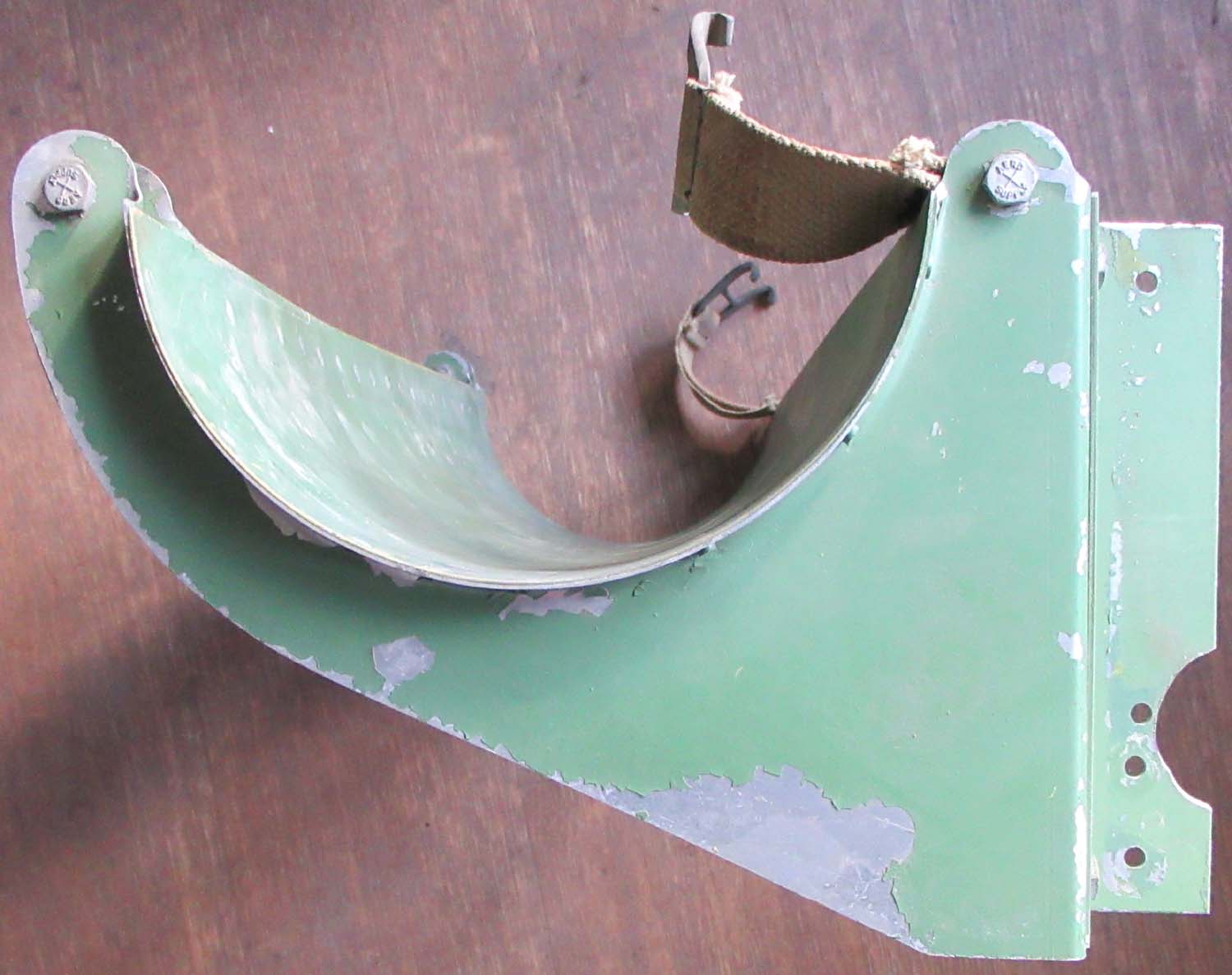
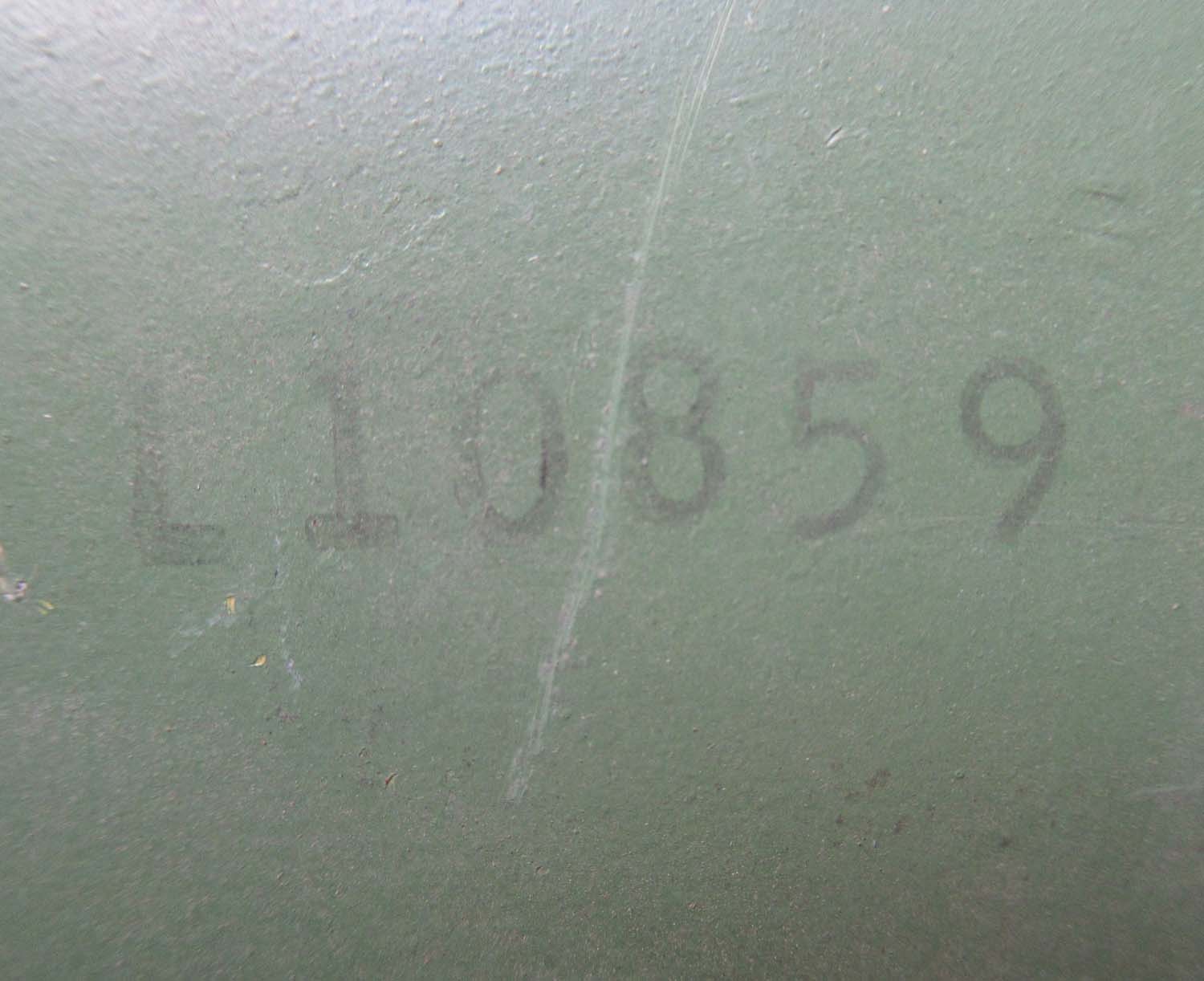
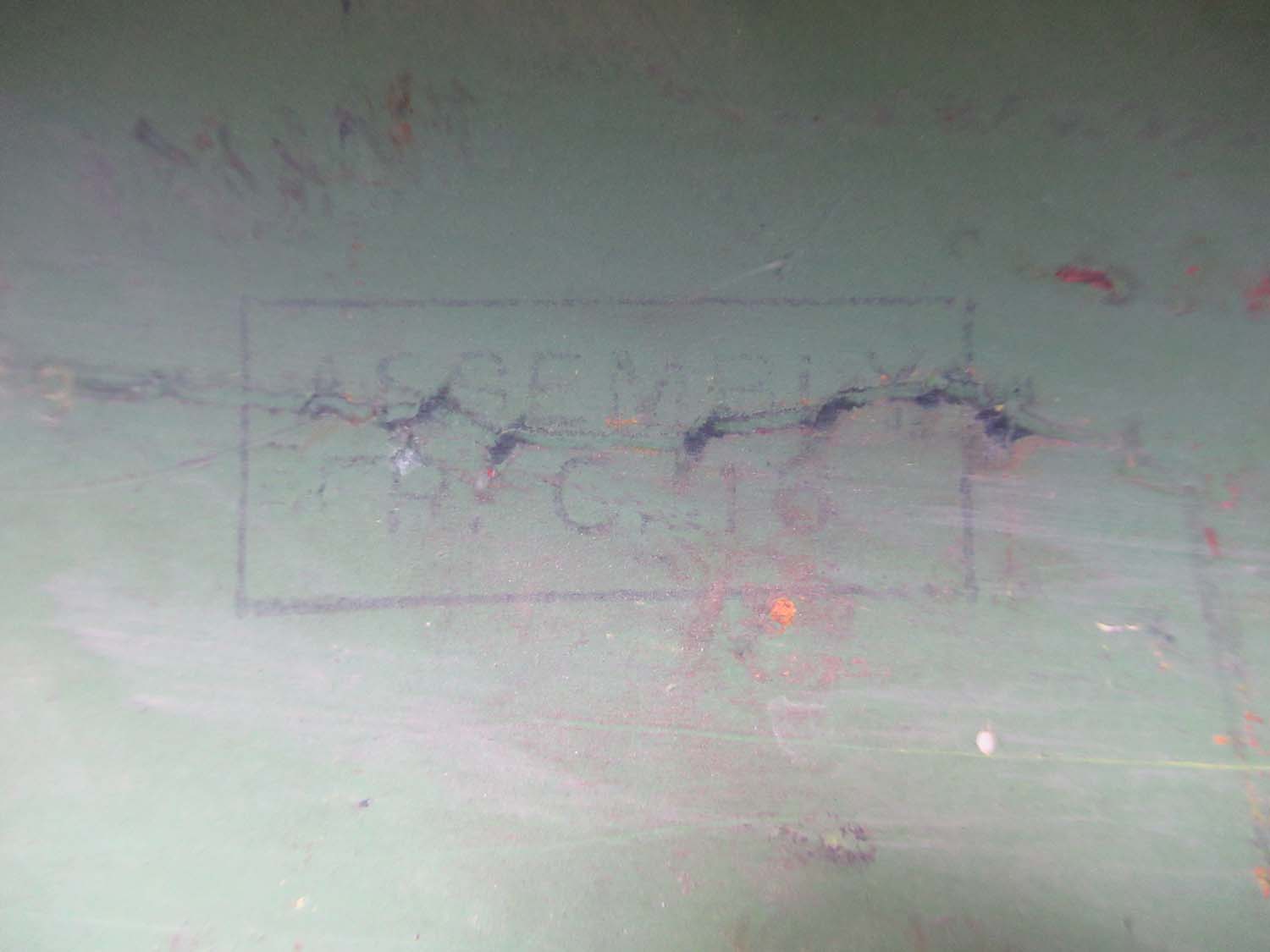 |
Lancaster FM 159 Marine Marker Stowage (pg1 air)
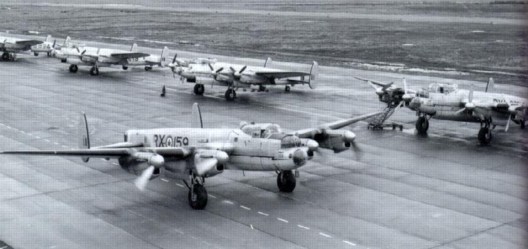
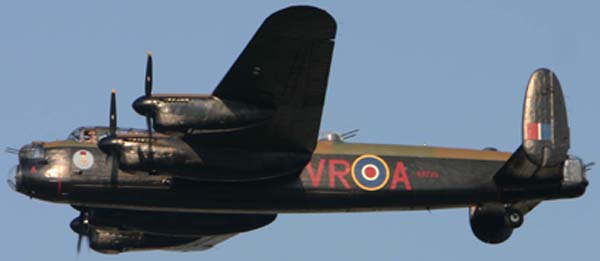
Shown above
left Lancaster FM 159 above right a MK X Lancaster in her
wartime camouflage
Here are some original marine marker flair storage holders
from
the Bazalgette Lancaster.
FM159 is one of the
7374 Avro Lancaster bomber aircraft produced during
WWII. This Lancaster was produced by Victory Aircraft Ltd in
Malton, Ontario in 1945 and made it to England too late to
serve in the war. It was flown back to Canada where it
served in reconnaissance missions through the Canadian North
for several years, until being decommissioned from service
when it was bought to serve as a war memorial in Nanton,
Alberta.
Today the FM159 is the
feature plane at the Nanton Bomber Command Museum.
Click on pictures to enlarge

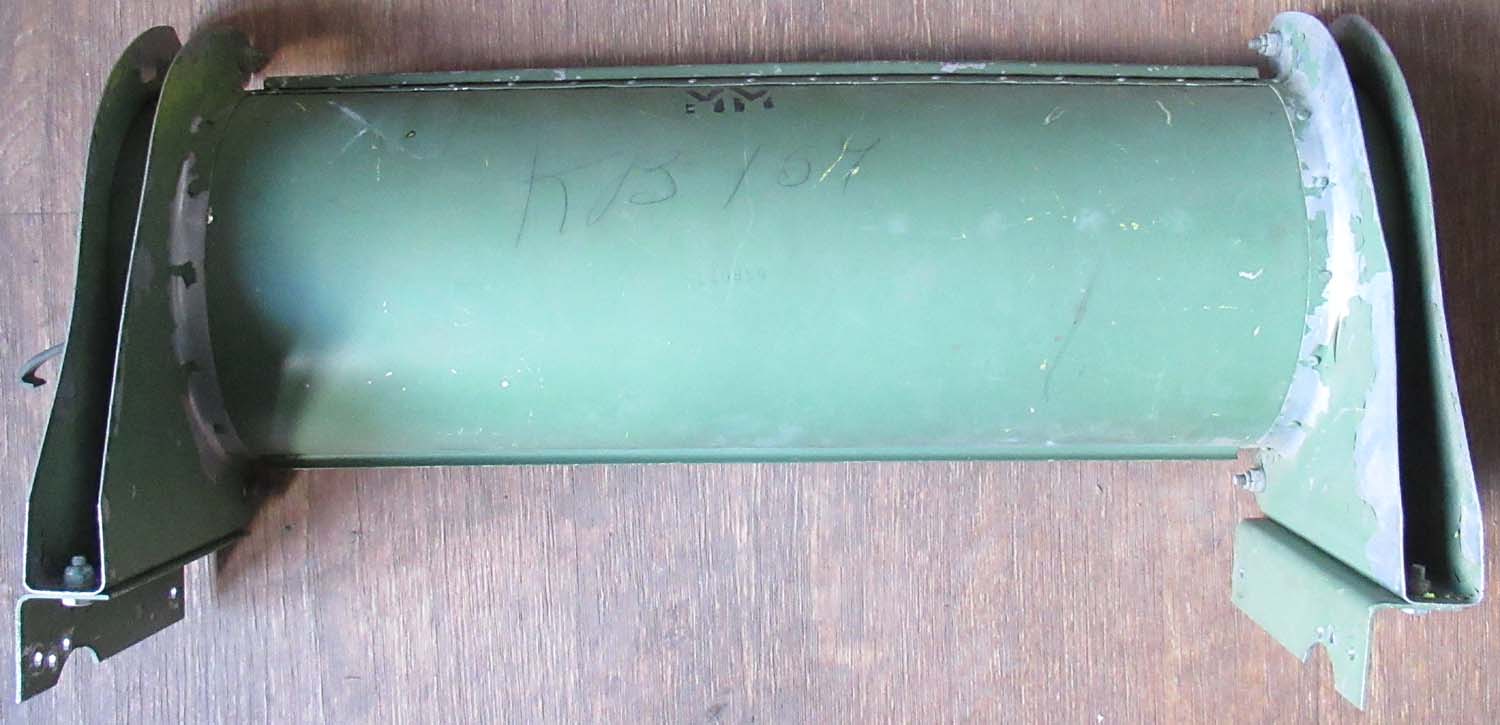

Out of stock
more wanted please
contact me |
|
Click on pictures to enlarge
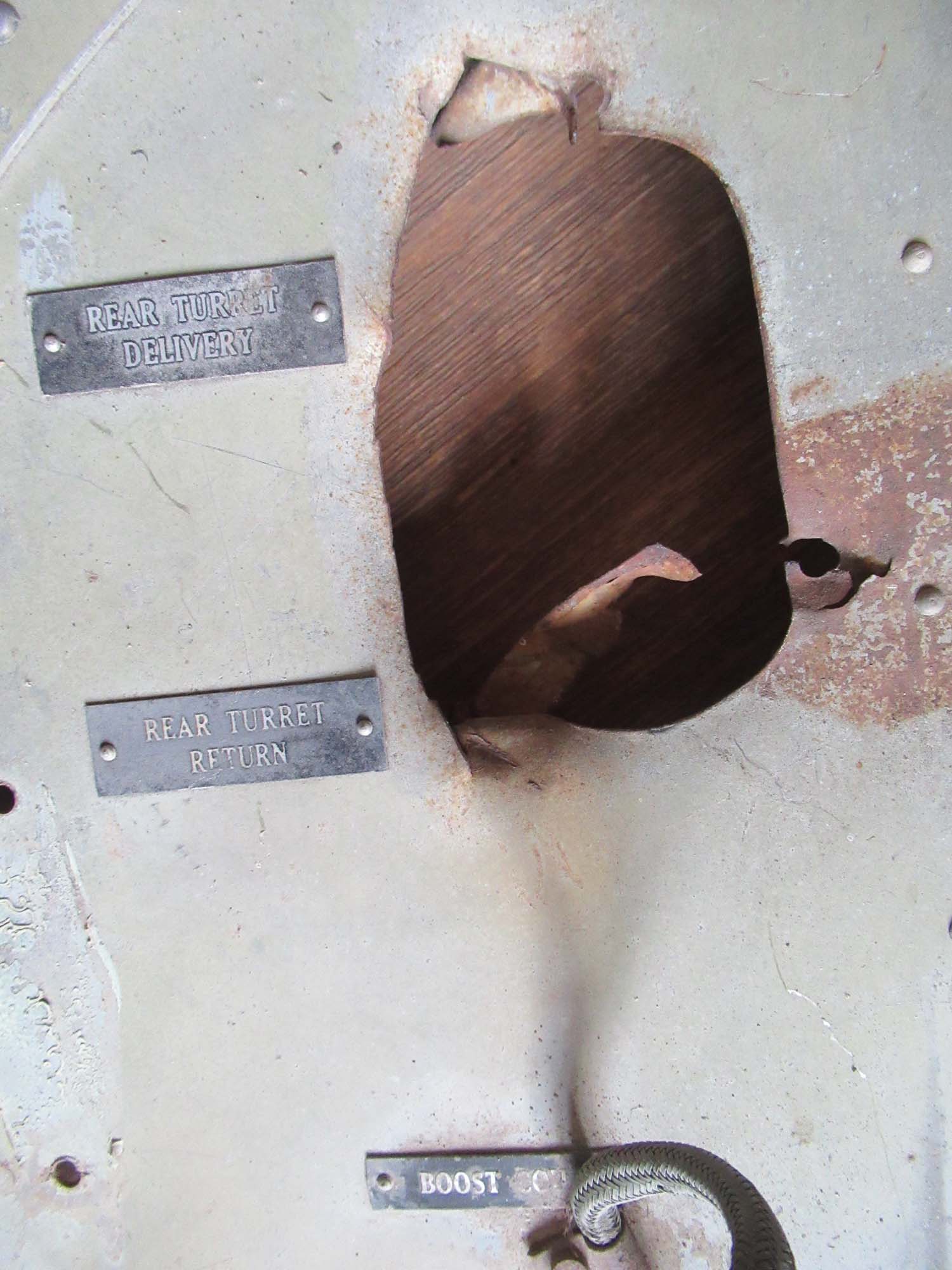
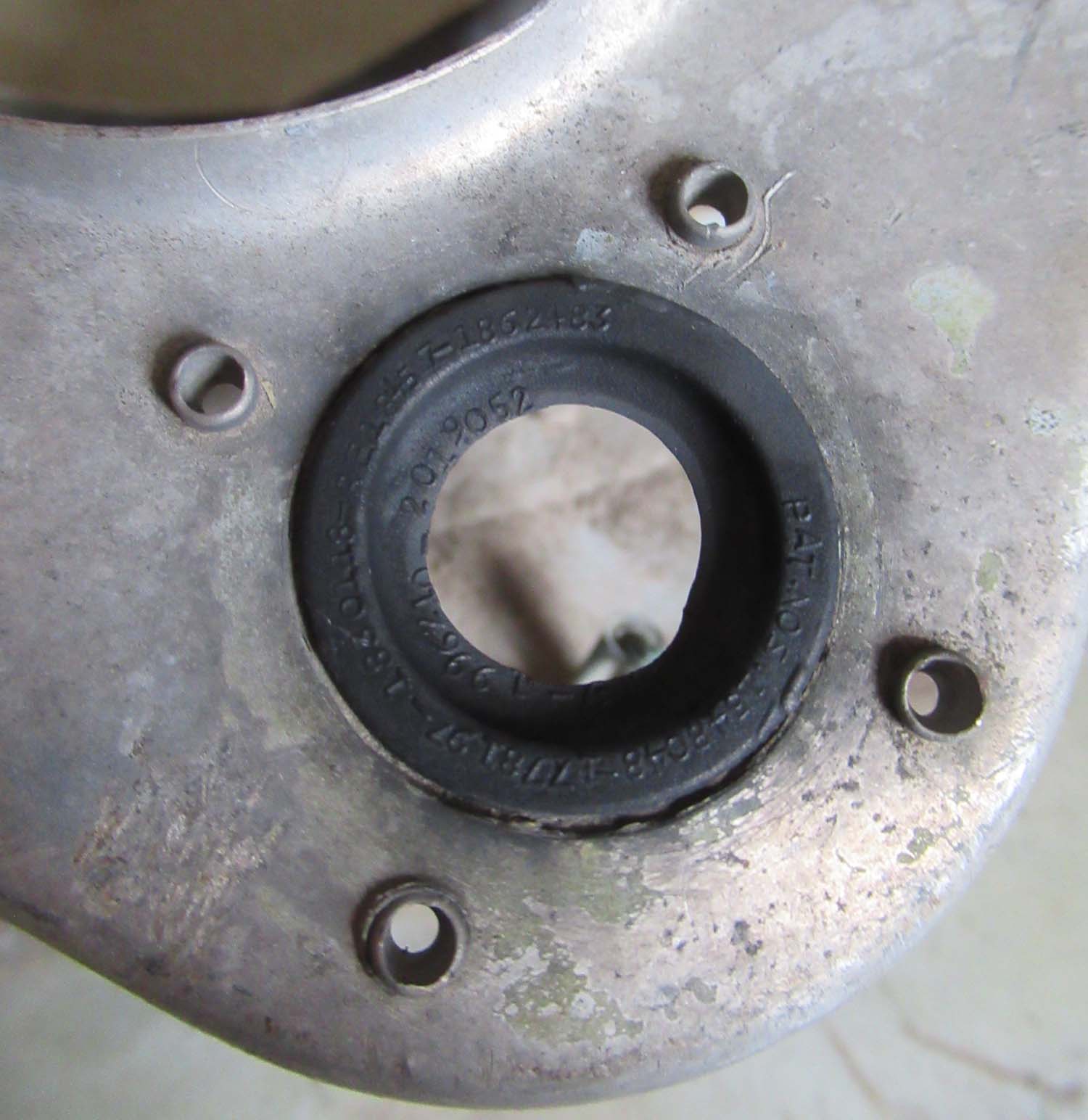
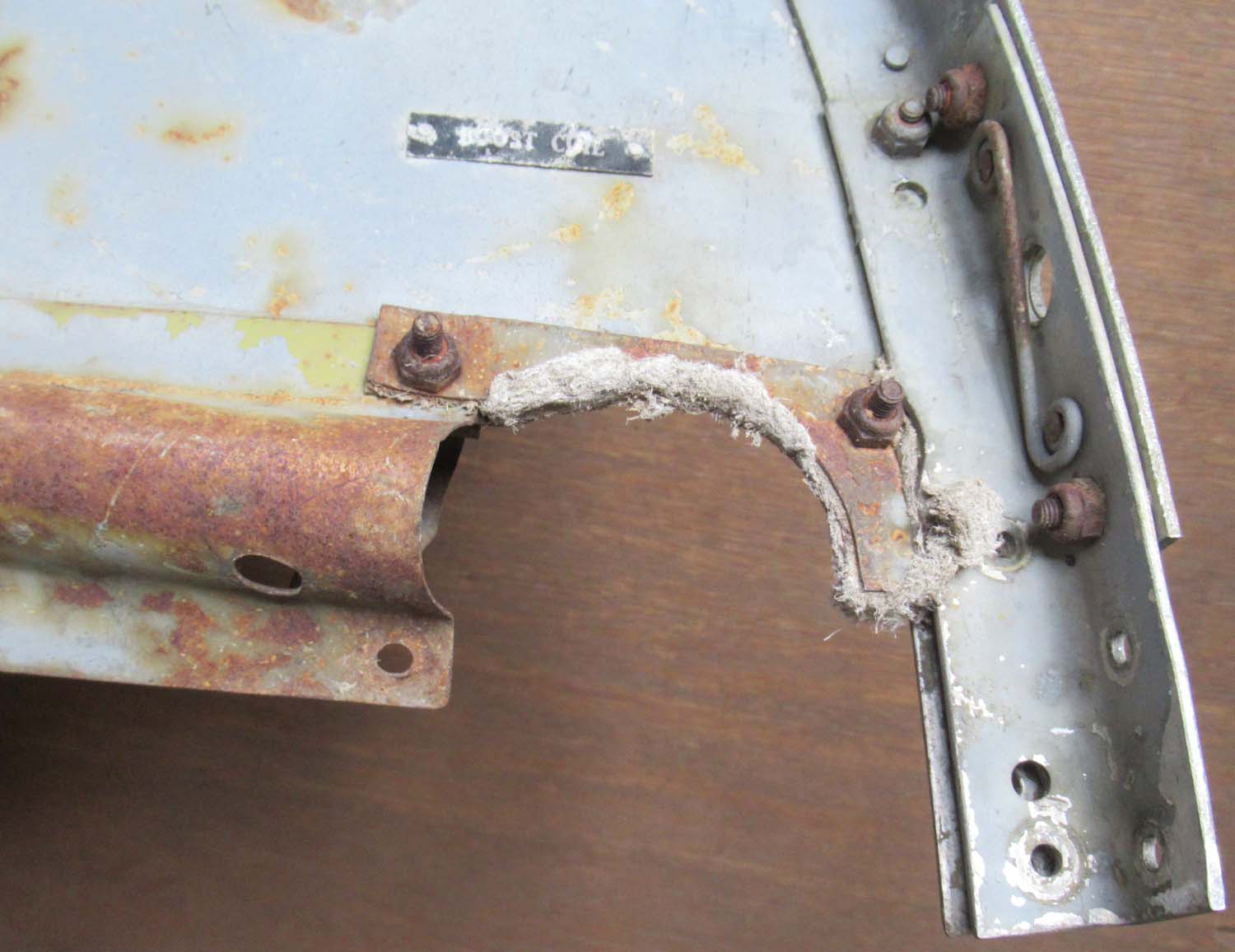 |
Lancaster Firewall (pg1 air)
Here we
have an original top section of the firewall from a
Lancaster Bomber, it is nicely marked with original labels.
The
firewall sat behind the engine and held filters and fittings
to supply hydraulic and electrical power from the engines to
the different systems in the aircraft including the turrets
Click on pictures to enlarge
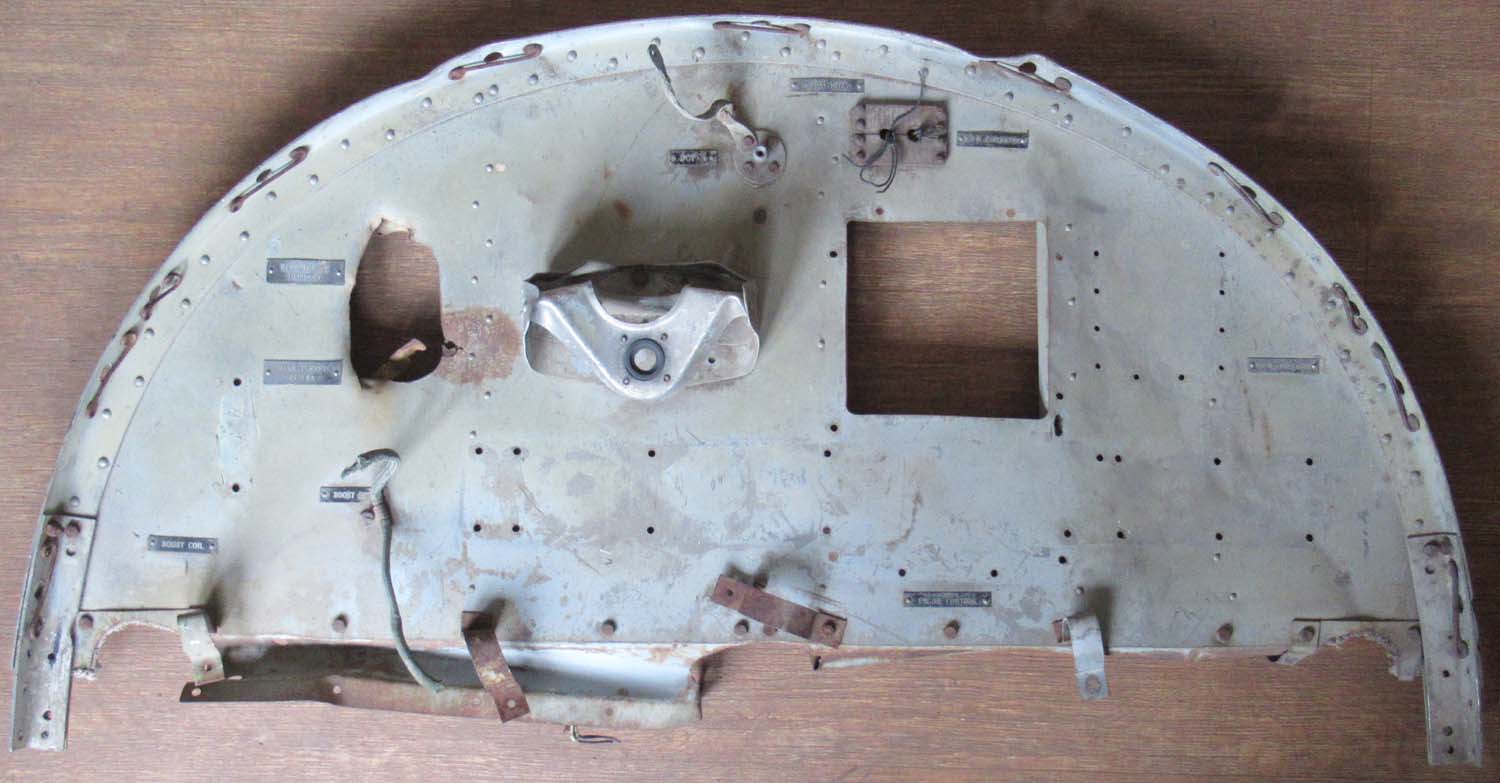


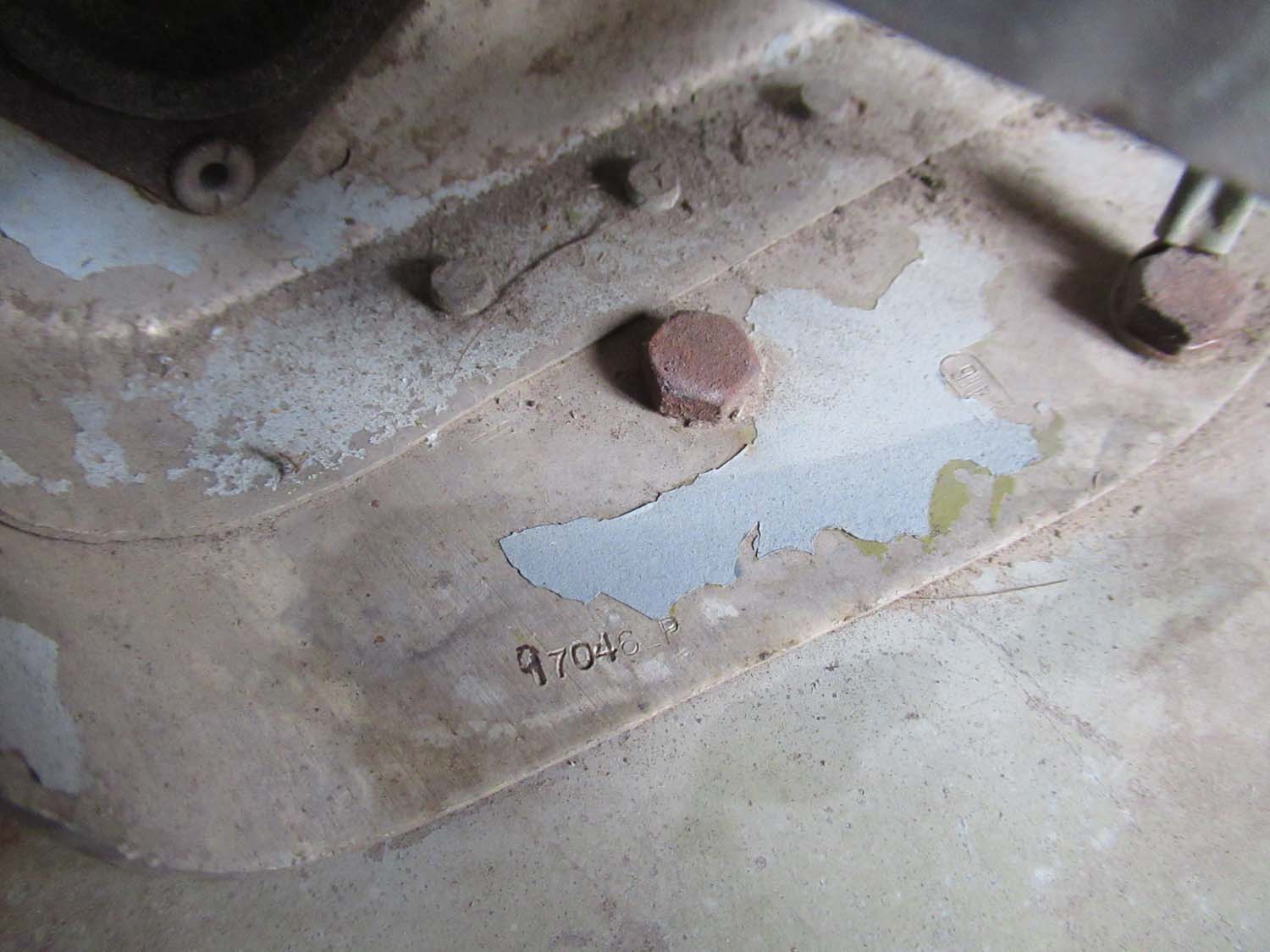
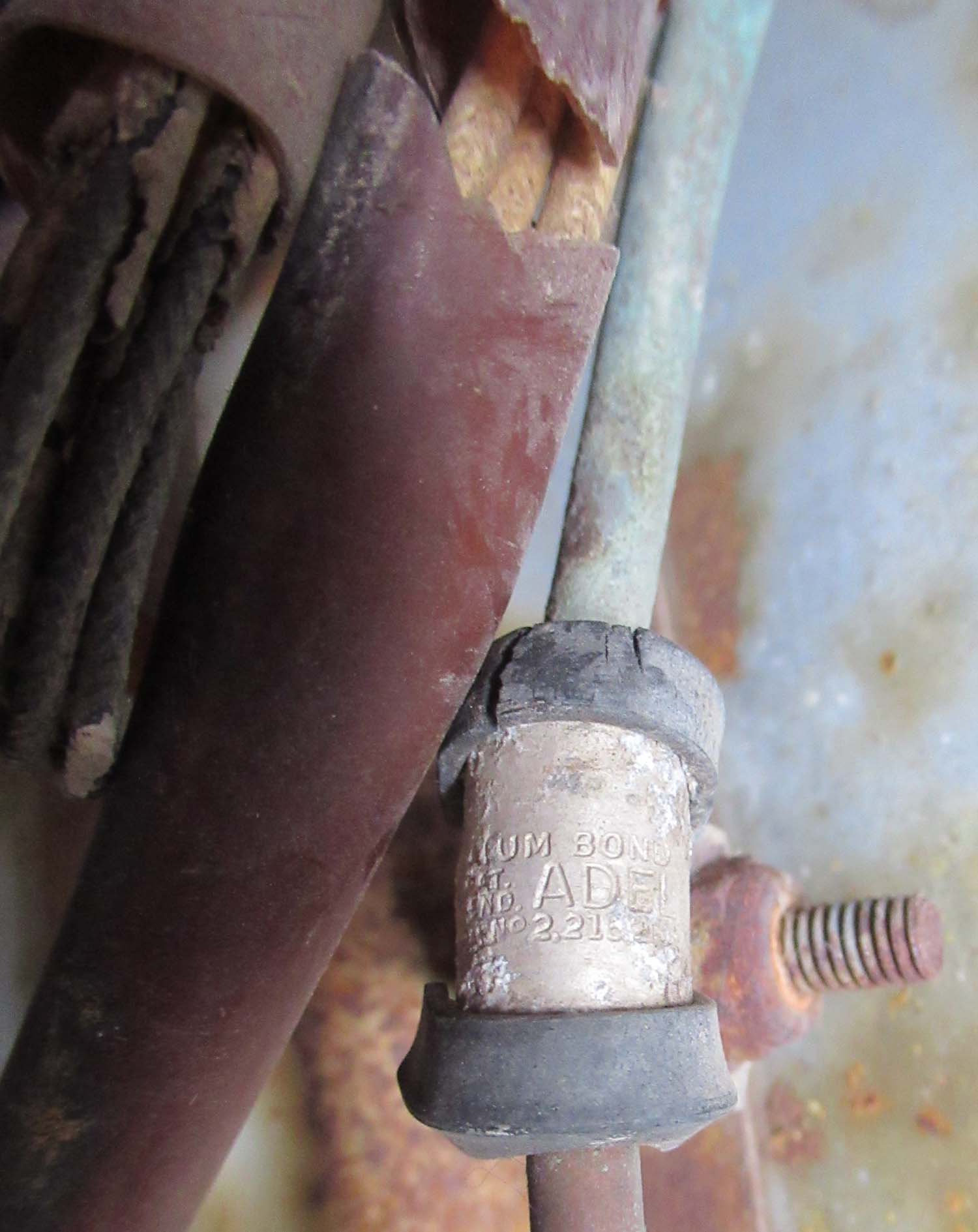
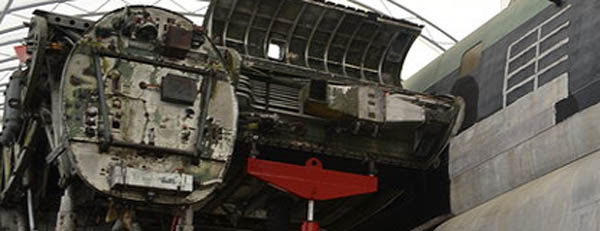
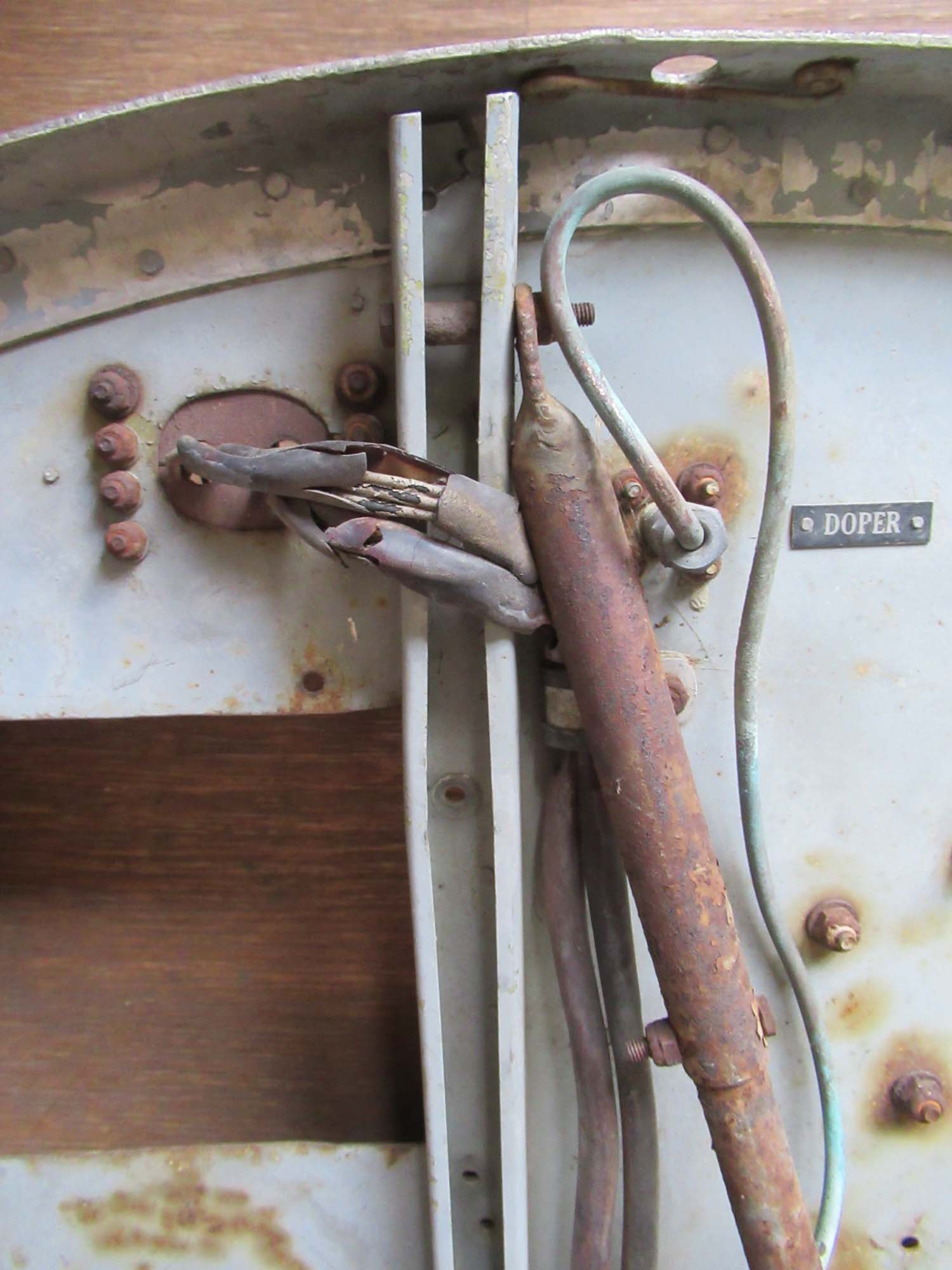
Shown above
centre the Lancaster Firewall in situ in a Lancaster.
Out of stock
more wanted please
contact me
|
|
|
 1
2 3
4
1
2 3
4
 |
